The plan was for a quick walk around the Lost Pond then back home again. But by the time we got to Epping Forest the low November sun was so bright that we got hijacked by the light and followed its trail through the trees along the Green Ride past the pond and beyond to parts of the forest we’d never been before. The light was exceptional, extra special. It was an ordinary Sunday that had suddenly become graced with a new radiance. I can’t remember a day in the forest like it, and the more I hear about climate change the more days like these become precious and poignant and we must catch them while we can. And all the while there was a gentle flutter and rustle of falling leaves.
And for once it was not just me taking the photographs. It was a shared experience. Sue had got a new phone and she was keen to try out its camera. So now our photos are mingled together on iCloud and I can’t tell which is which. Sue’s pedometer recorded 11,500 steps and I reckon that’s probably about the same number of photos we took. We were trying to catch every moment. But I won’t post them all.
We must have walked by this coppiced beech countless times before but never noticed it, hurrying past, eager to get away from the road and into the forest, but today it was spotlit and unmissable. It’s like a vase of flowers without the vase. And without the flowers. But what a great collection of stems!
Heart/Wood
Looking down through a mesh of branches to Court Hill and Great Monk Wood. The path descends steeply to Bellringer’s Hollow and the confluence of two streams running down into Loughton Brook.
A pool of bright aspen leaves like golden sunlight tokens.
Every so often I stop and listen for the sound of falling leaves.
A talking tree and its shadow hieroglyph.
A walking tree and its outstretched branches.
A catching tree and its fingers full of sunlight.
A handful of shade
A chorus of pollards
A conference of shadows
A congregation of beechmast
A viewfinder
A hollow tree on the bright side,
a hollow tree on the dark side,
both on the far side of Great Monk Wood.
We followed the Green Ride over Goldings Hill and entered a new found land. We’d not been in this neck of the woods before, so it felt fresh and undiscovered. But then even the familiar parts of the forest can seem different every time. Its a never-ending ever-changing shapeshifting antidote to the city, it’s a green thought in a green shade, a green fuse loosely tied in a gently unravelling green knot.
It’s where we come to breathe.
And today the air felt fresher on this side of Goldings Hill, fresher, brighter, lighter and the sun was especially magical. Ever since it’s been dark in comparison. This was the last time we saw the light.
And then this. This was the last time we saw the light. A bright orange carpet criss-crossed with the dark shadows of hornbeam and beech under a blue, blue sky. And the gentle sound of falling leaves.
We were on Furze Ground and from somewhere behind us, beyond the bracken and gorse and hidden under the trees, came the sing-song sound of children’s voices. My first (hopeful) thought was a rope swing! But no, the cries were not swing sounds, more feet-on-the-ground sort of sounds. And then I remembered the chapter in Gossip From The Forest where Sara Maitland goes walking in Epping Forest with Robert Macfarlane.
Somehow it felt as though we were always somehow on the periphery. Macfarlane later described this slightly distanced feeling: it was, he said, as though ‘we were really wandering in a memory or wish-fulfilment of the ancient forest, which we wanted to be far wider and deeper than the actual forest was’. Gradually it dawned on me that this is exactly what Epping Forest is: it is a dream or memory of ancient woodland. A feeling of barefoot childlike enchantment is an entirely appropriate response to Epping Forest. This is a forest which is the way it is and where it is in order to replicate the pleasures and playfulness of lost forests, lost childhood.
Then we found the swing.
In one of the more isolated parts of our walk, we came into an open glade, the ground smooth and red-gold under a massive beech tree. The wide canopy roofed the whole space so that we were sheltered within a green tent. And there someone had managed to tie a rope to a branch at least thirty feet above the clearing, although it was one of the lowest solid branches of the tree; the rope hung down straight into the middle of the green chamber. This was impressive, and it was hard to work out how it had been accomplished. The tree trunk was too smooth to climb and too fat to swarm. I like to think that whoever created the swing did it by shooting an arrow from a home-made bow, with a light lead cord attached, and then used that to haul up and secure the thicker rope, but I am guessing. The seat of the swing was a stout piece of straight dead wood, attached to the bottom of the rope. In any event, it was a skilled, complex task obviously requiring planning, knowledge and creative imagination. The swing was sturdy; we both swung on it and it supported our adult weight through long arcs of freedom…
For me there was a great joy in finding the swing. Apart from the pure physical delight of swinging on such a long rope, it felt like a sign that there are still children in the forests.
Gossip From The Forest: Sara Maitland
And overgrown children too. I’m a sucker for a rope swing. I can’t resist them. I’d love to know where this one is. Rereading these words by Sara Maitland I was taken back to Hampstead Heath and another rope swing that I wrote about once before…
We’d discovered it by chance one day close by here. We practically walked into it. A short piece of branchwood appeared before us, tied to a huge length of rope suspended from high up in the treetop. We took it in turns to straddle the branchwood seat and swung in great, long, slow arcs over the woodland floor. We were so mesmerised and delighted we failed to notice we were being watched. A band of feral forest children had emerged from the woods and demanded to know why we were using their swing. The smallest child reached up, as if to pluck a leaf but pulled on a twig which lowered a branch enough for him to spring up onto it, and from there he climbed confidently up to the top of the tree. Just as we finished swinging he hauled the rope up into the heights to deny us any more joyriding.
I can still remember the rhythm of that rope swing, the giddy to and fro of its spinning pendulum is echoed by these bright flickering tree-shadows as we come down the Ditches Ride to Hangboy Slade.
And a torrent of frilly, frothy fungus, tumbling down the rapids of a decaying holly tree.
A leaf returning to earth.
We came to the edge of the wood at Debden Green and skirted along Gregson’s Ride,
to the sound of falling leaves.
After the freedom of the forest we had entered a liminal zone of grass cuttings and garden fences, where homeowners might step outside for a breath of fresh air and a momentary transformation.
Oh how wonderful to have the forest on your doorstep, to step out through your garden gate into the arms of a venerable pollarded beech, to climb inside its hollow trunk and disappear into wonderland.
Eventually we found our way back to the Green Ride and retraced our steps.
This was the last time we saw the light.
More magnificent beech pollards; these at Golding’s Hill.
Then off the main ride and into the trees, feeling our way through brush and scrub looking for the forgotten path into the forest to the clearing of the Lost Pond, and its more familiar beech pollards.
We lingered by the water’s edge and paused for reflection. We’d come by Bellringer’s Hollow and just then, the sound of a bell rang out but there was no church belltower, it was not striking the hour. The sound echoed over the water from two marijuana smokers playing on a single Tibetan singing bowl.
And the sound of falling leaves.
No visit to the Lost Pond is ever complete without saying hello to my favourite coppard.
Copper and verdigris,
the last time we saw the light,
and the sound of falling leaves us wanting more…
※
Ambresbury Banks / Chasing Golden Light / Coppard /
Epping Snow / In Epping Forest / Pulpit Oak / Two Days In Epping Forest



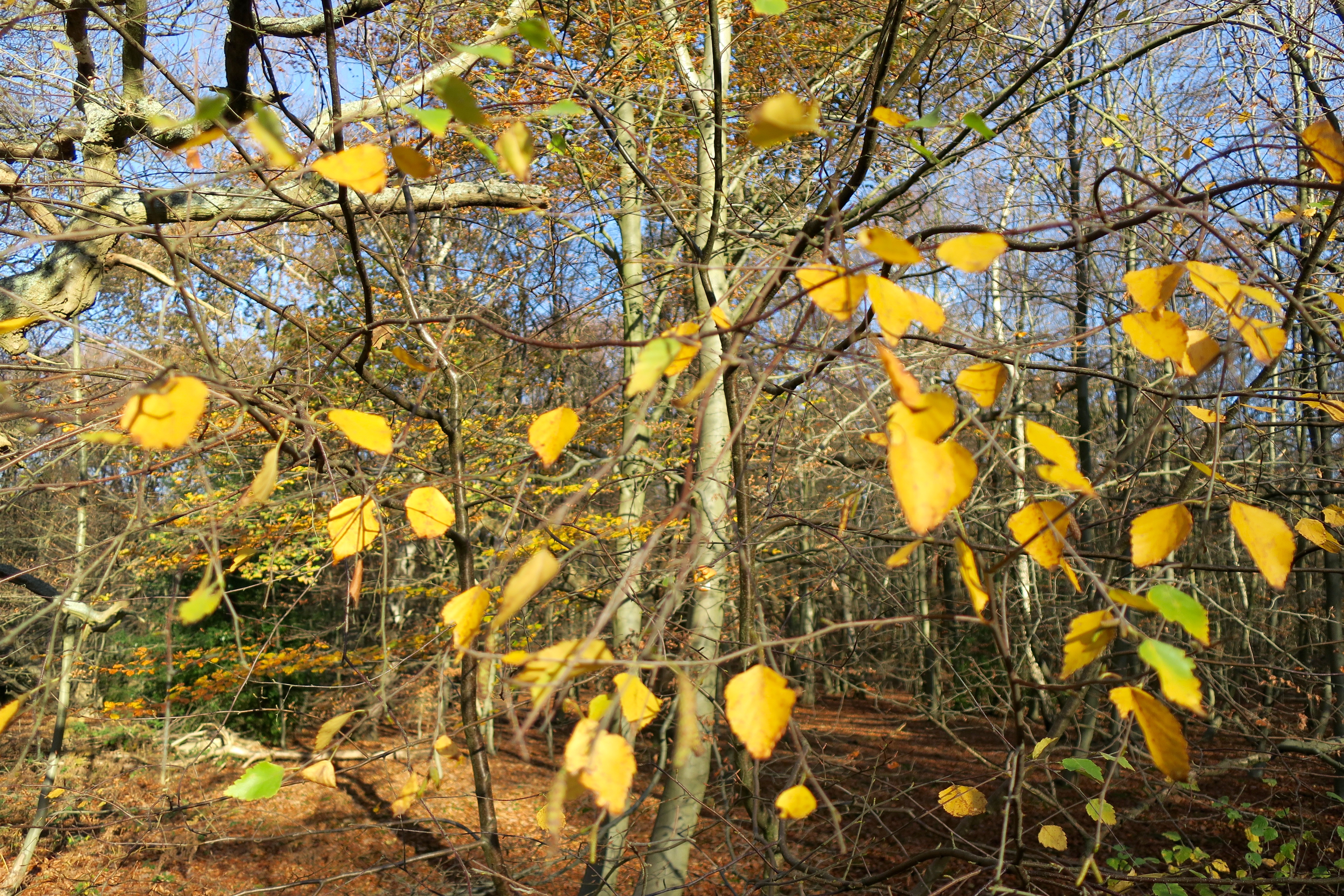
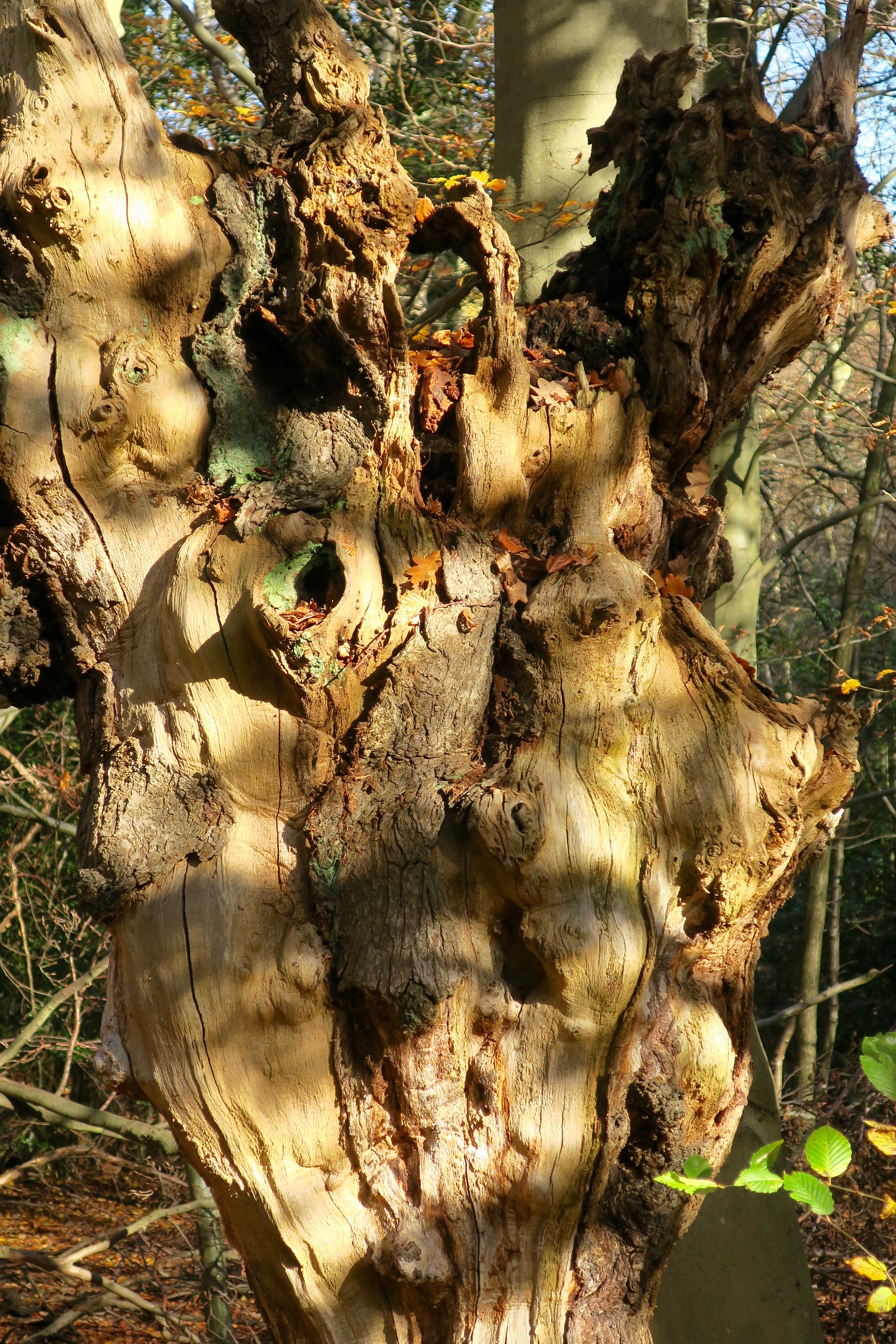
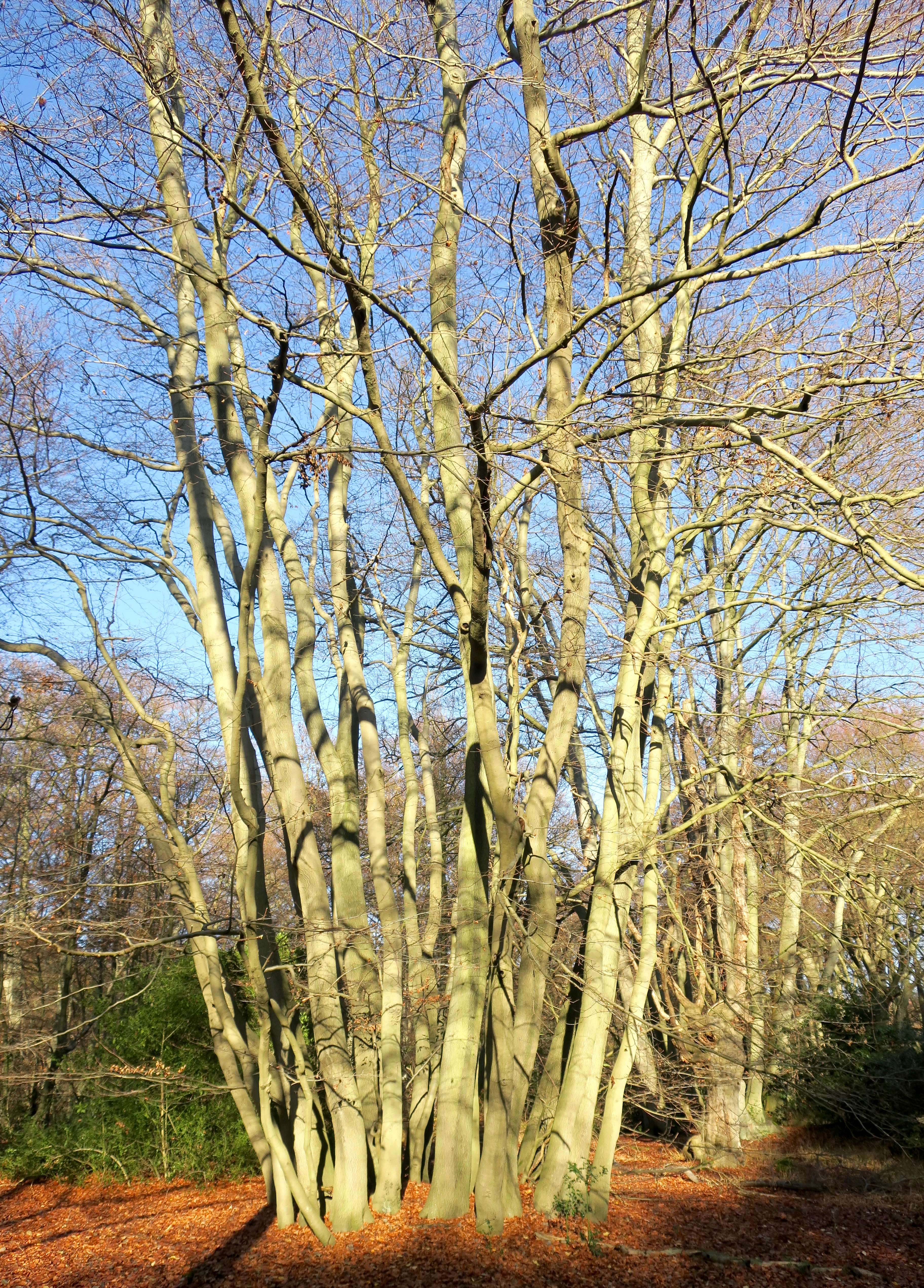
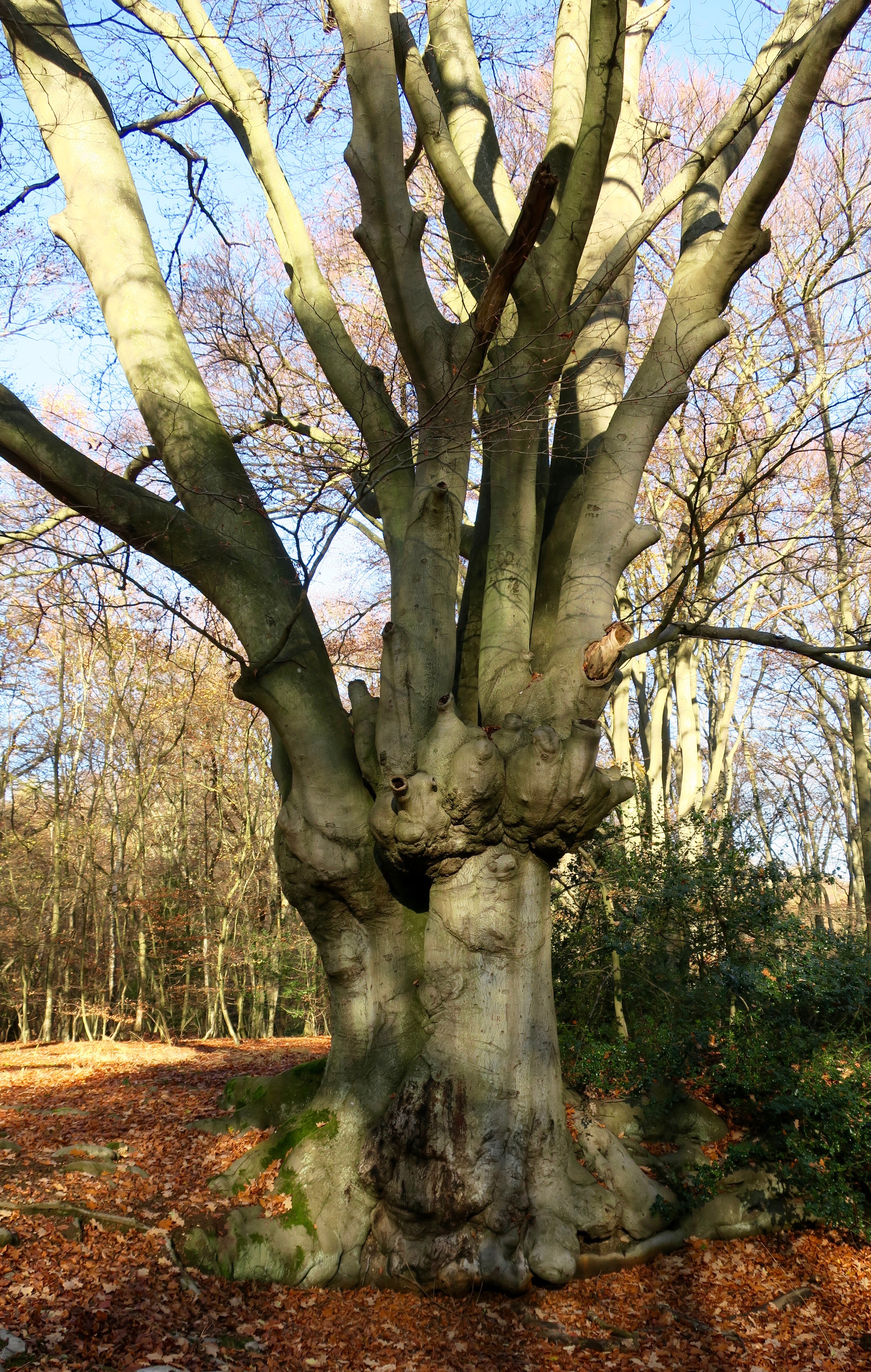
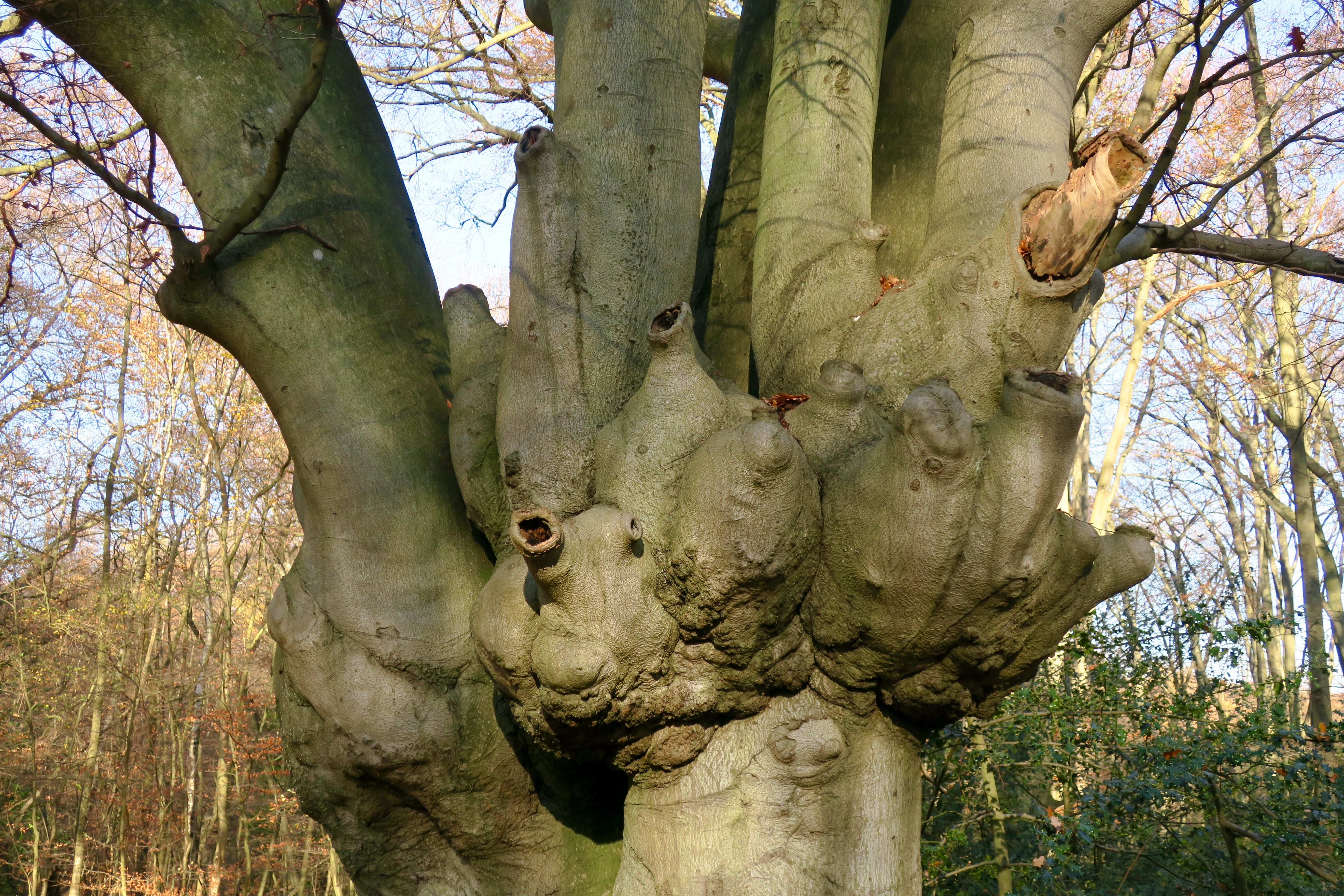
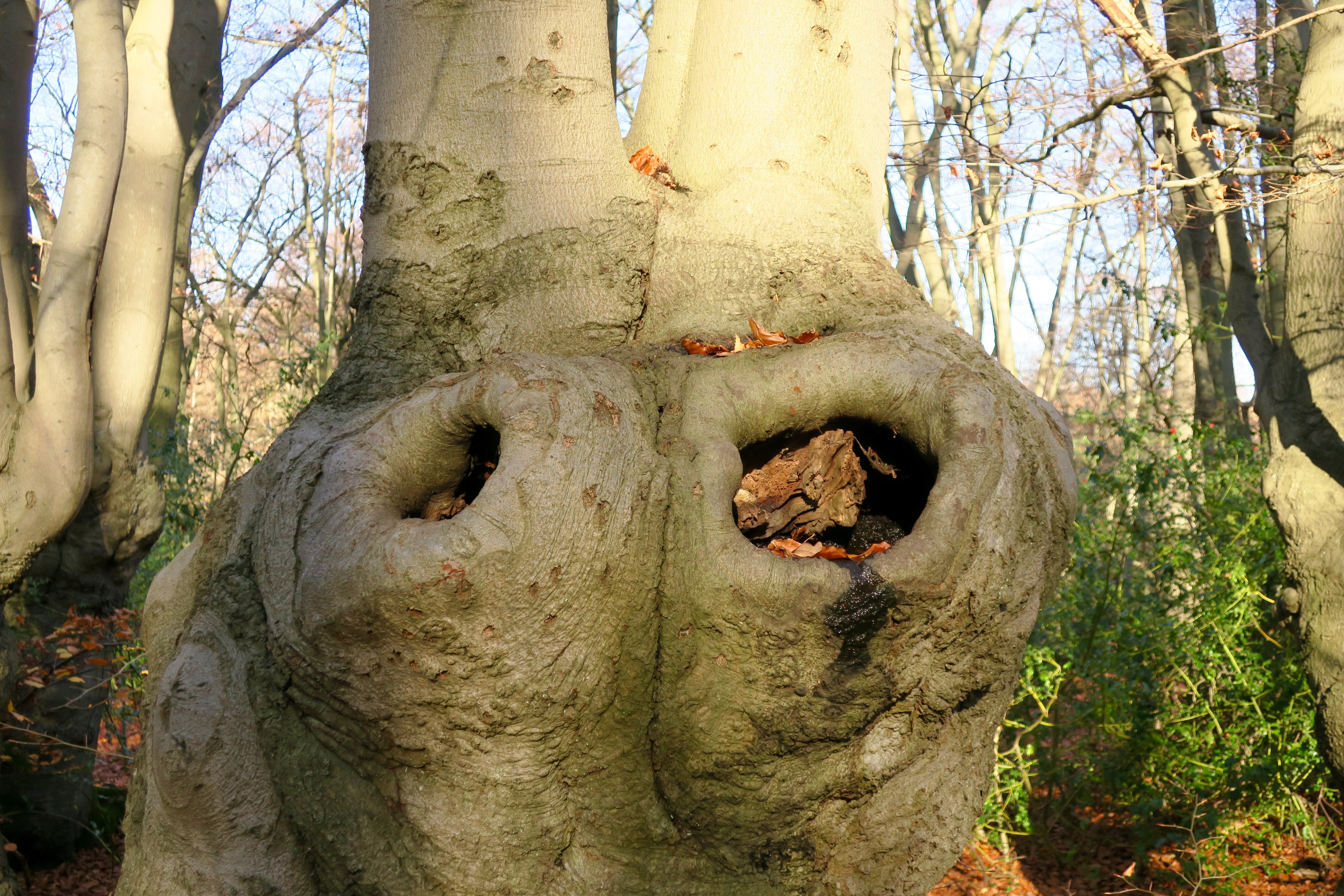

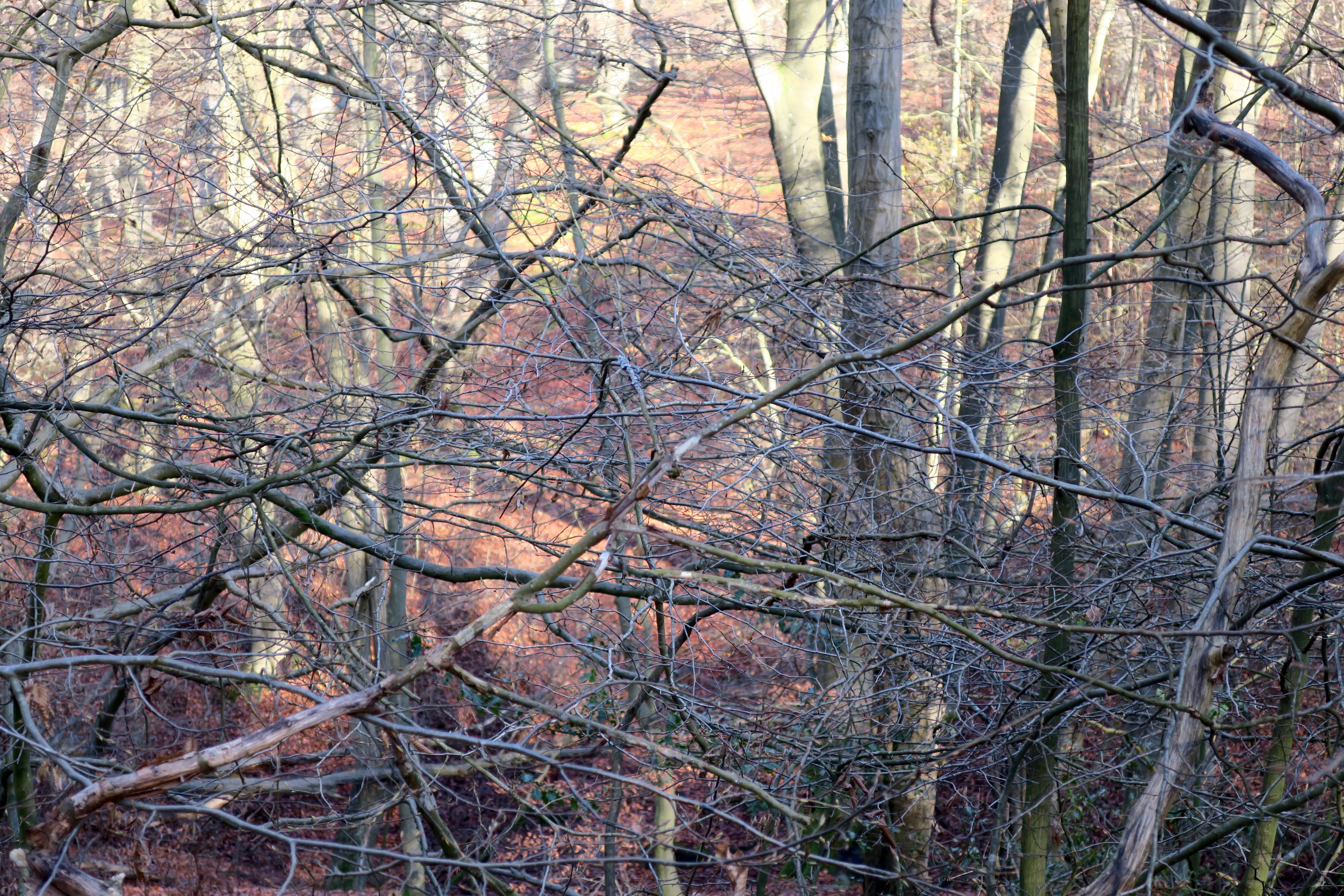
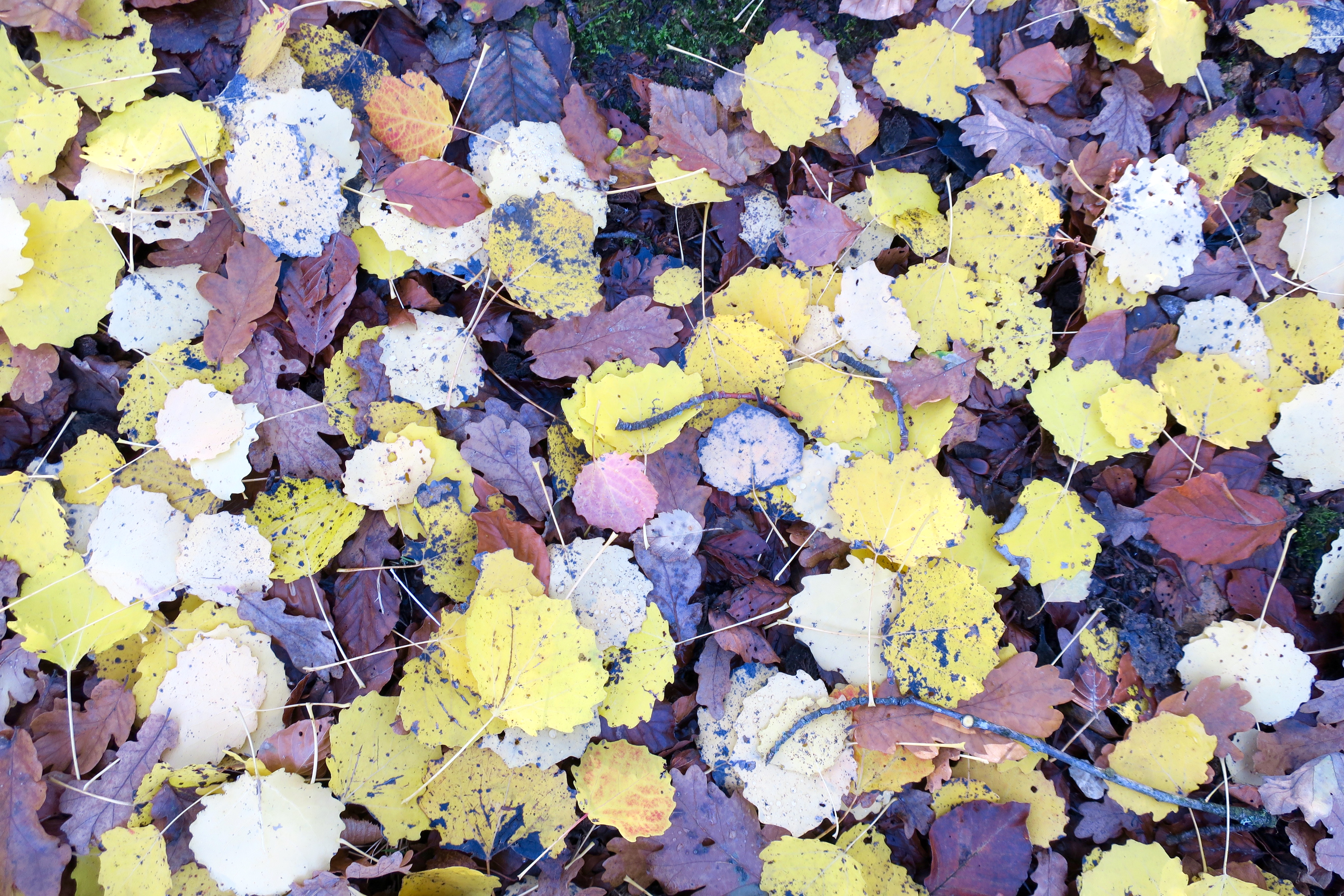
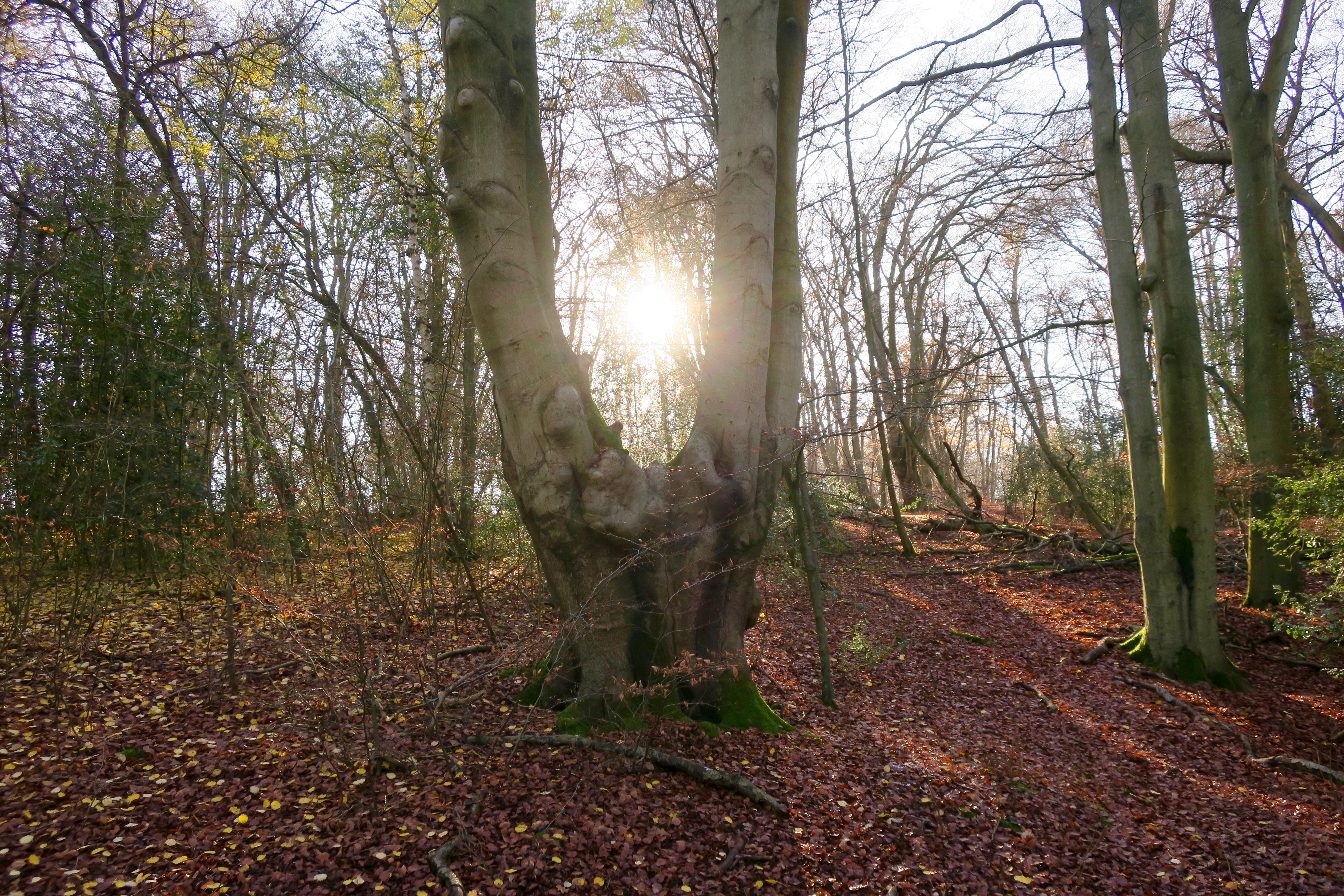

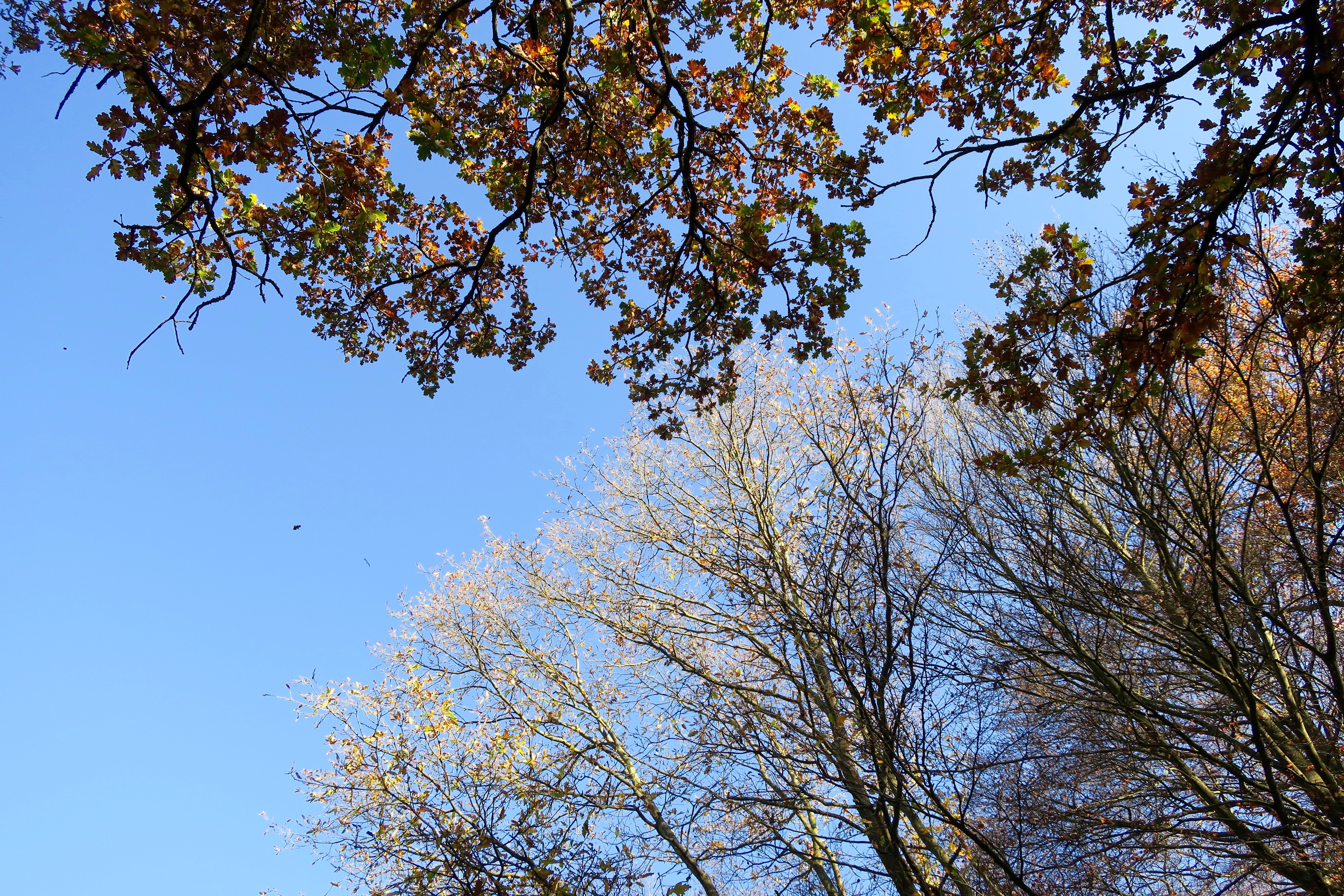
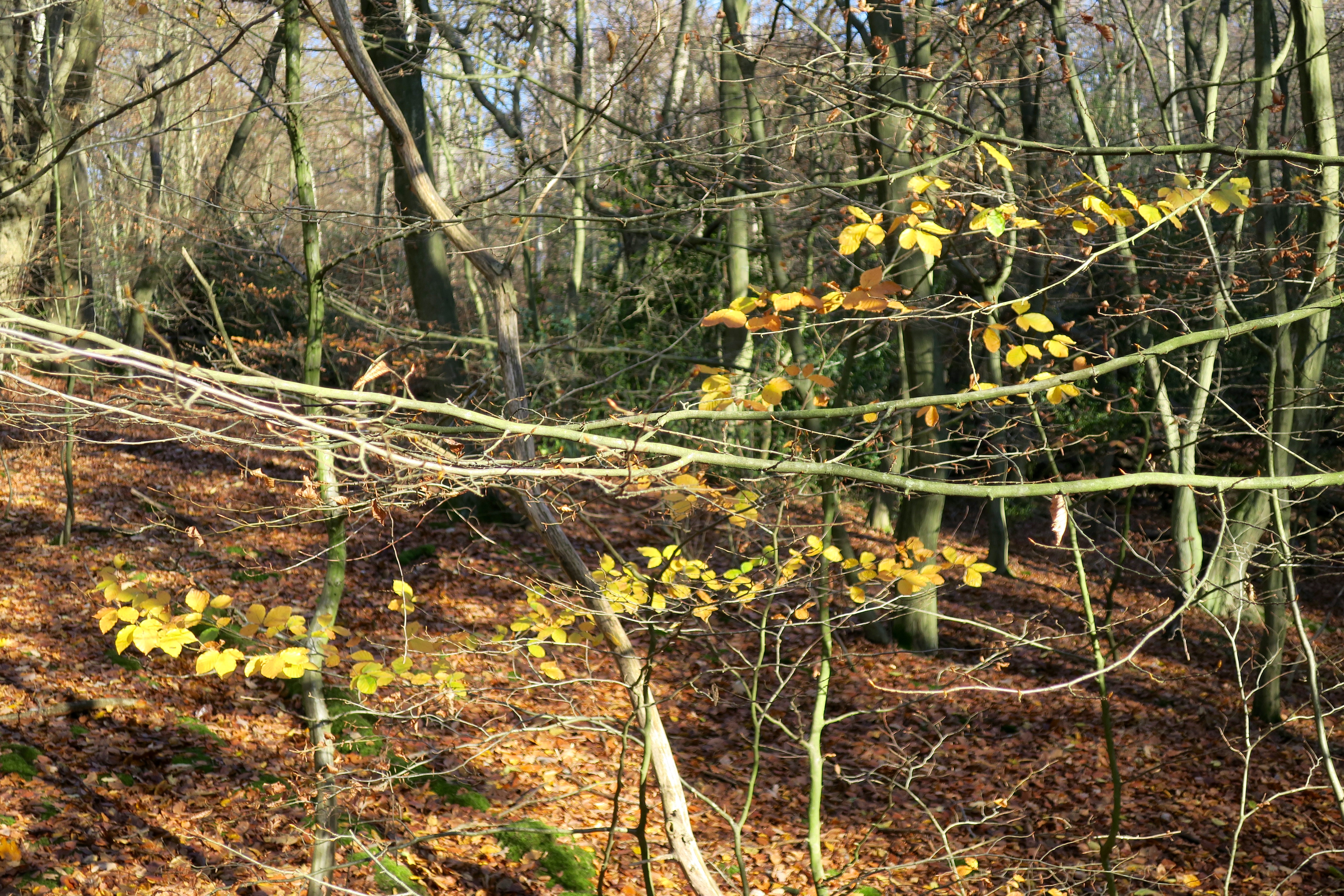
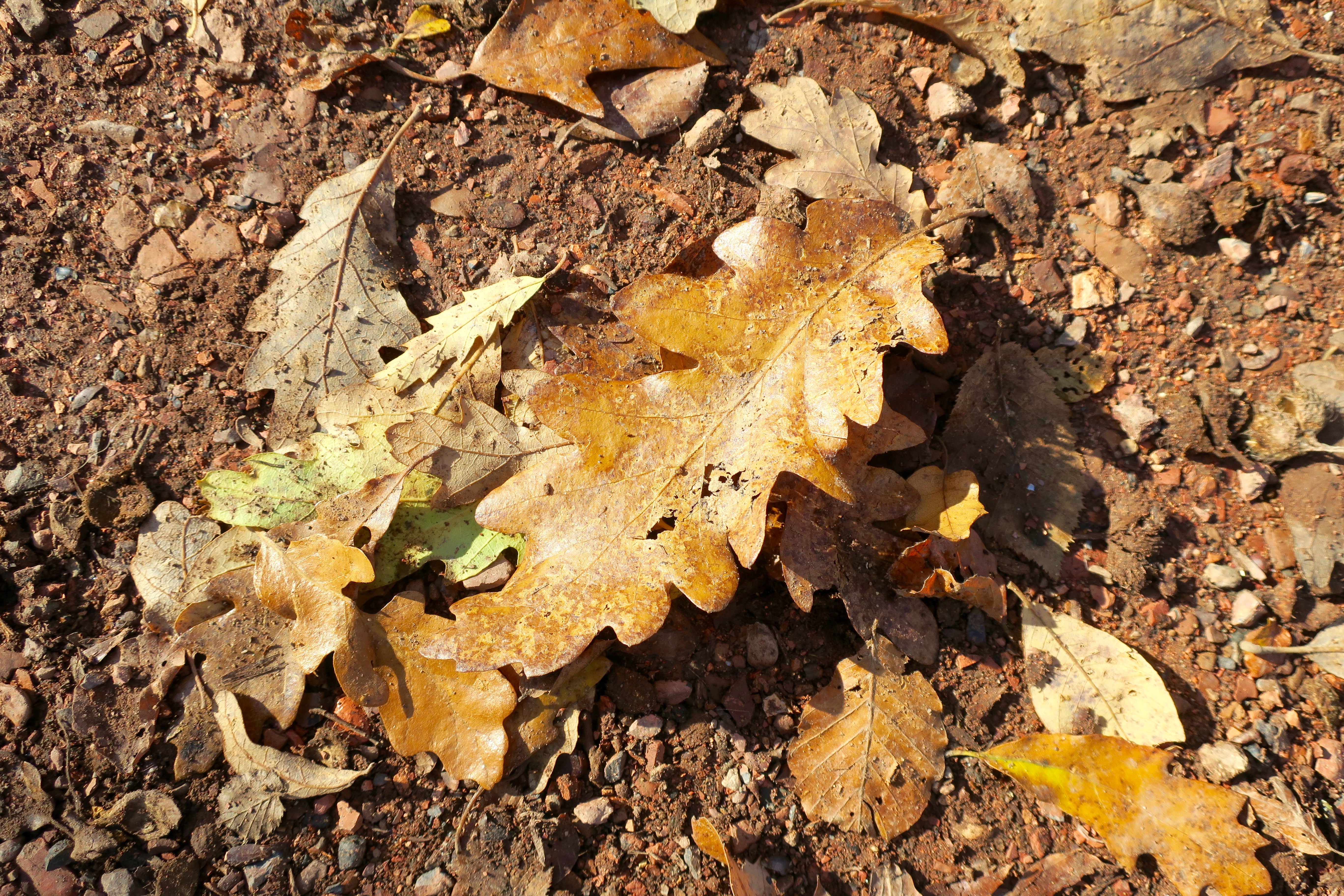
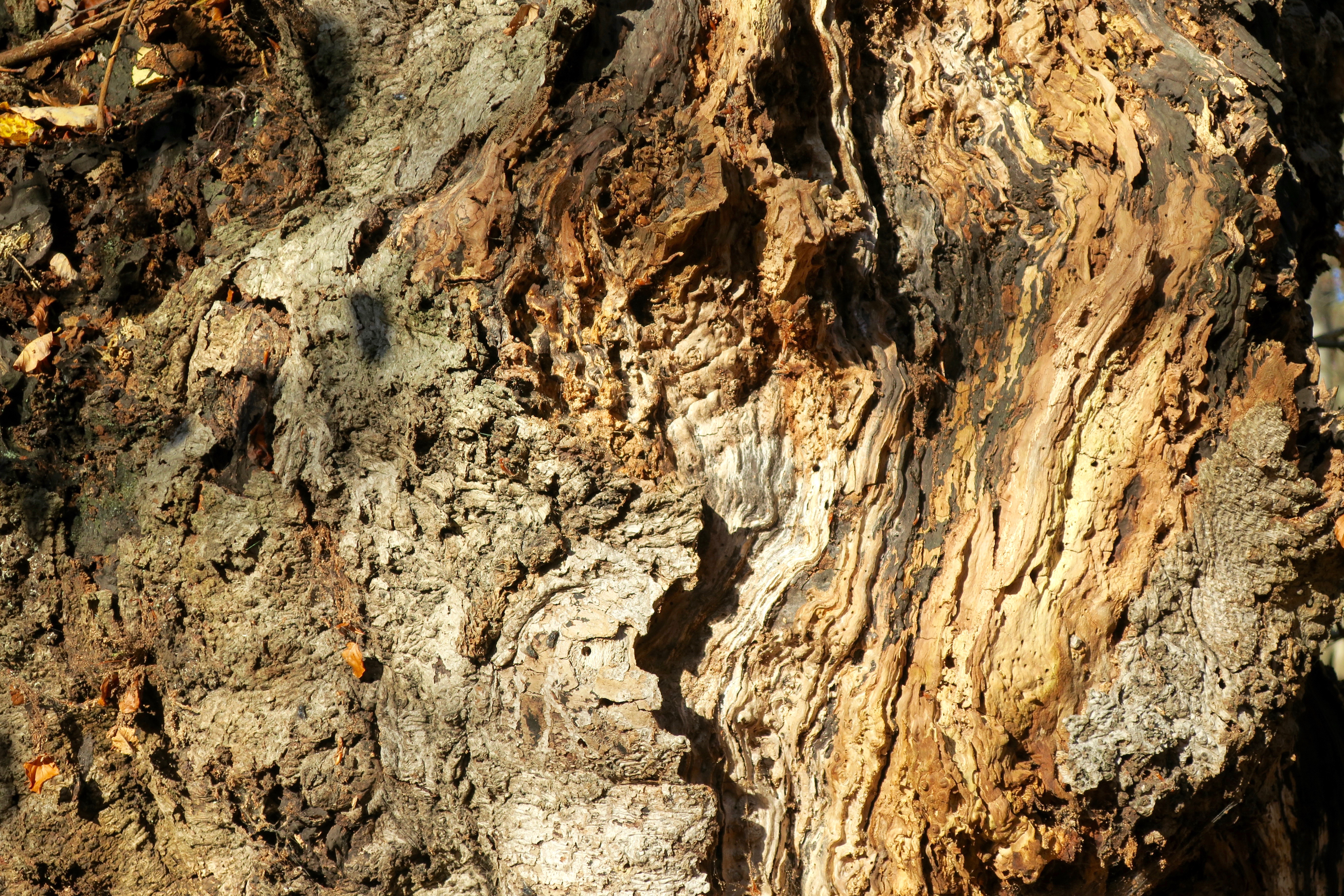
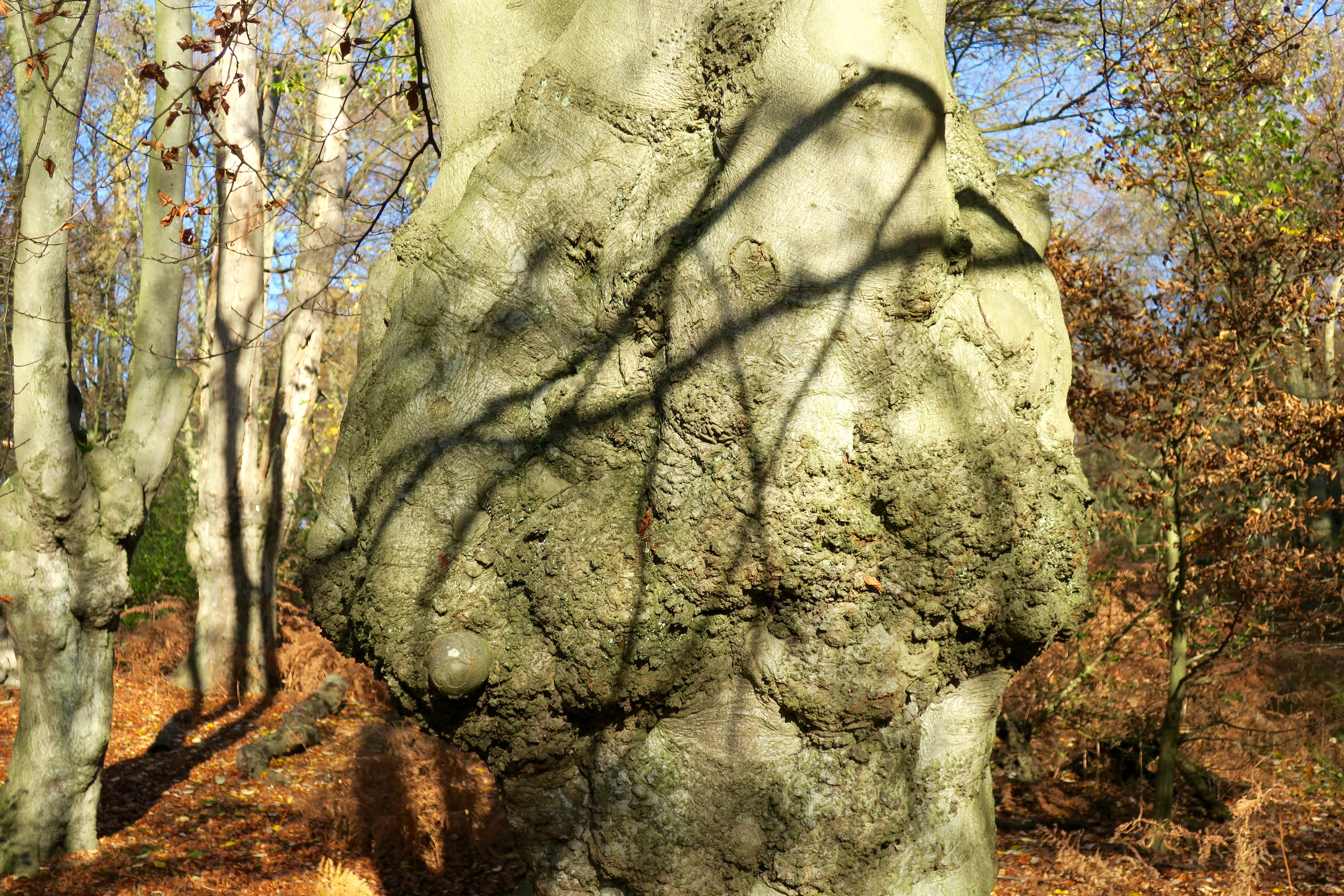
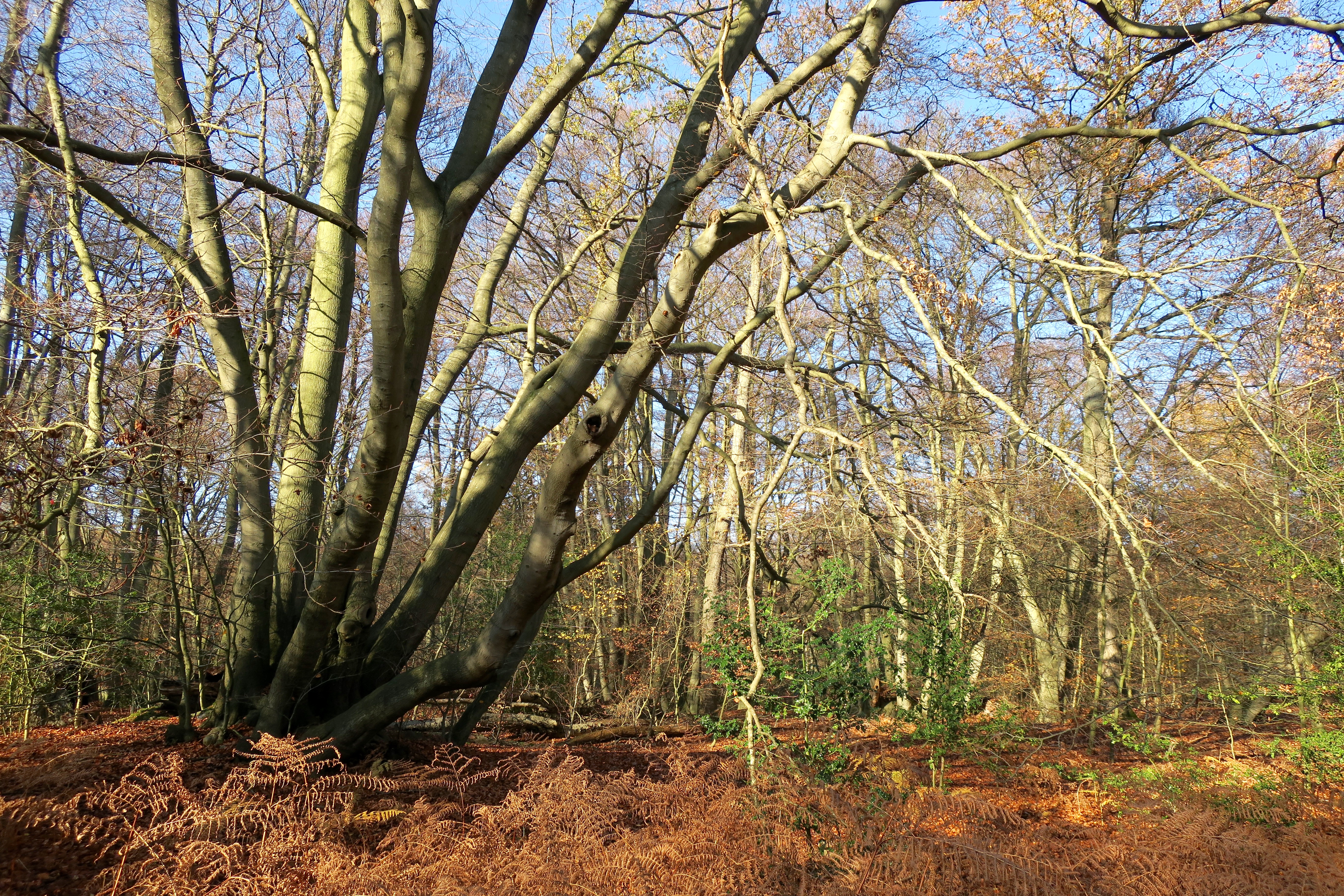
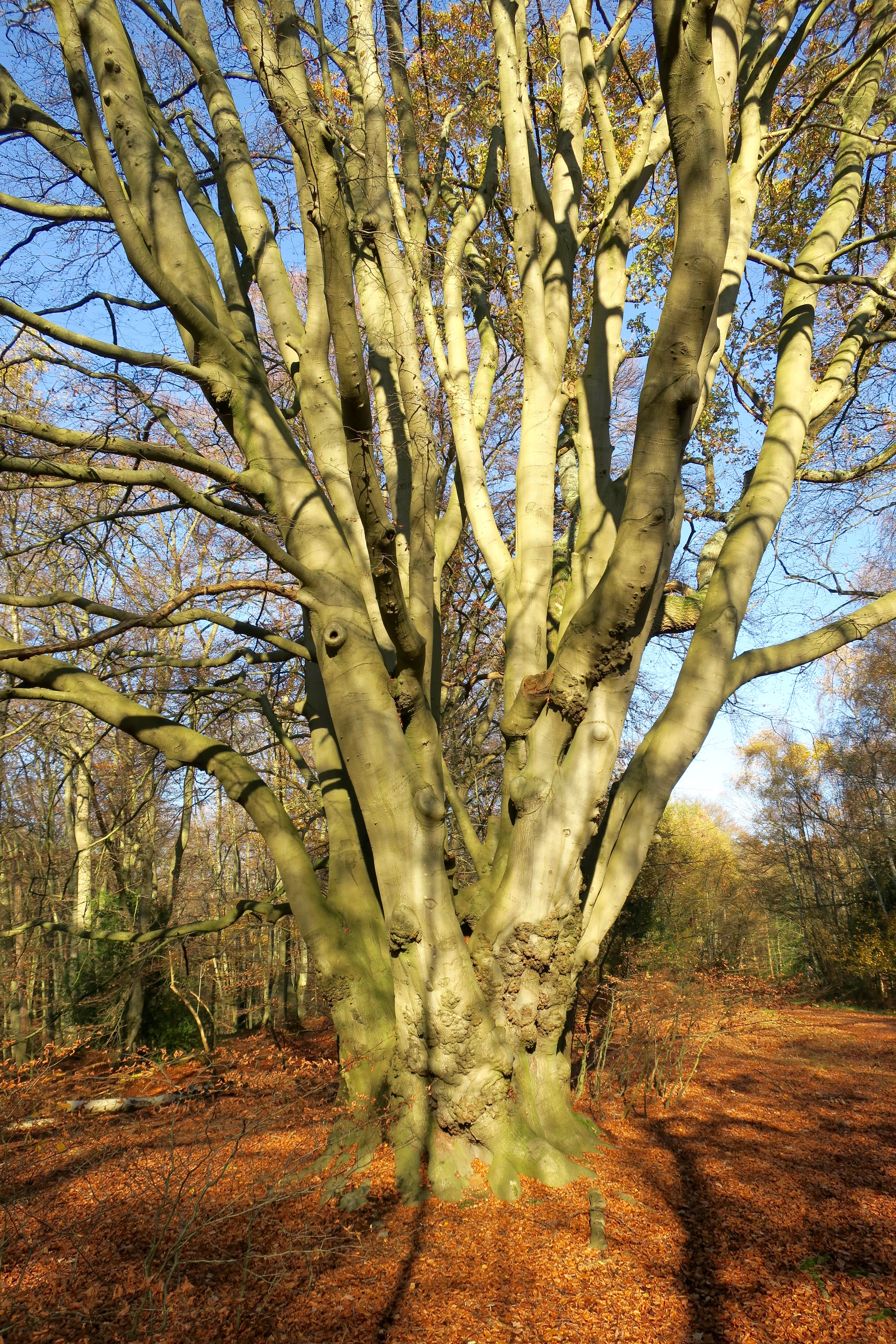

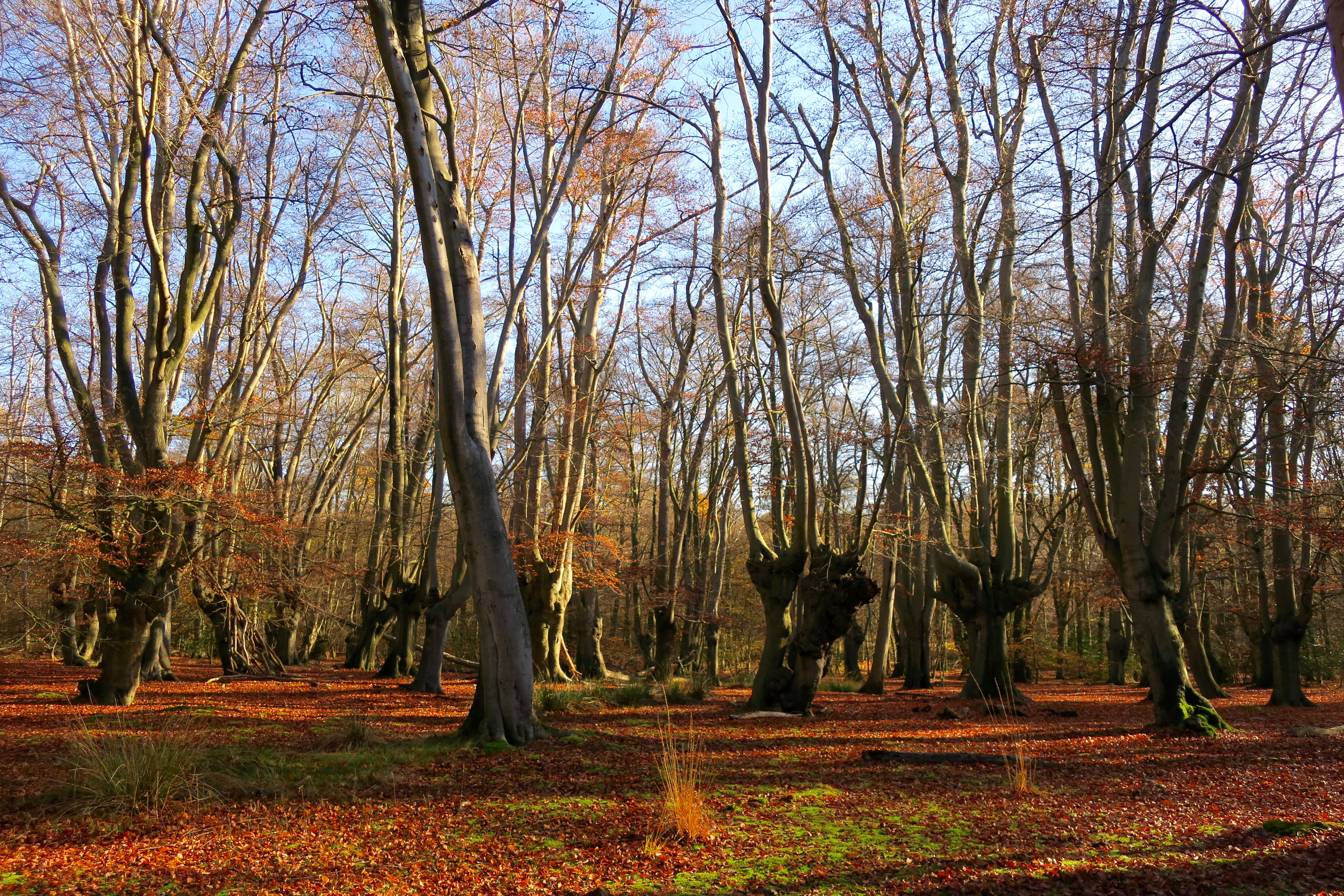
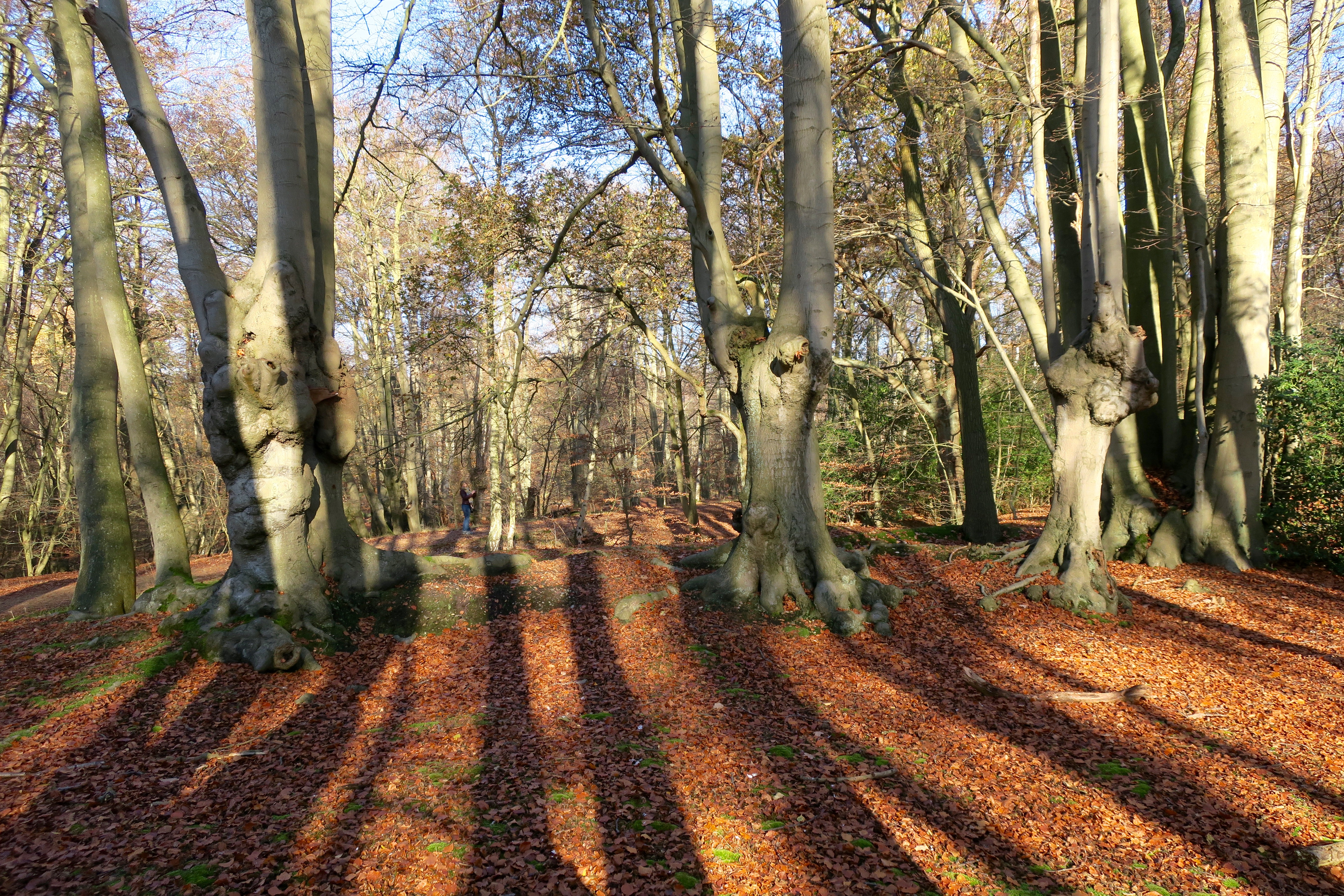
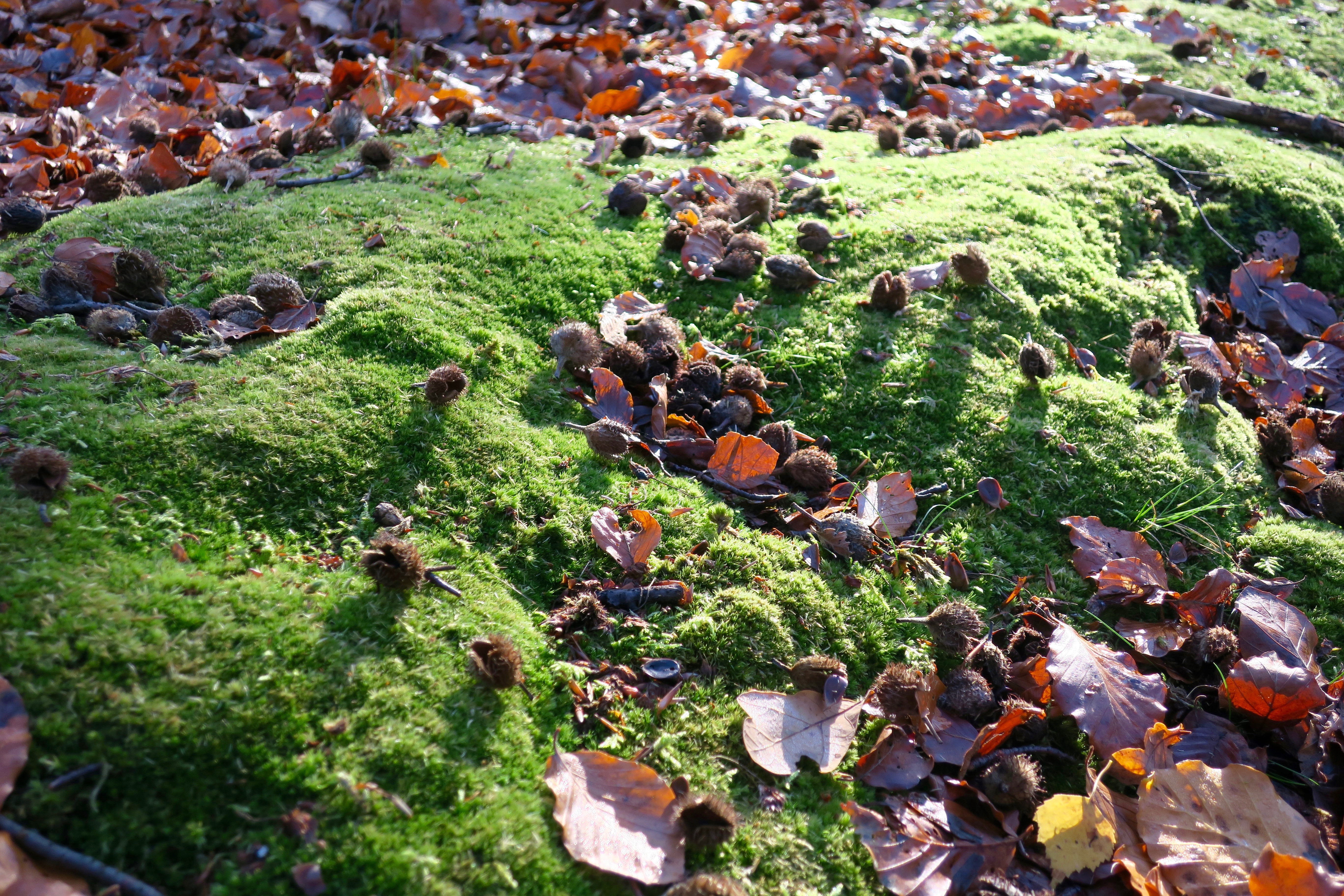
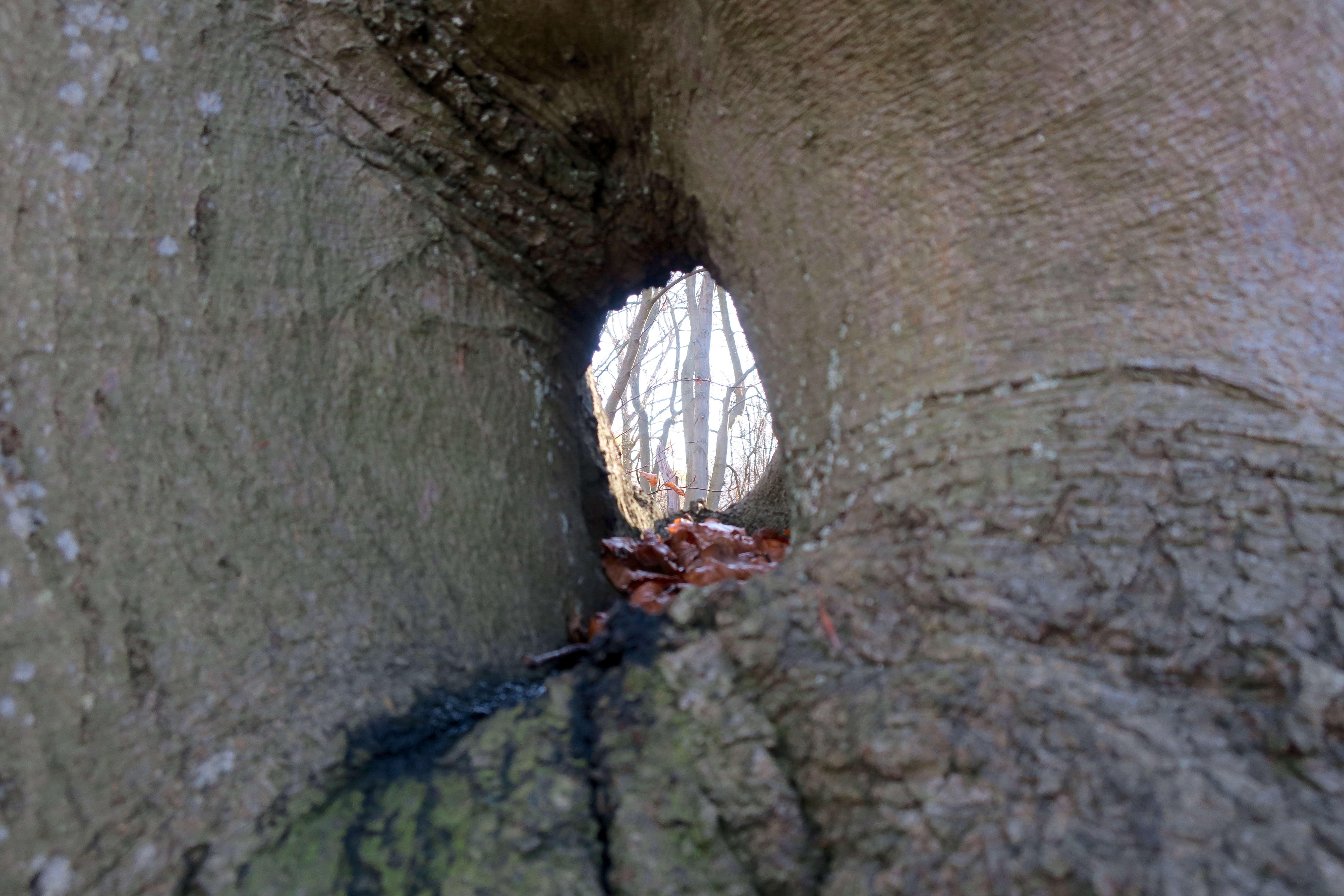
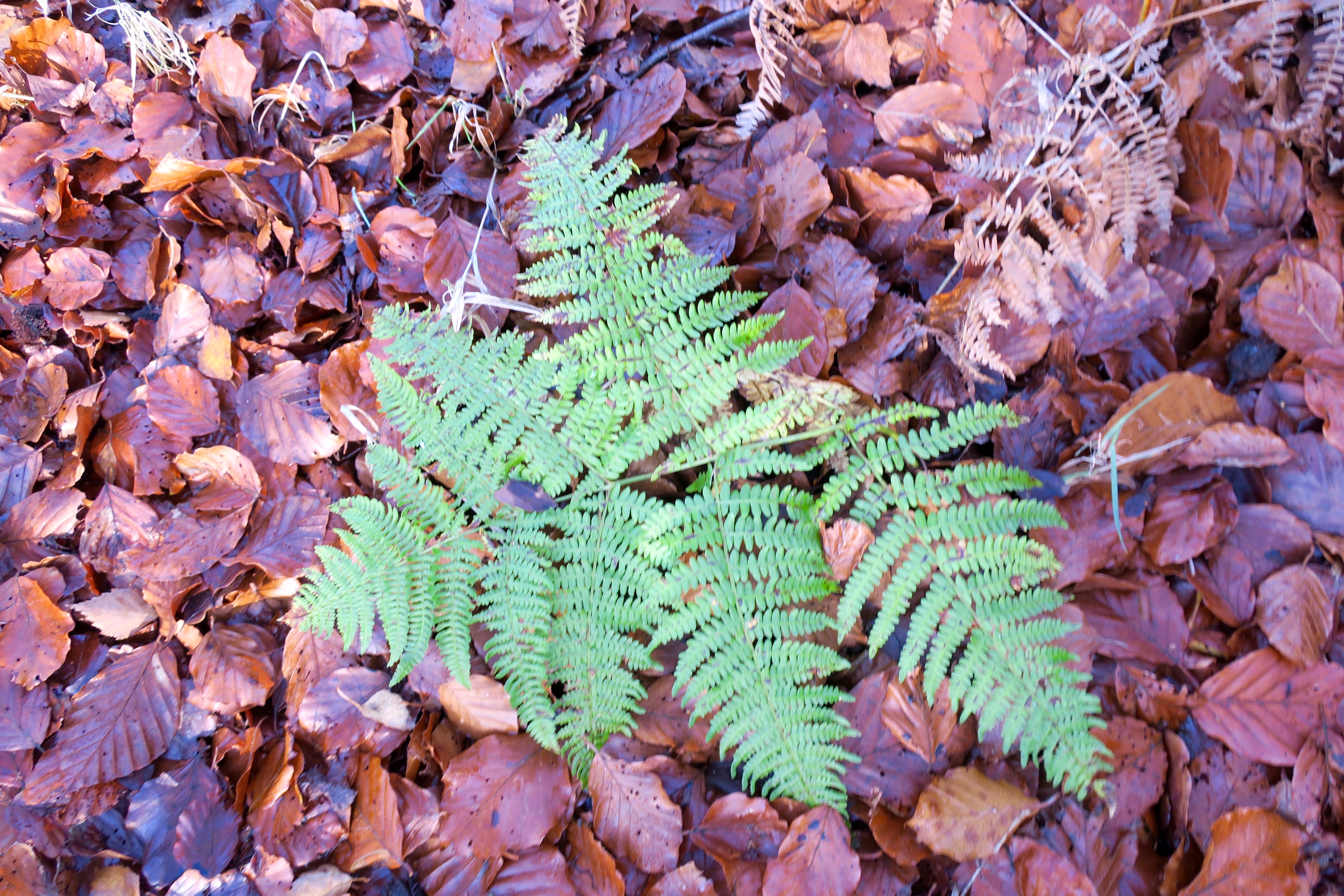
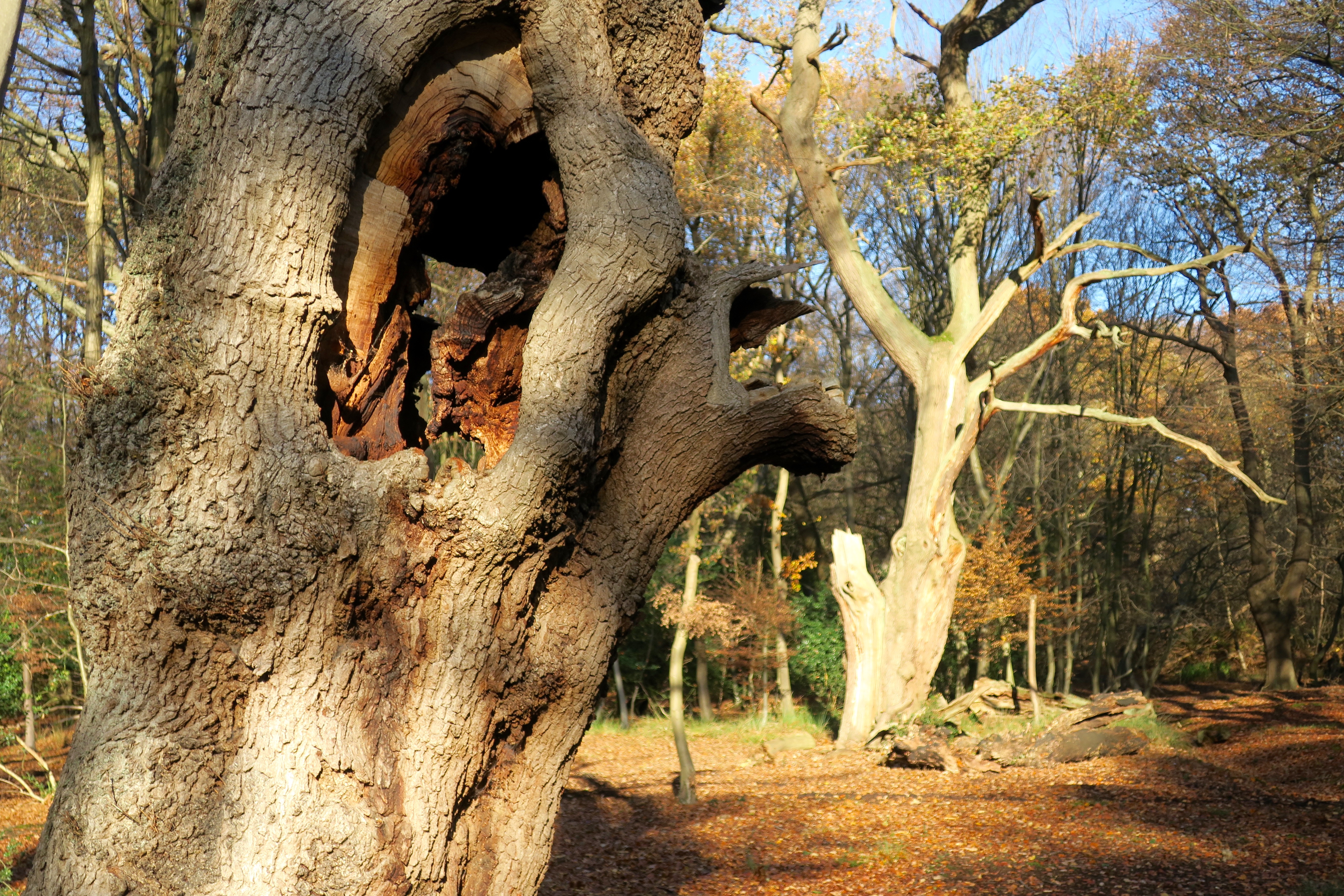
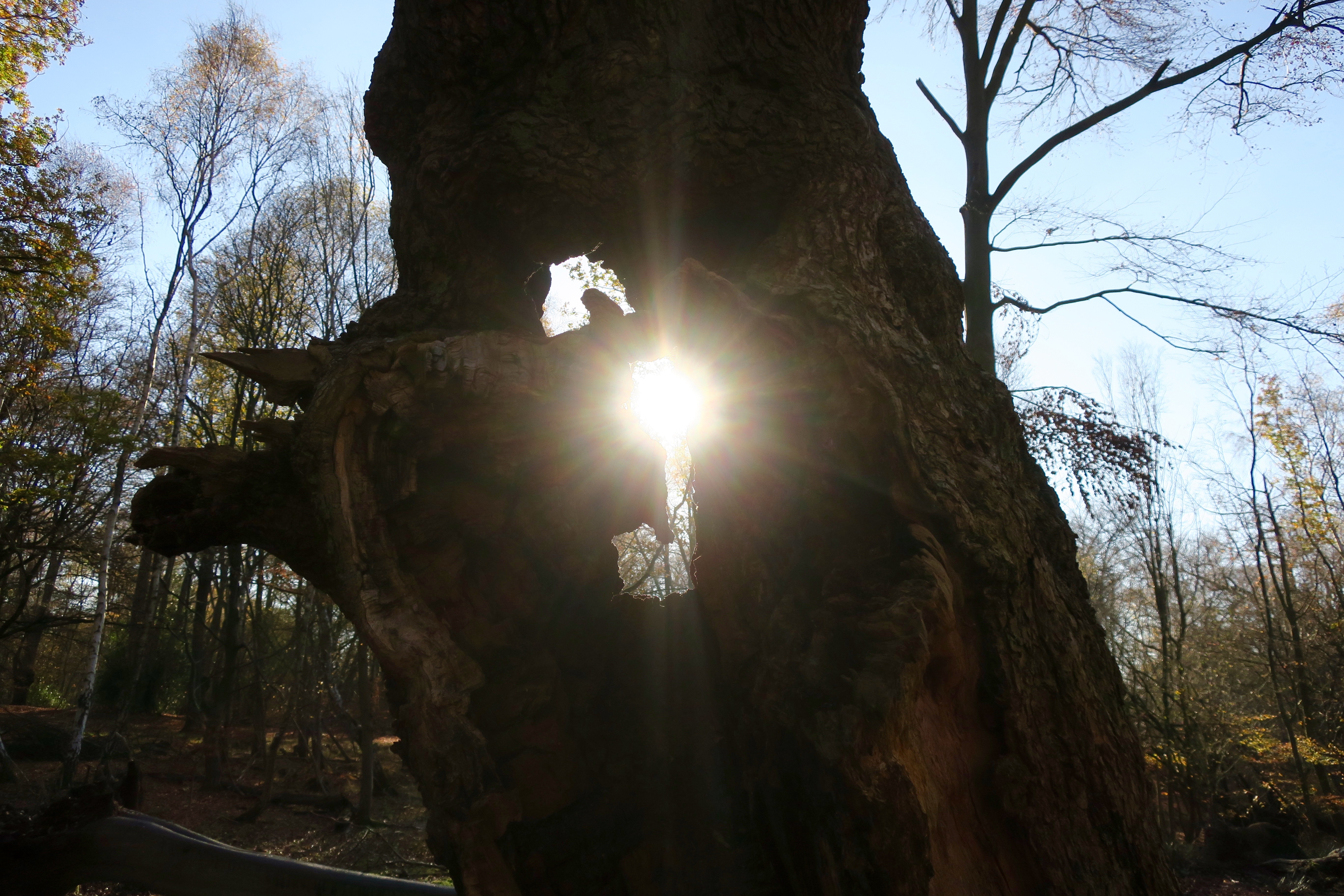
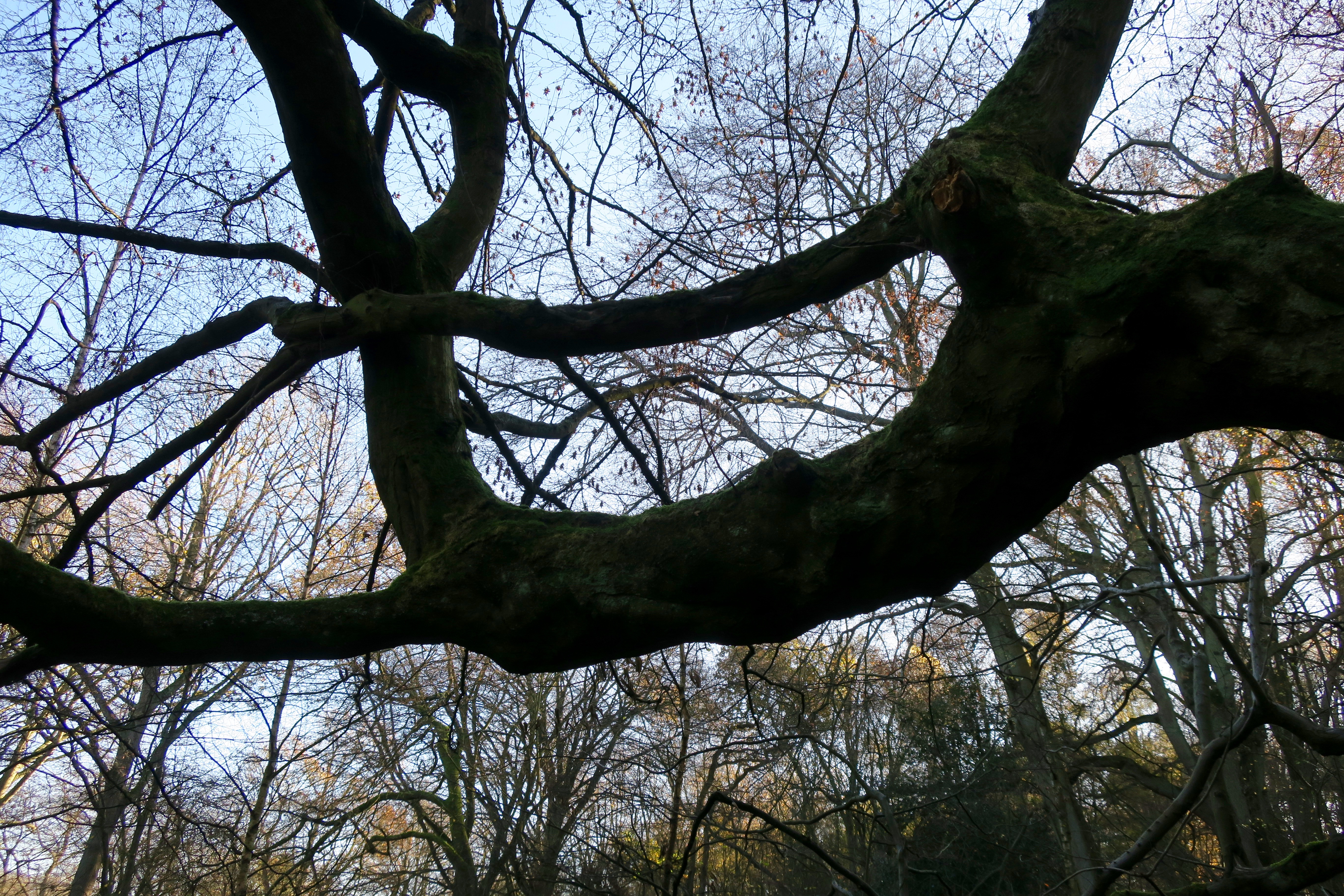
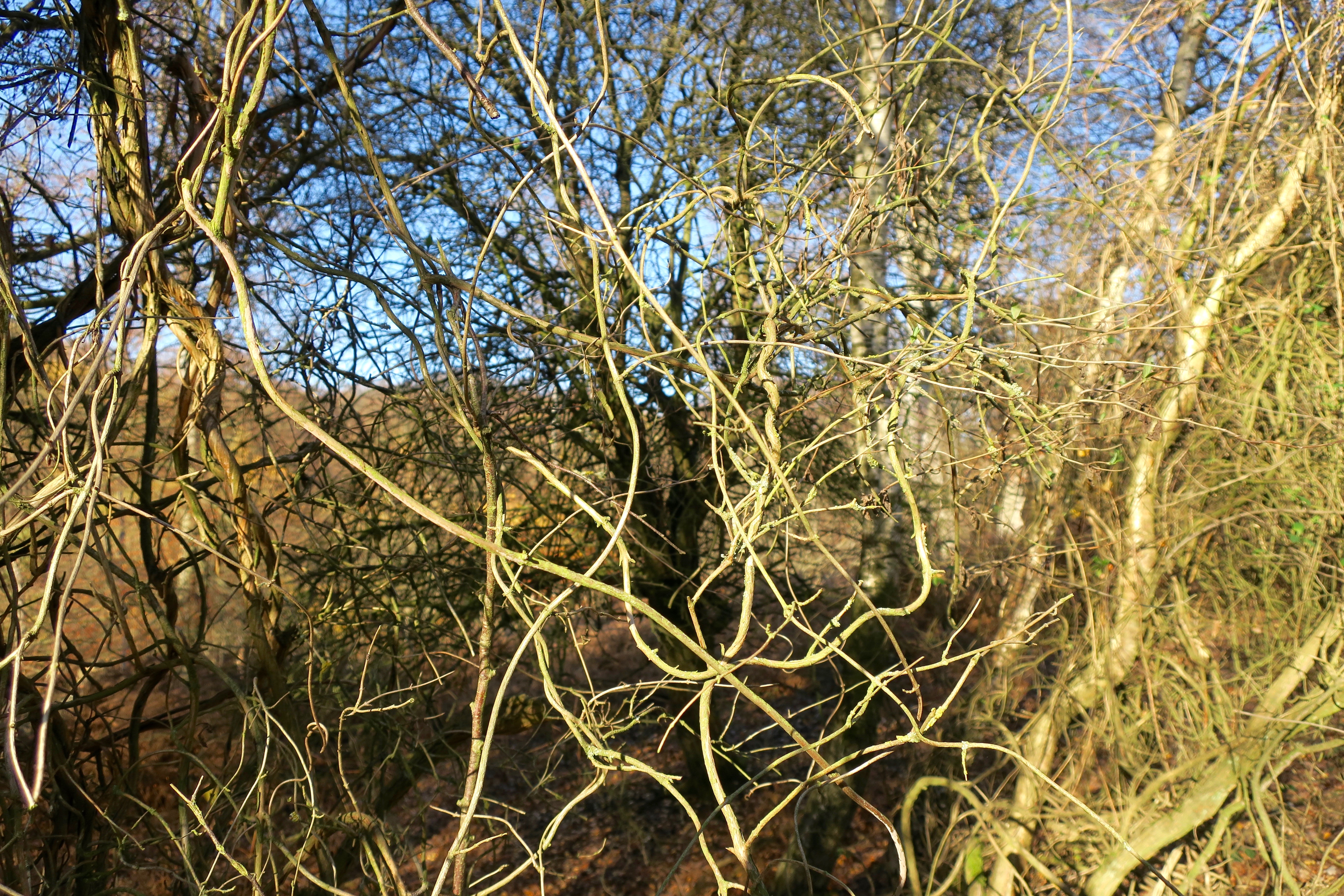

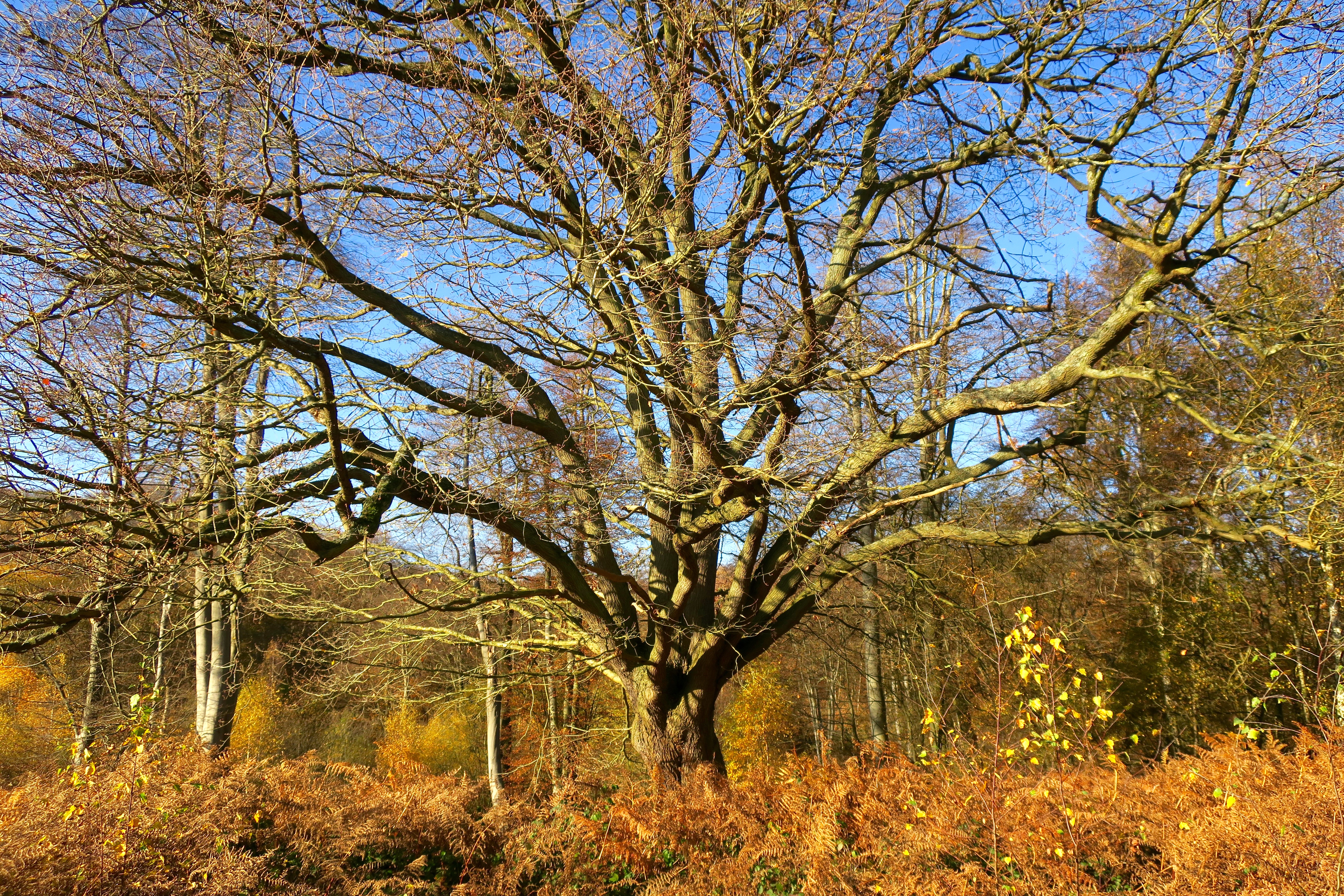
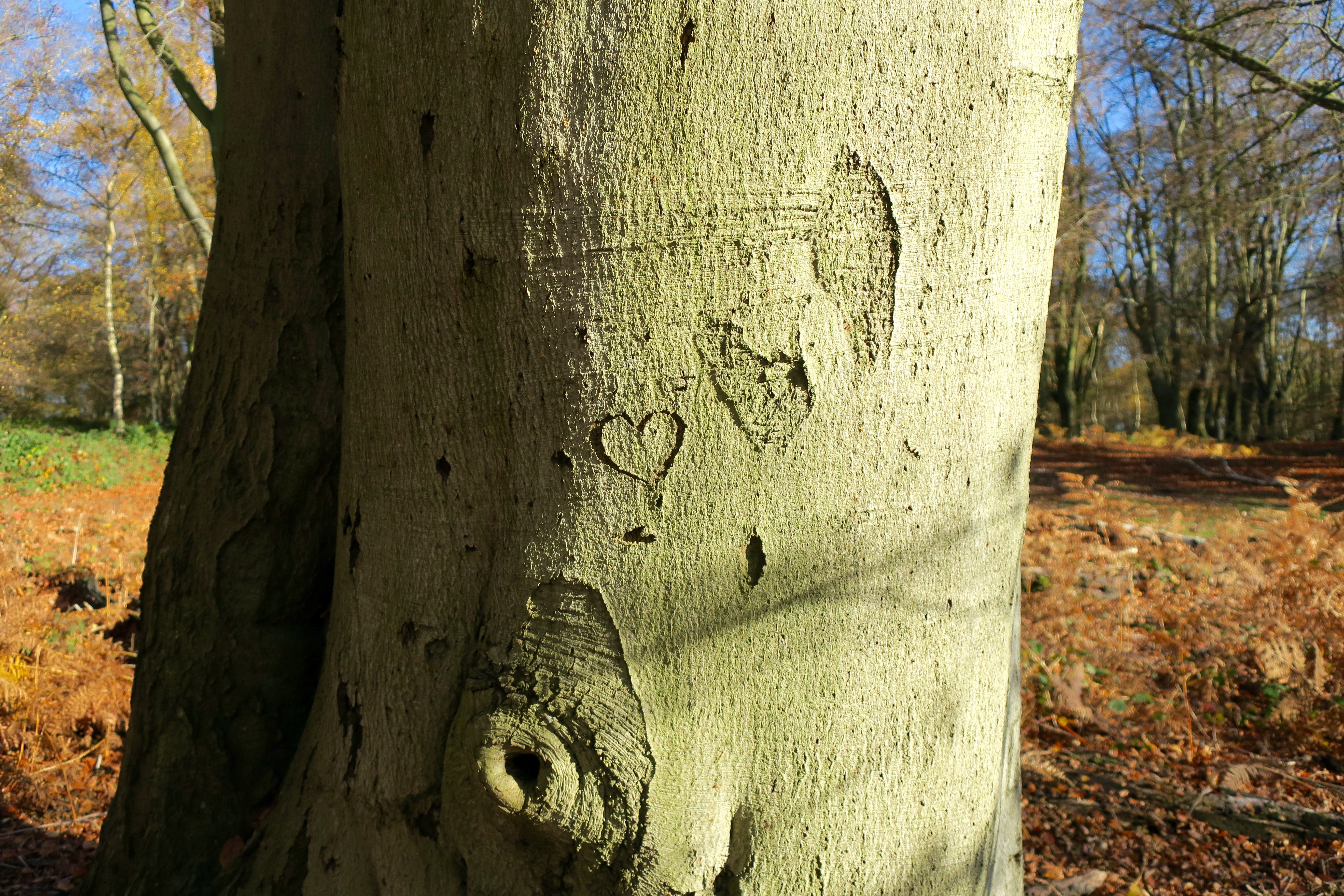
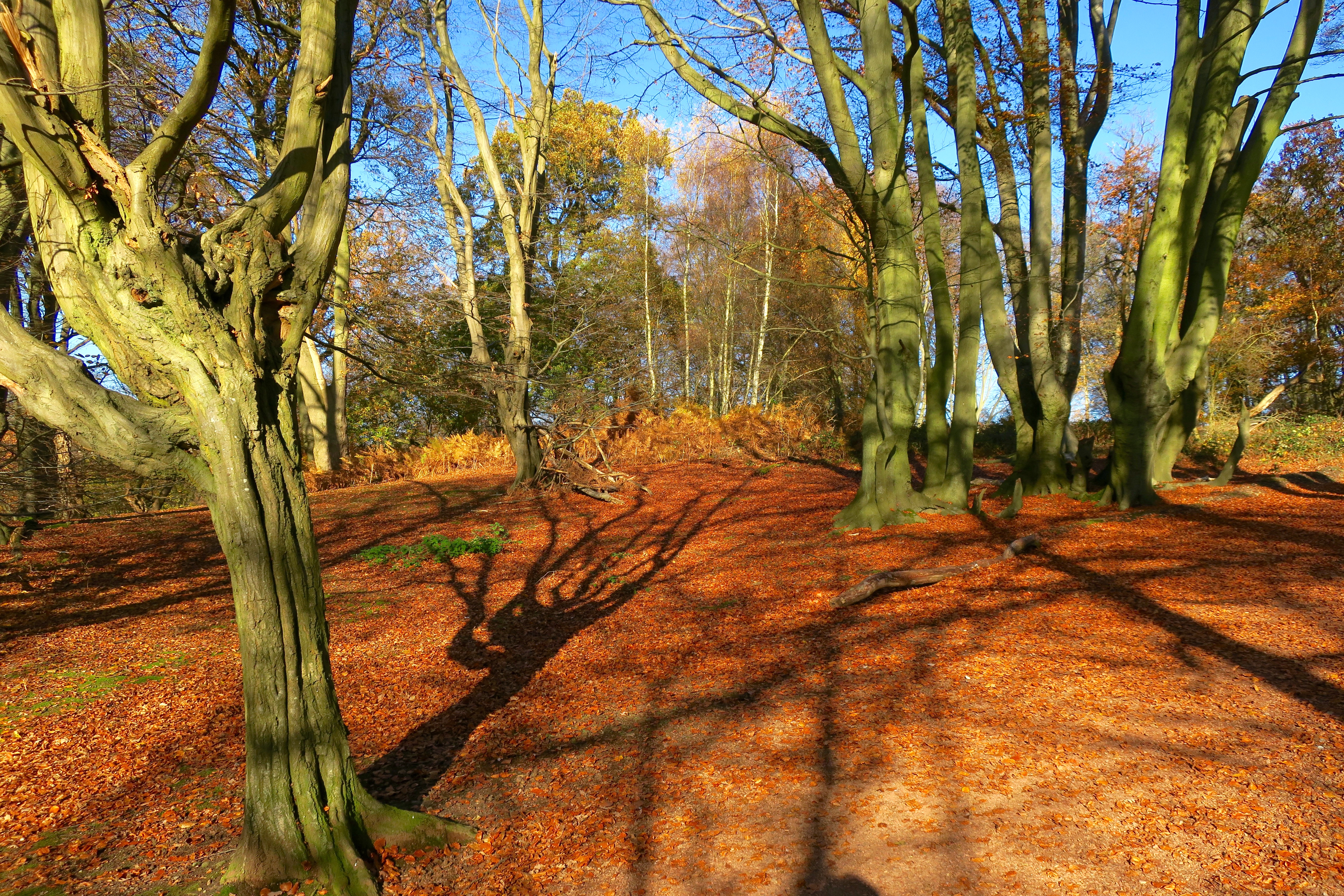
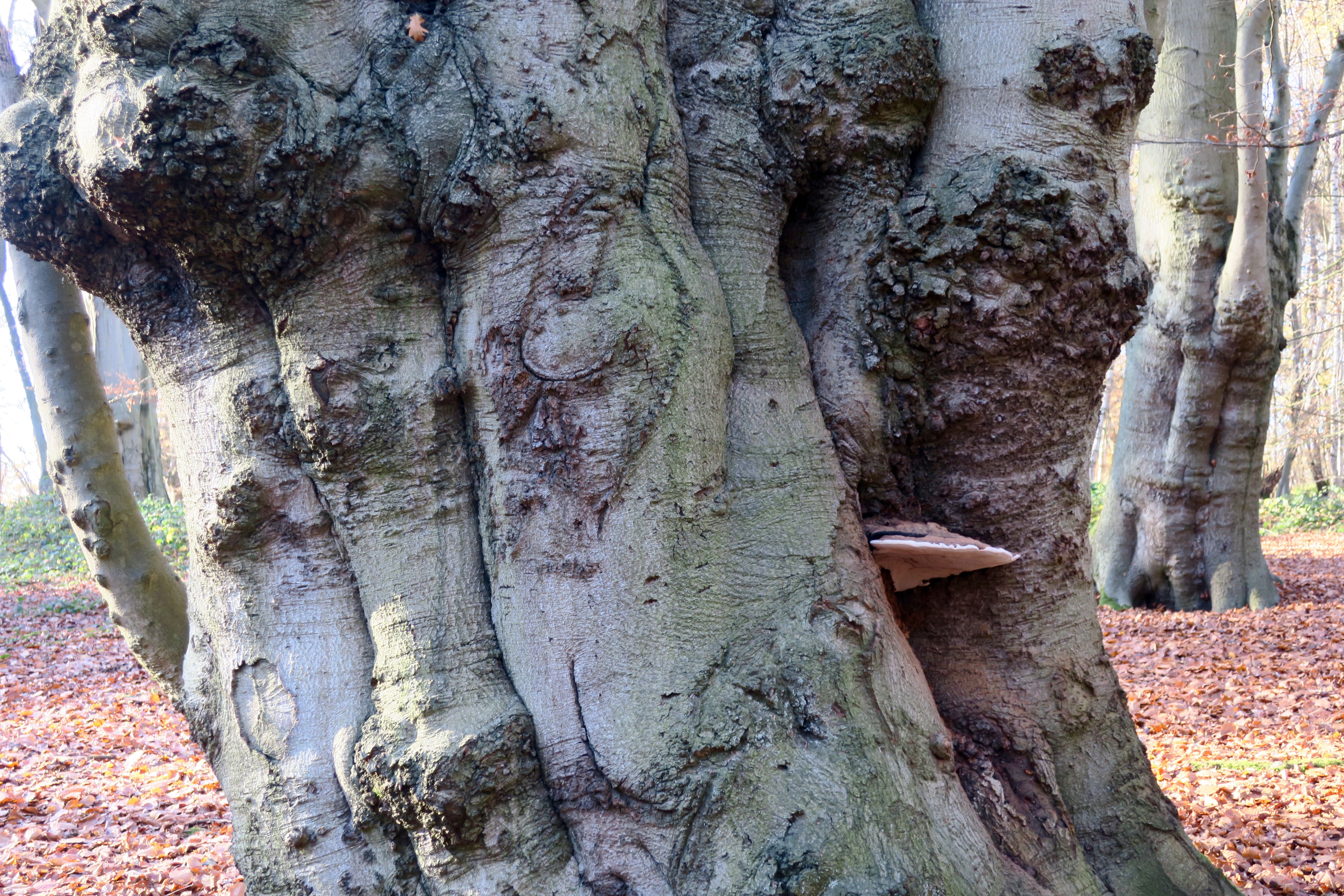

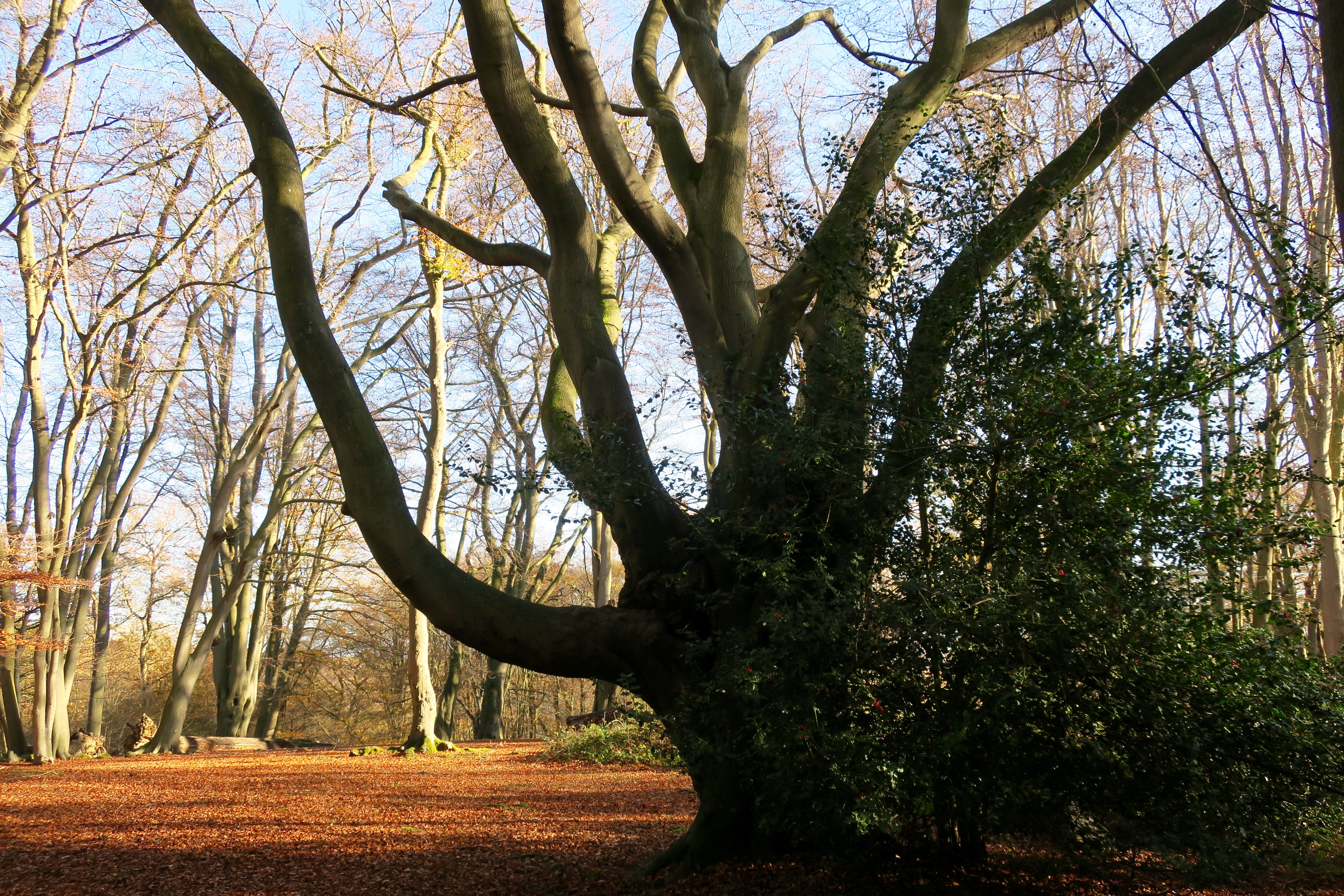

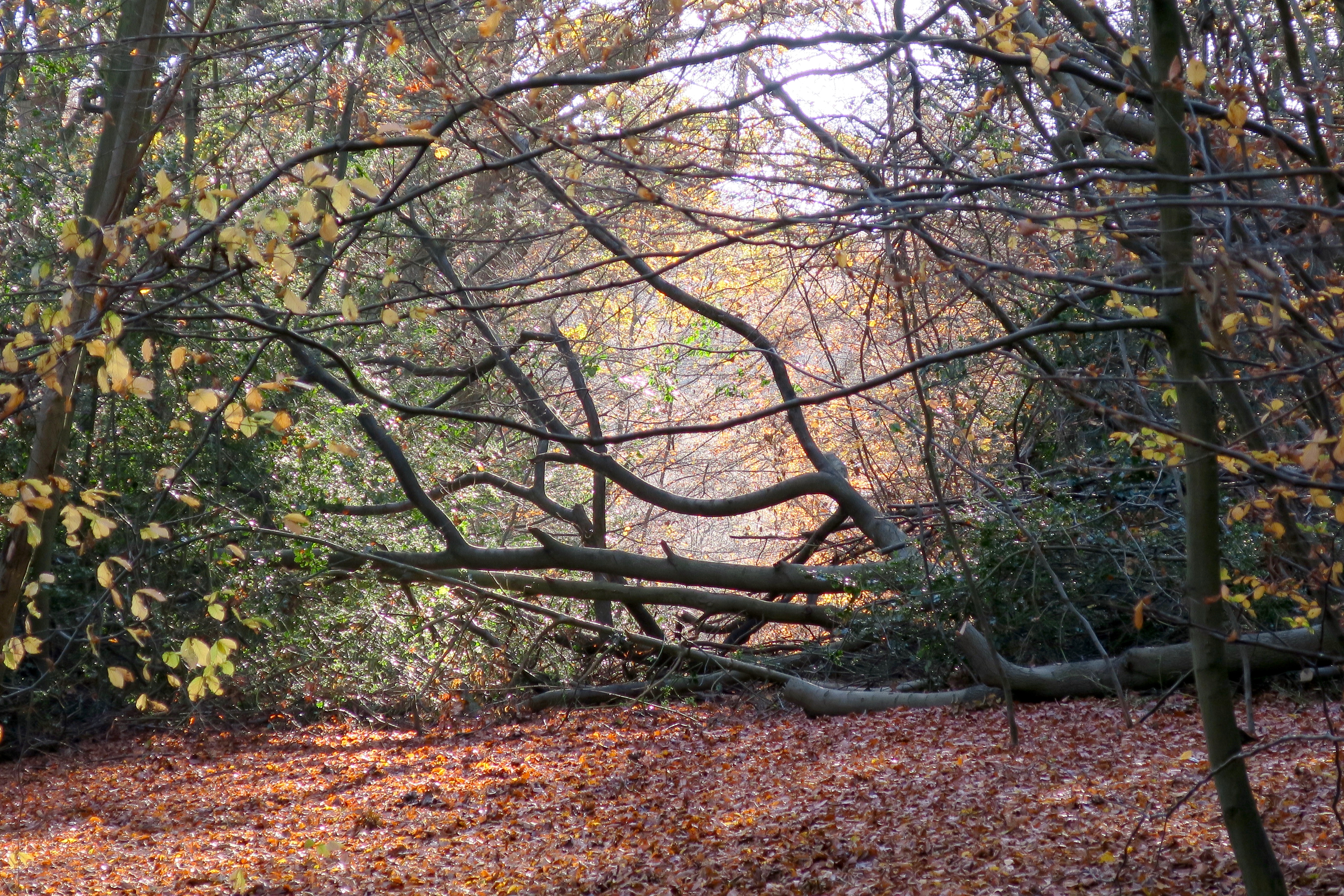

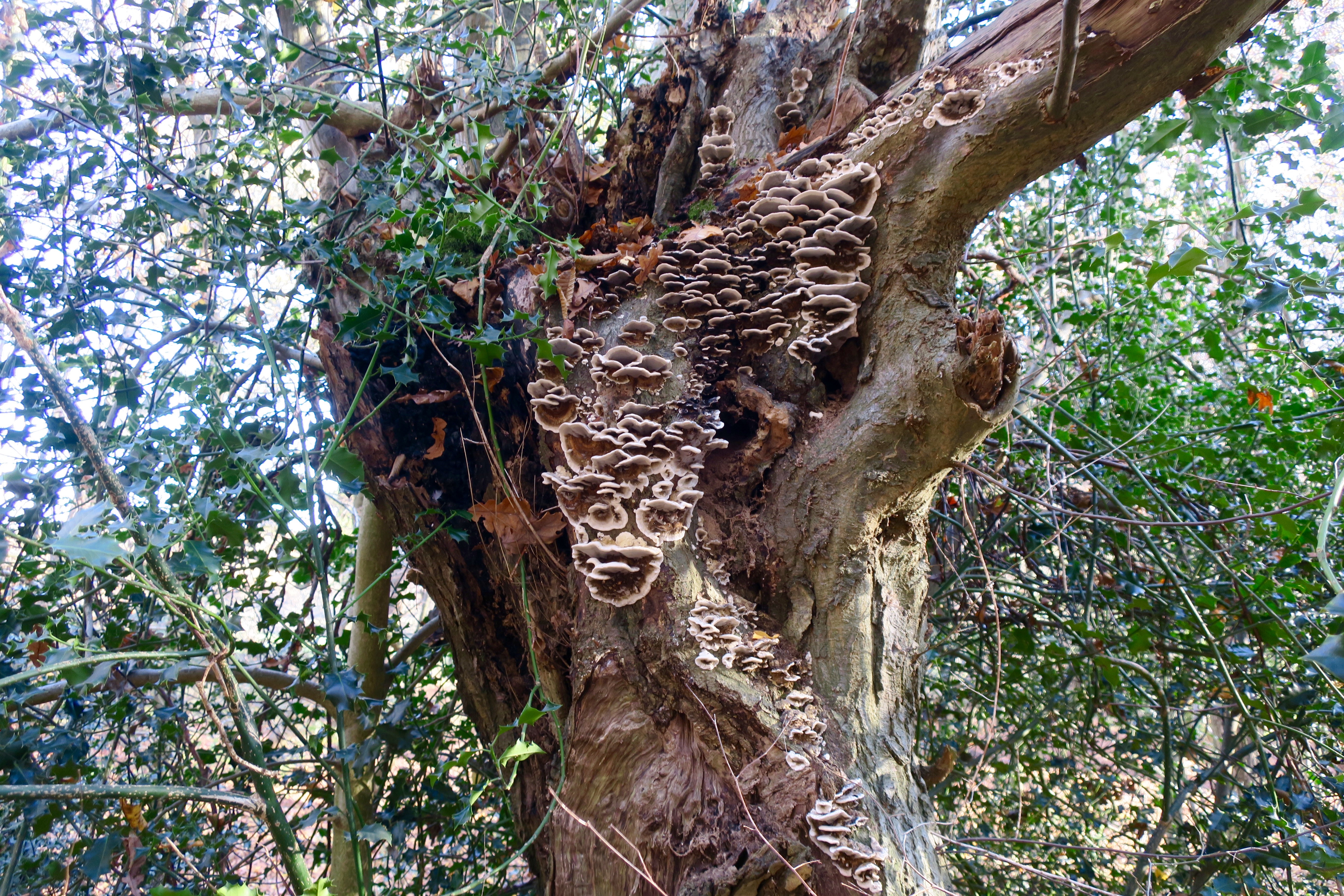
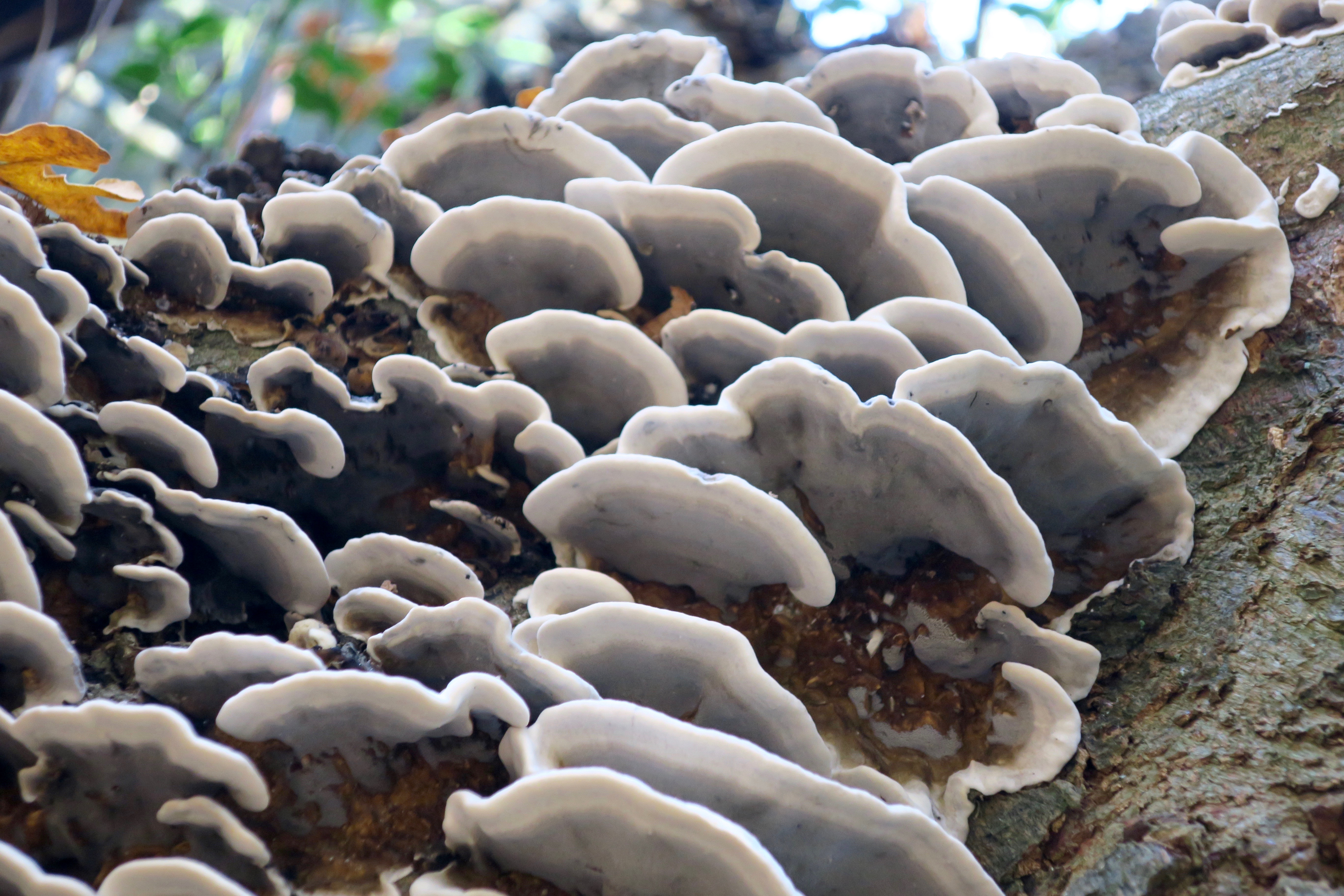
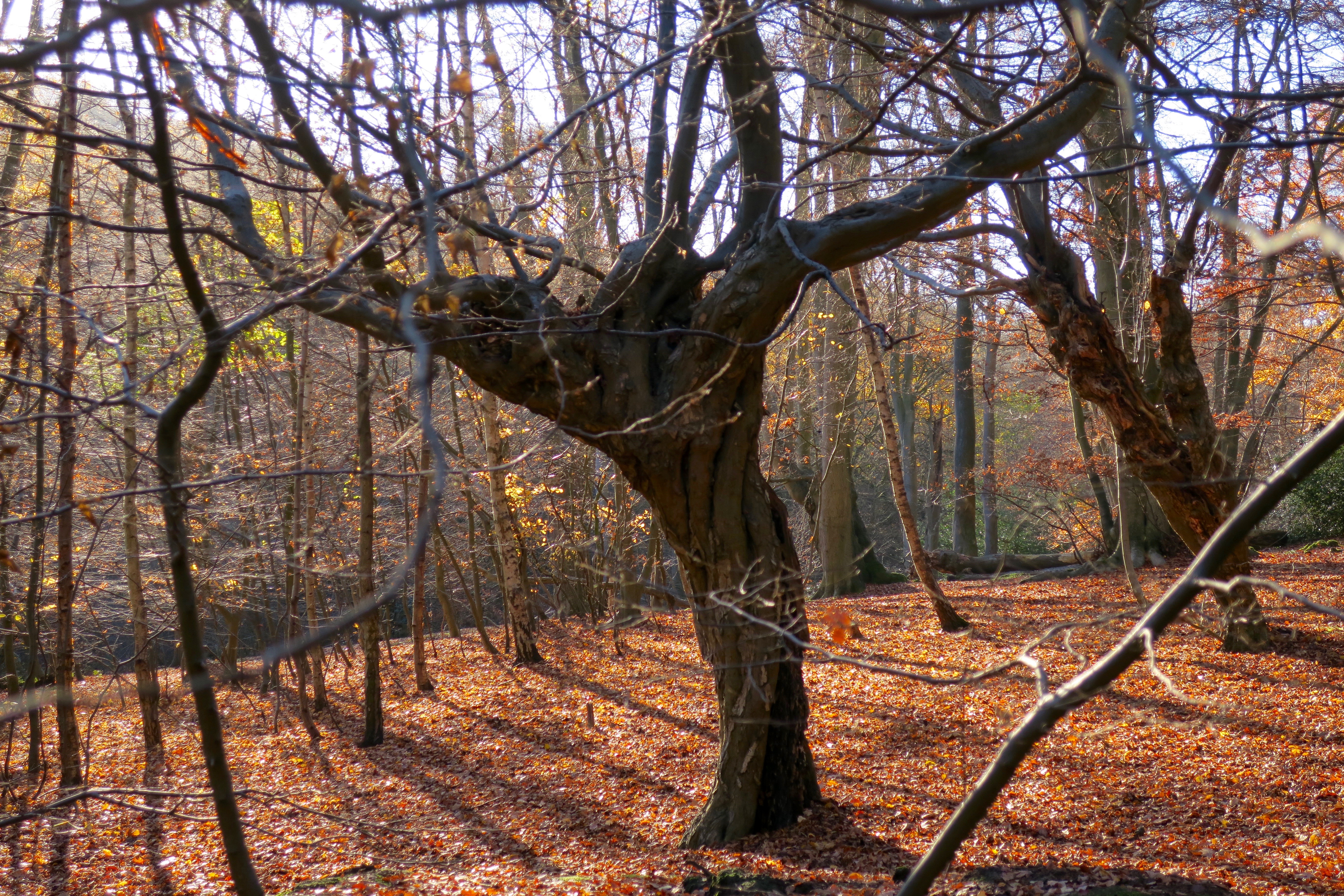


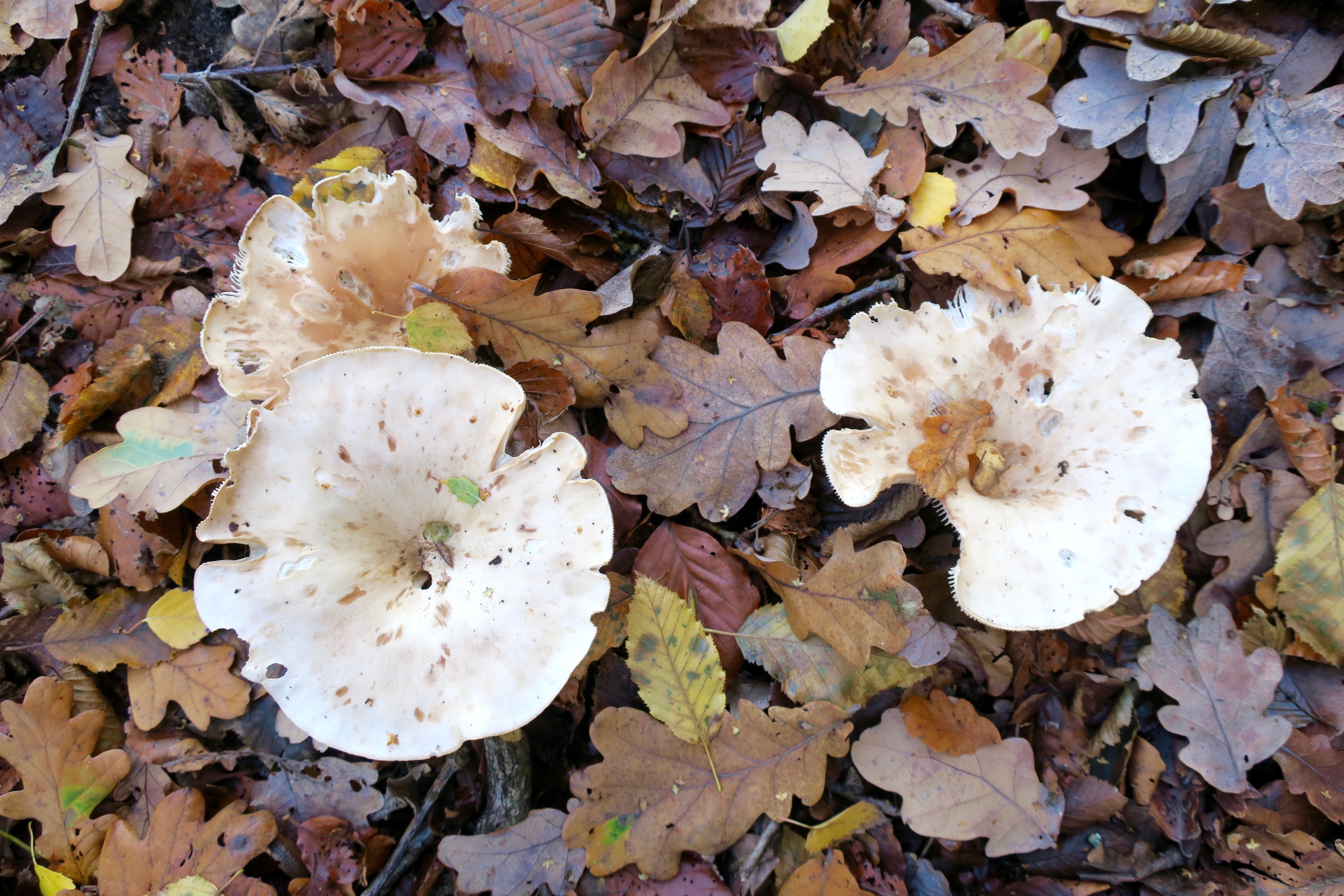
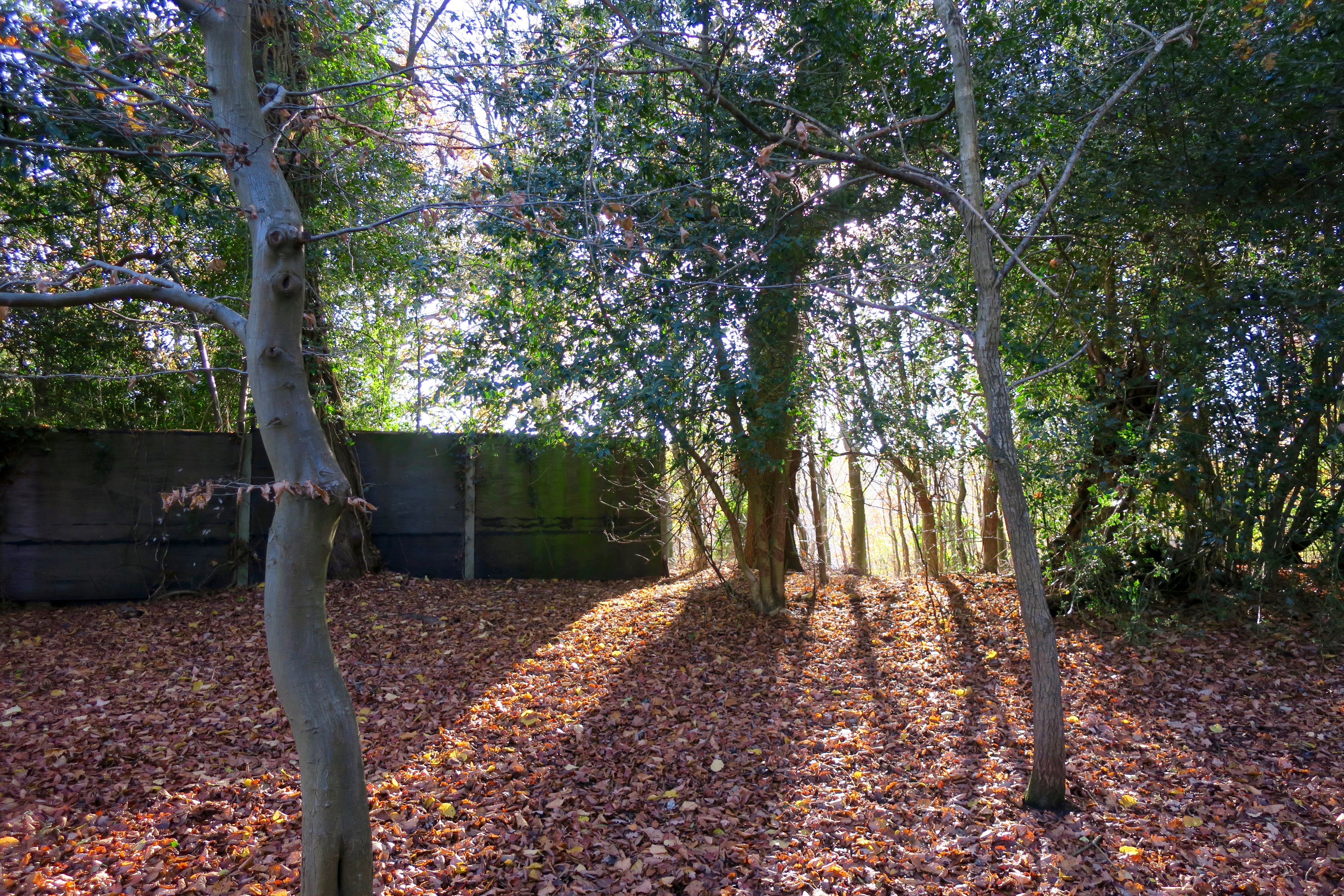
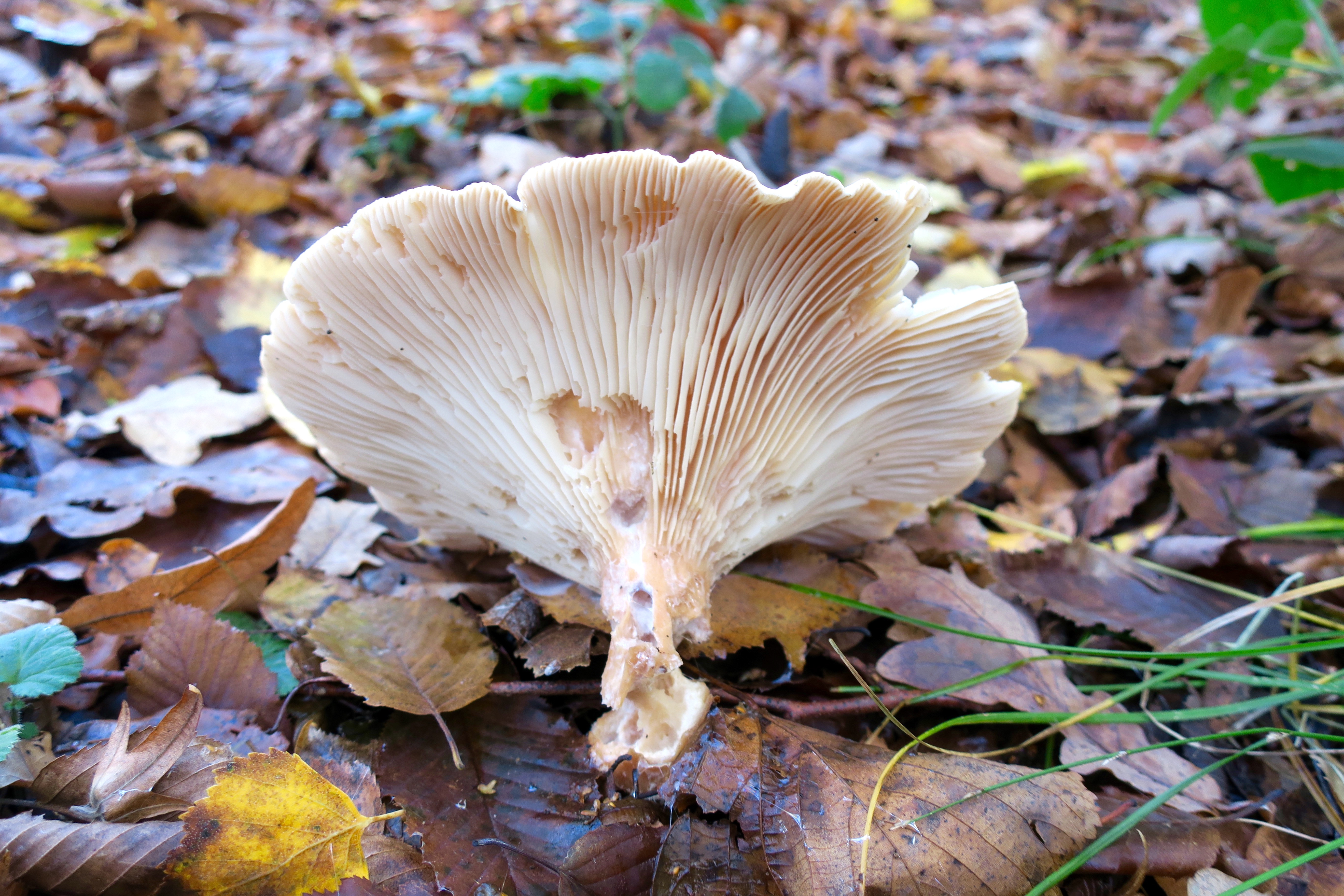
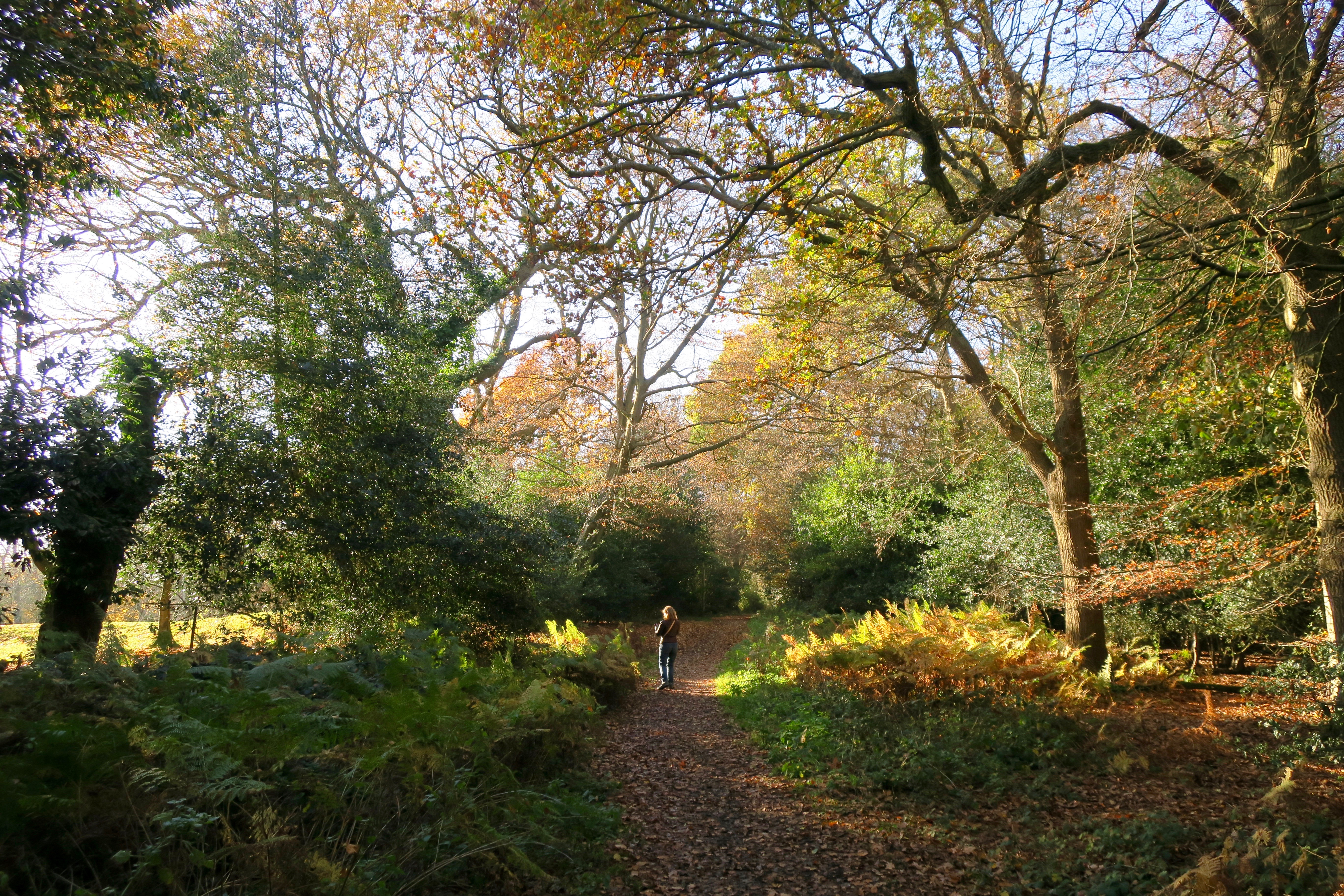



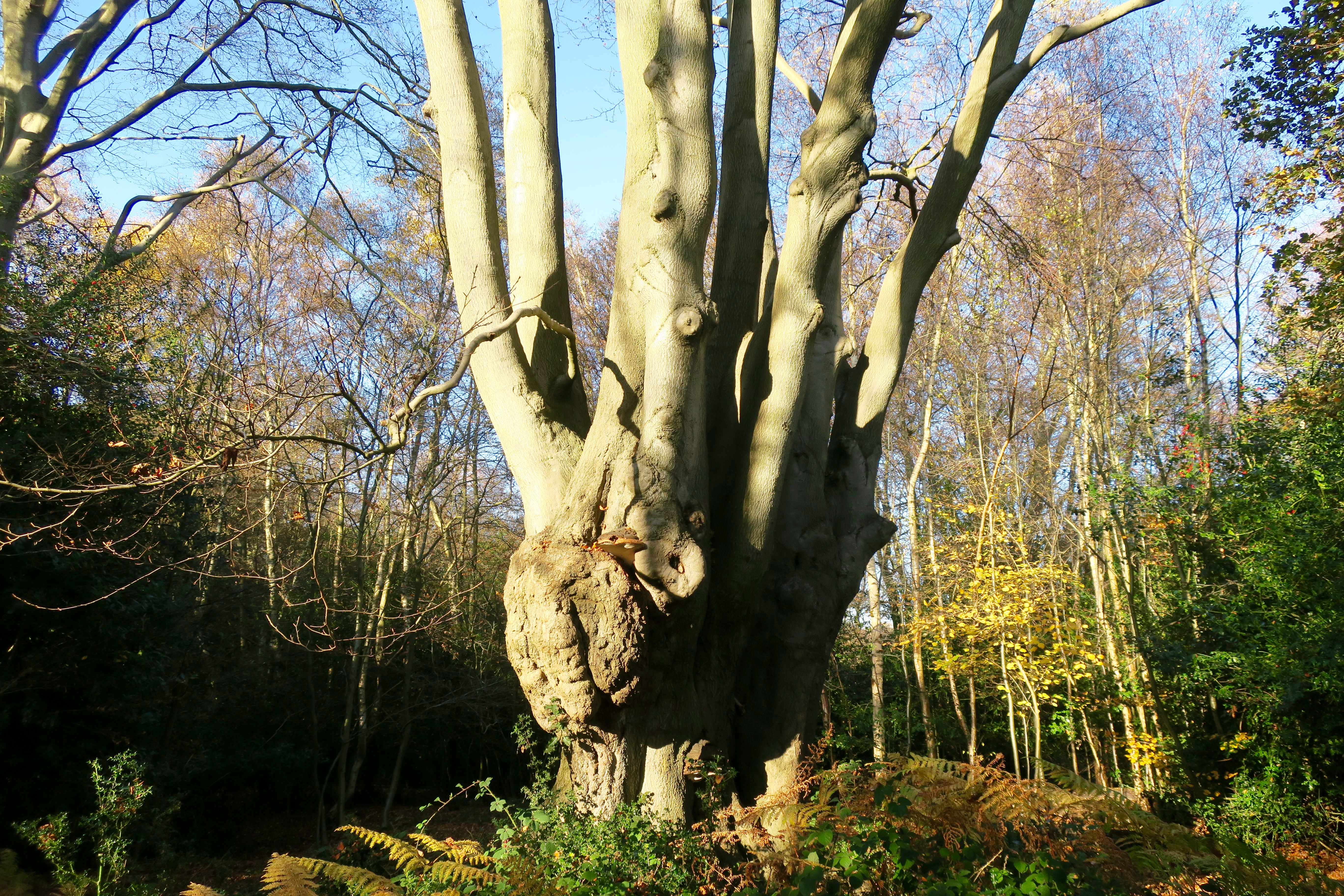
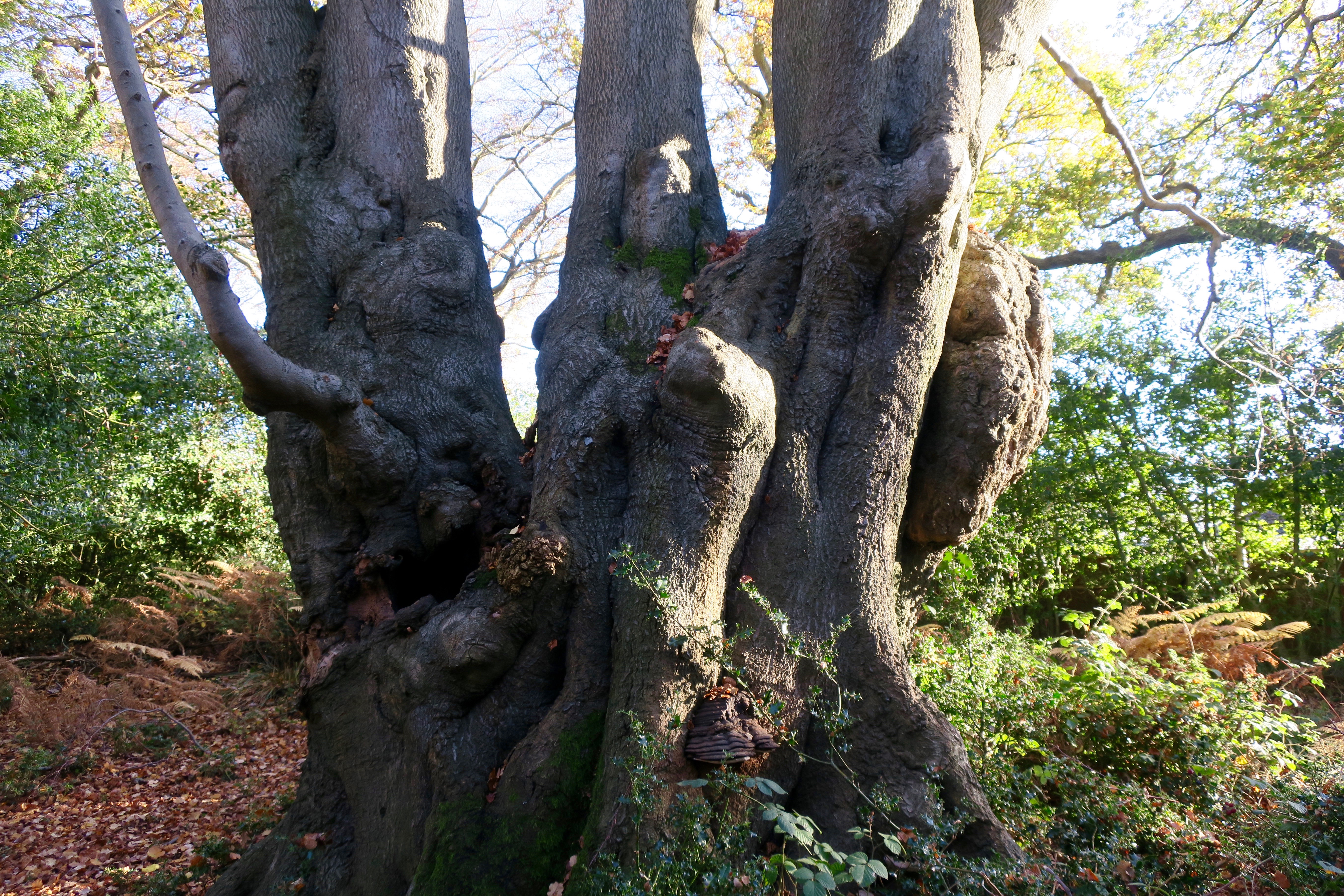

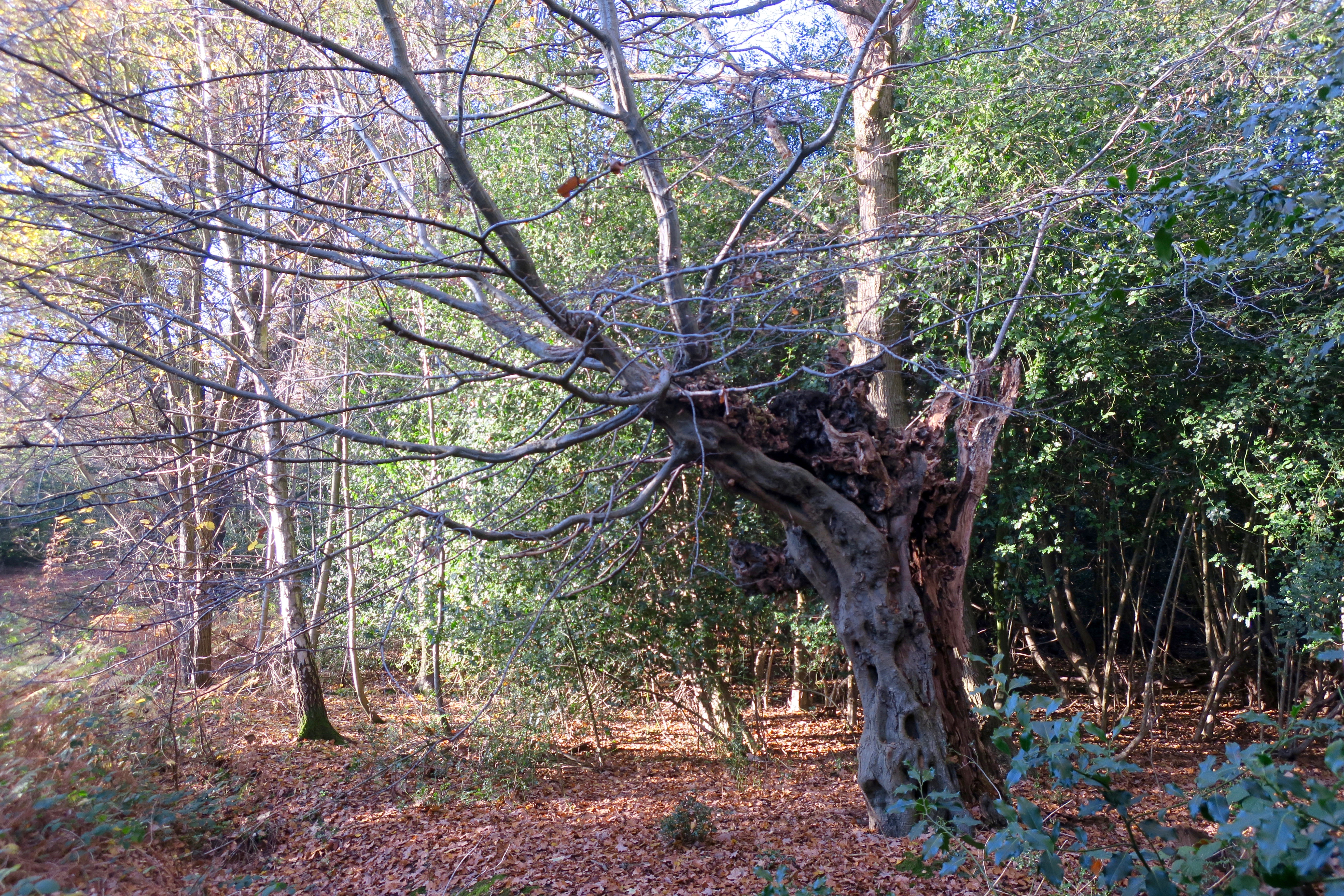

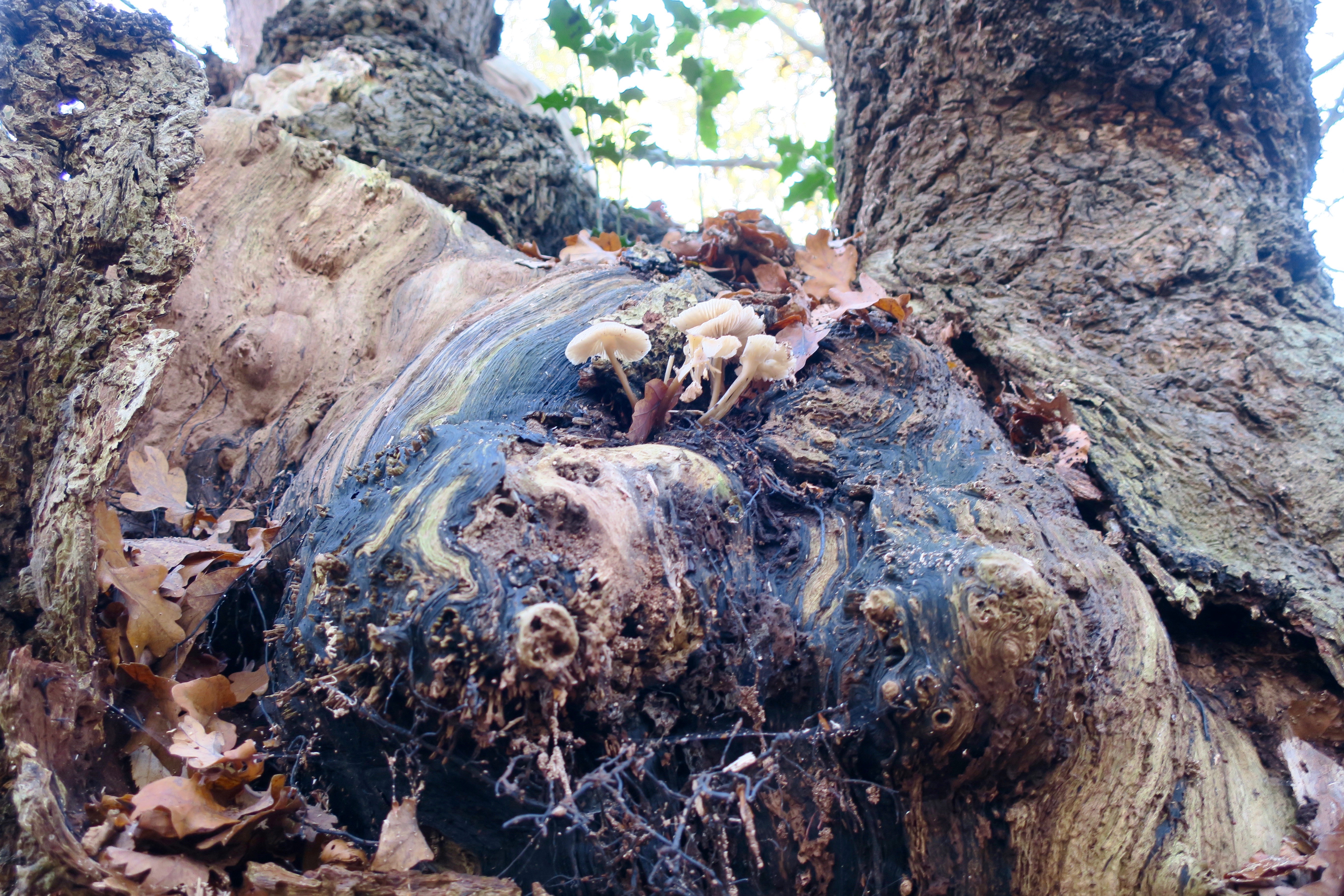
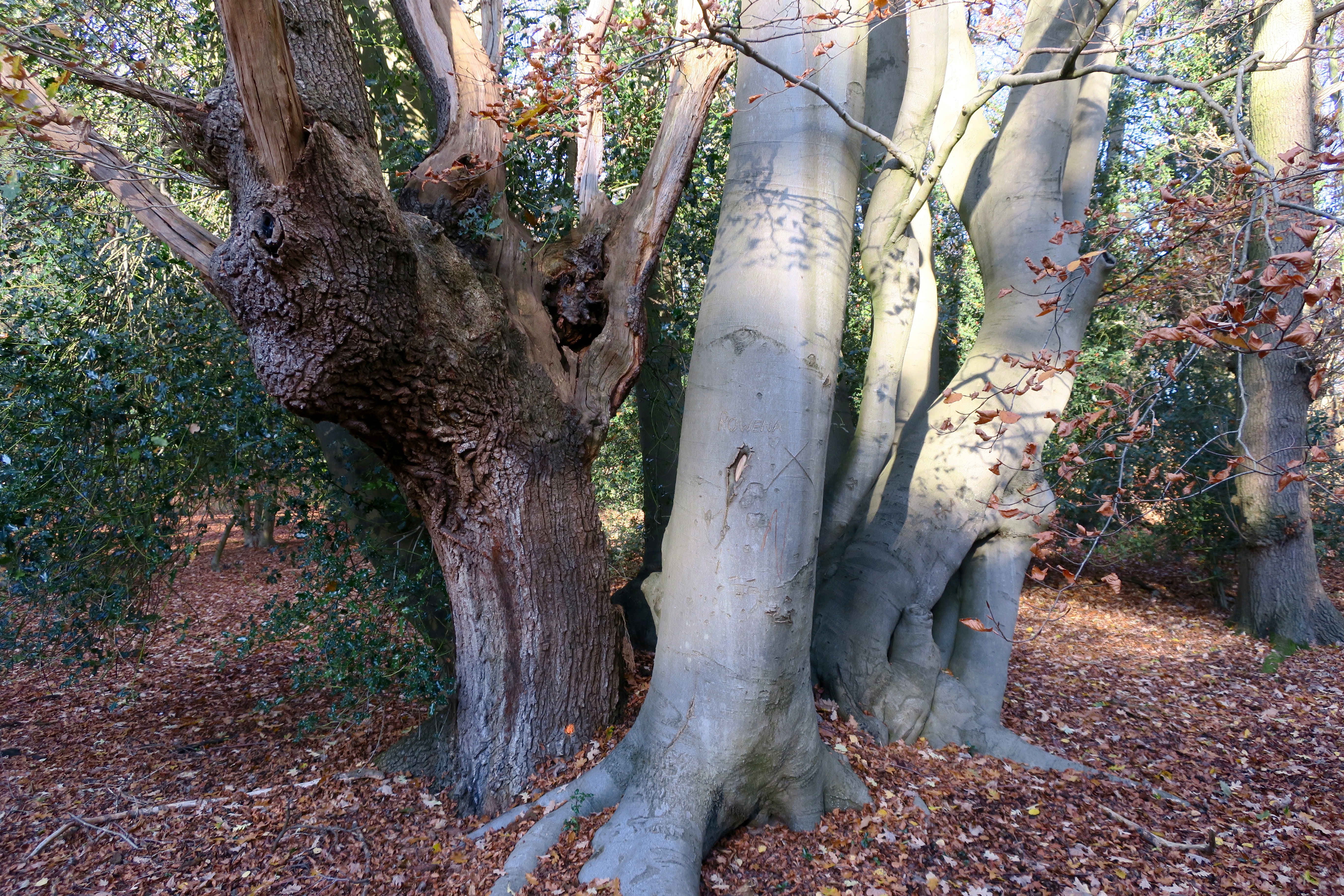
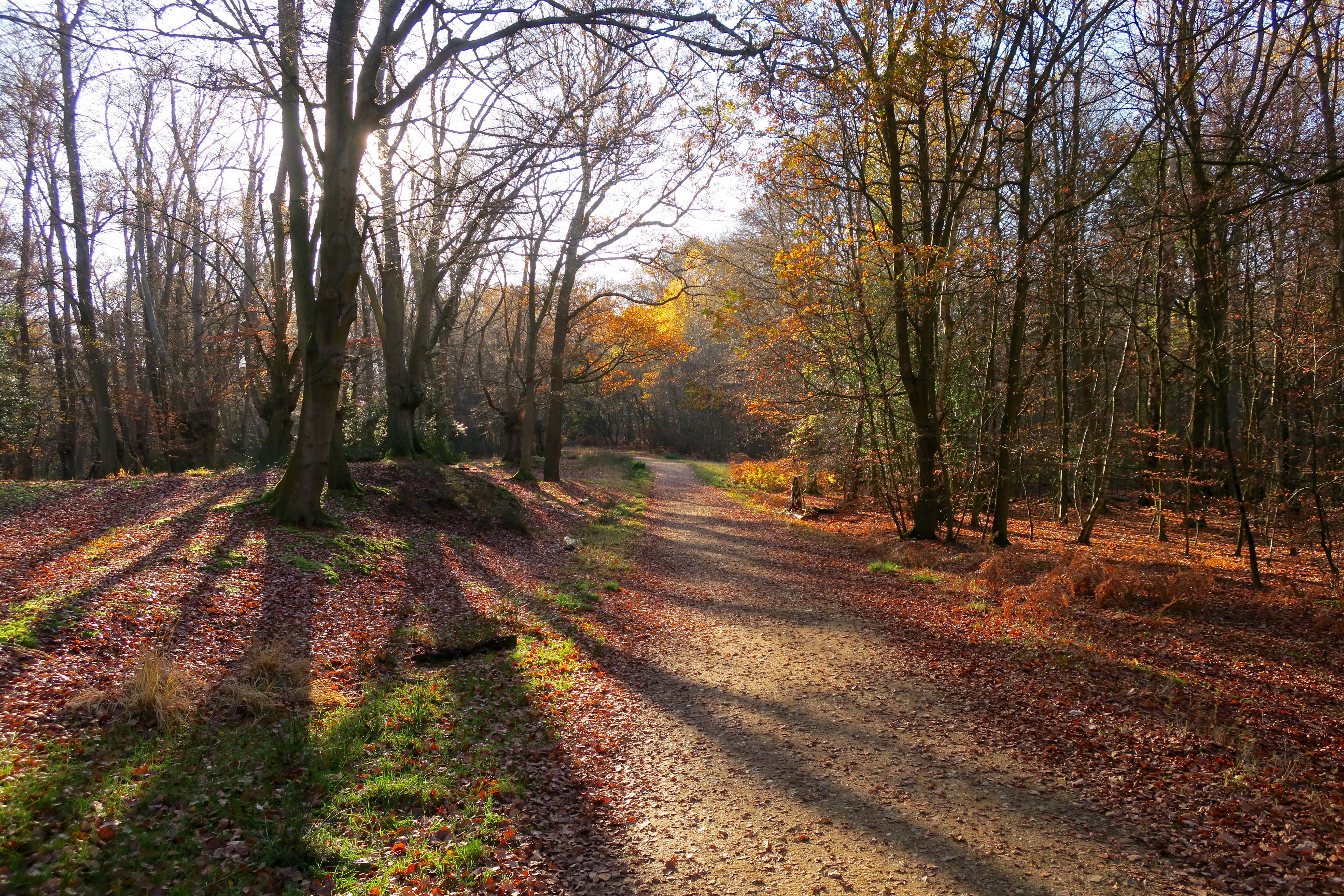
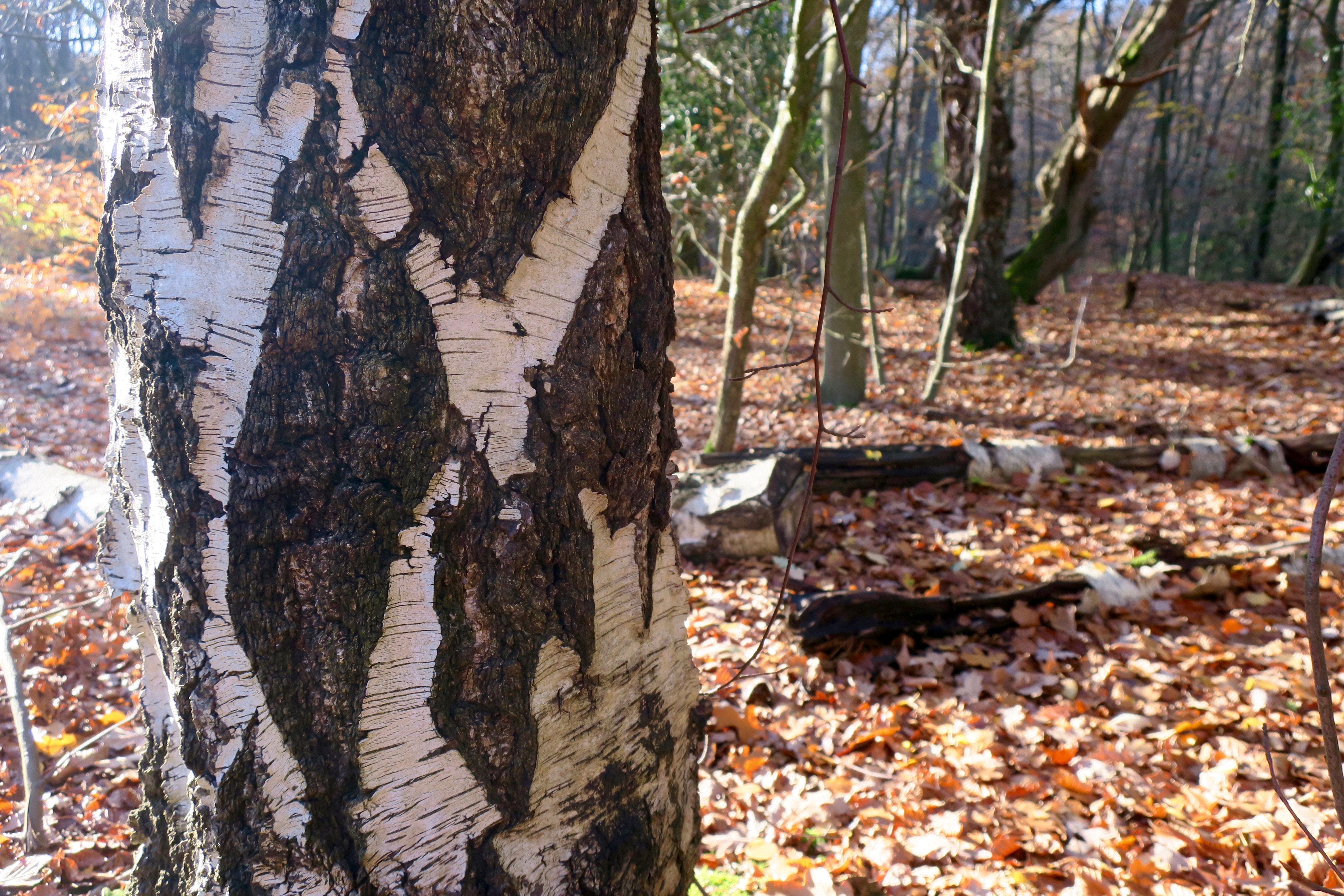

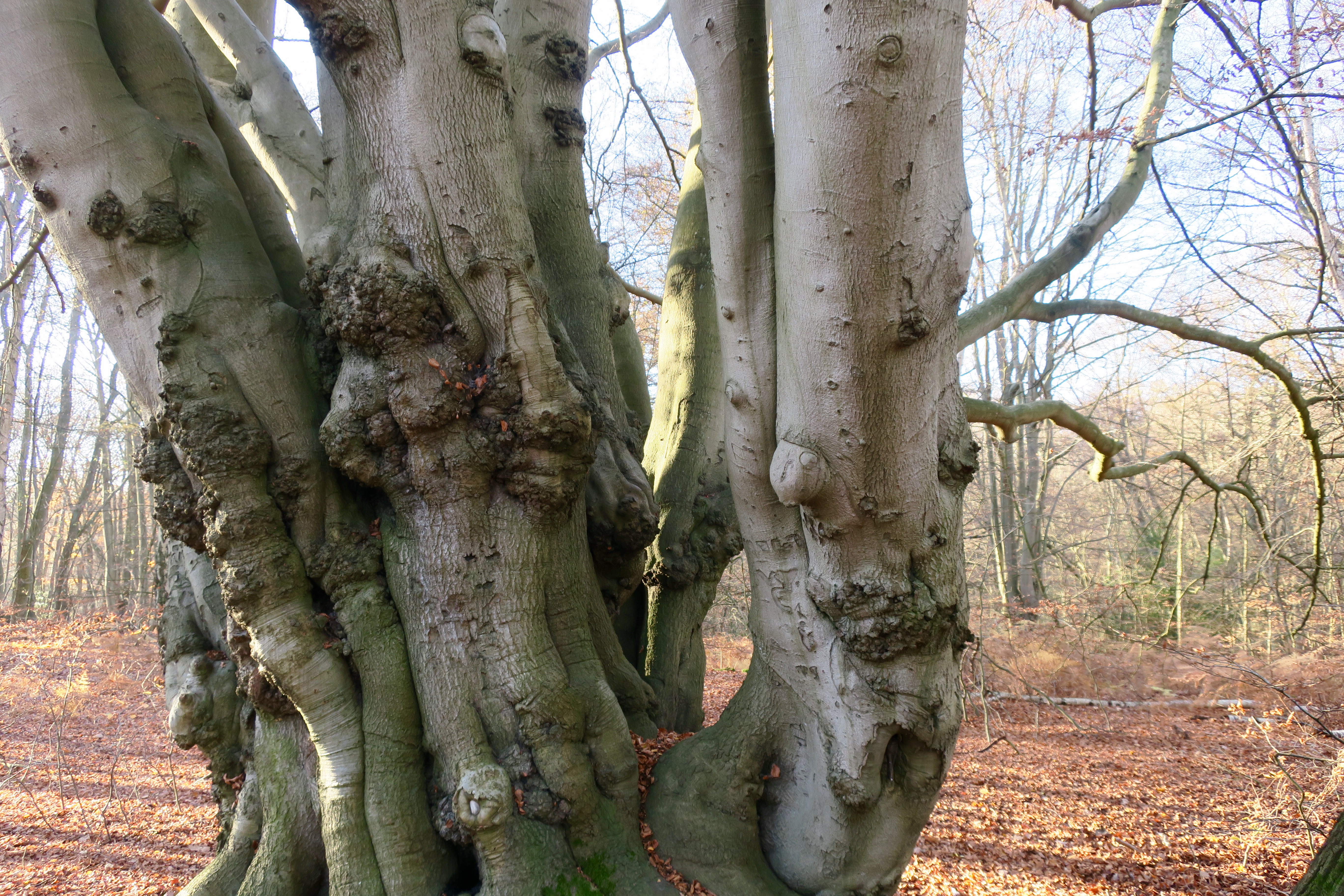
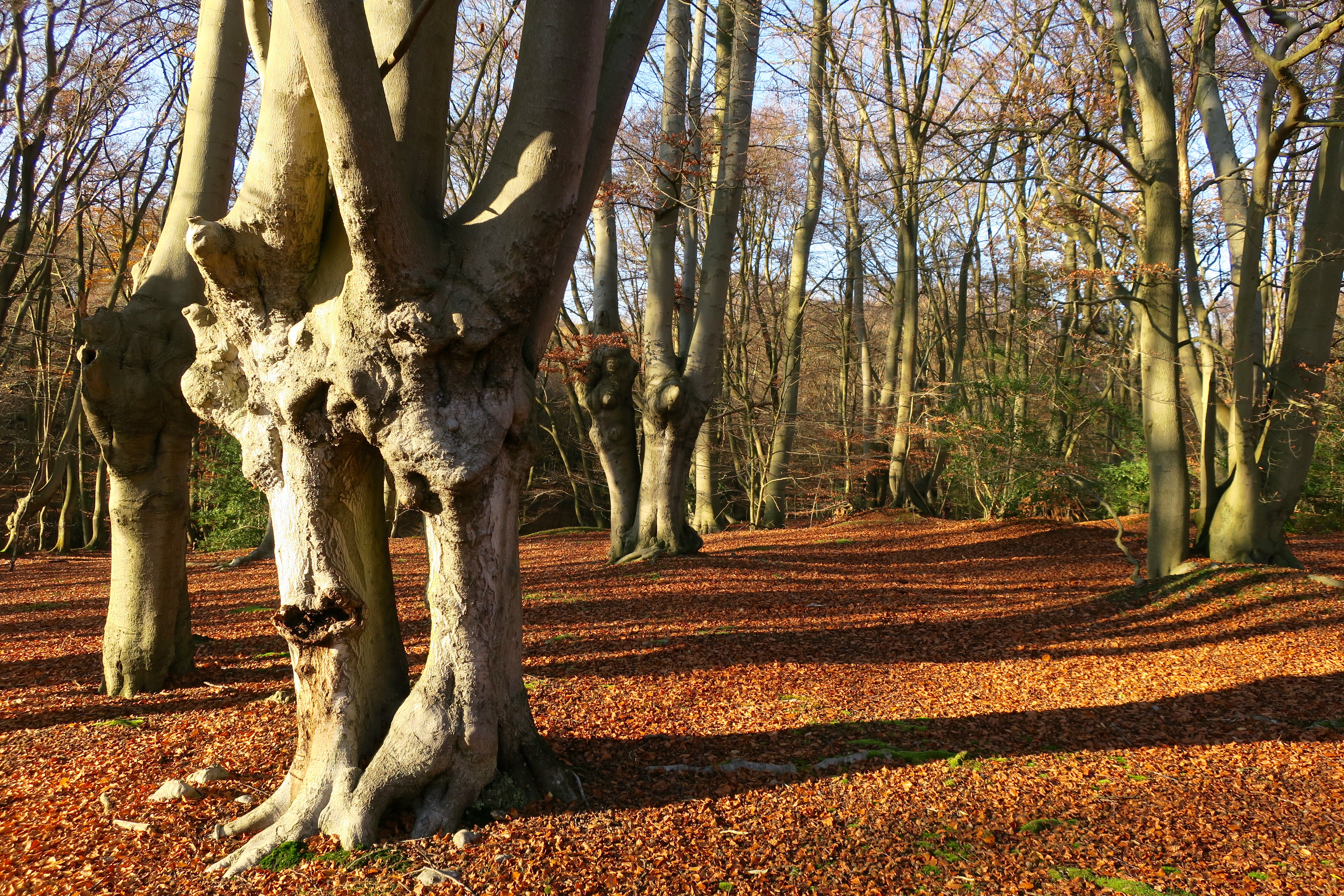
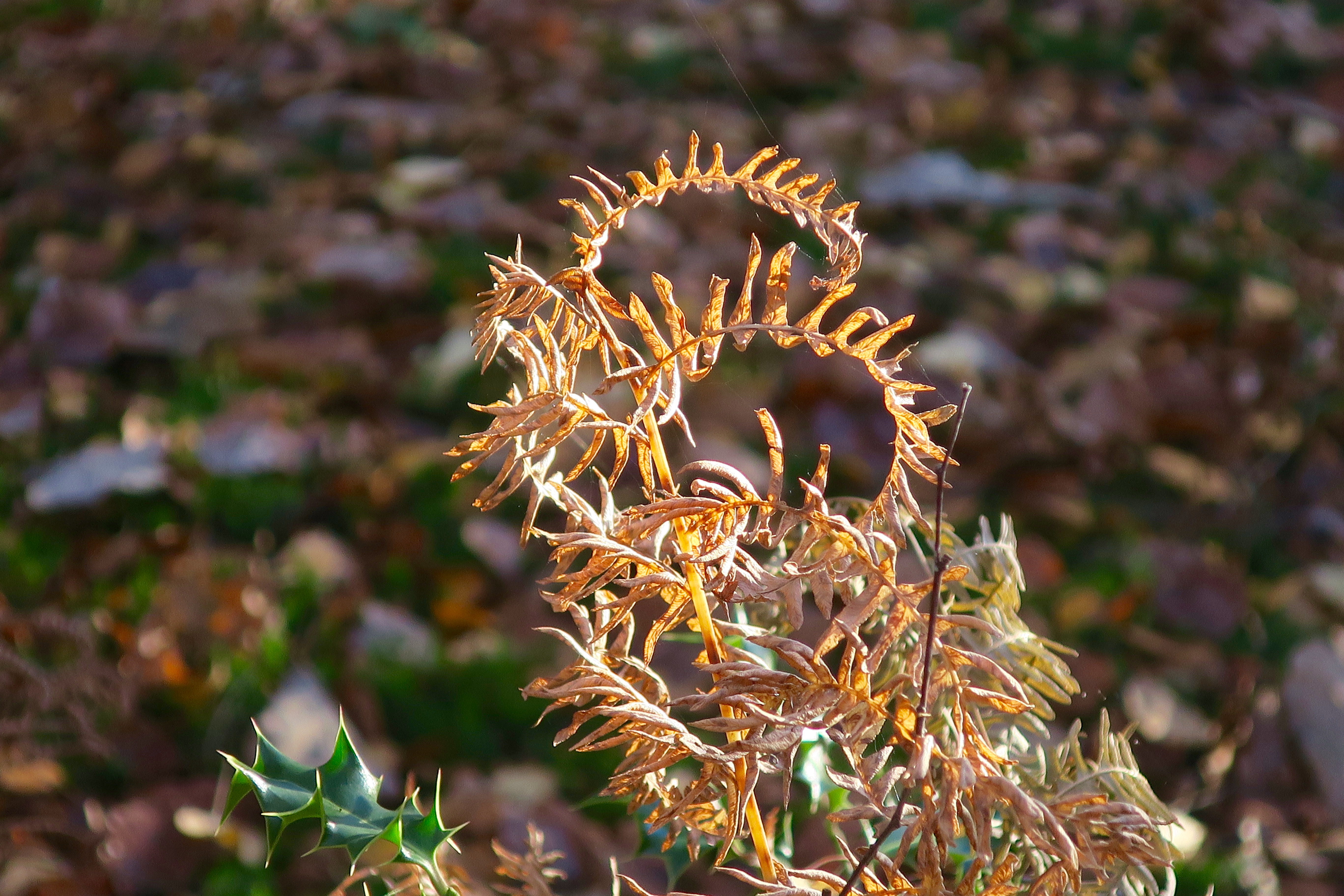
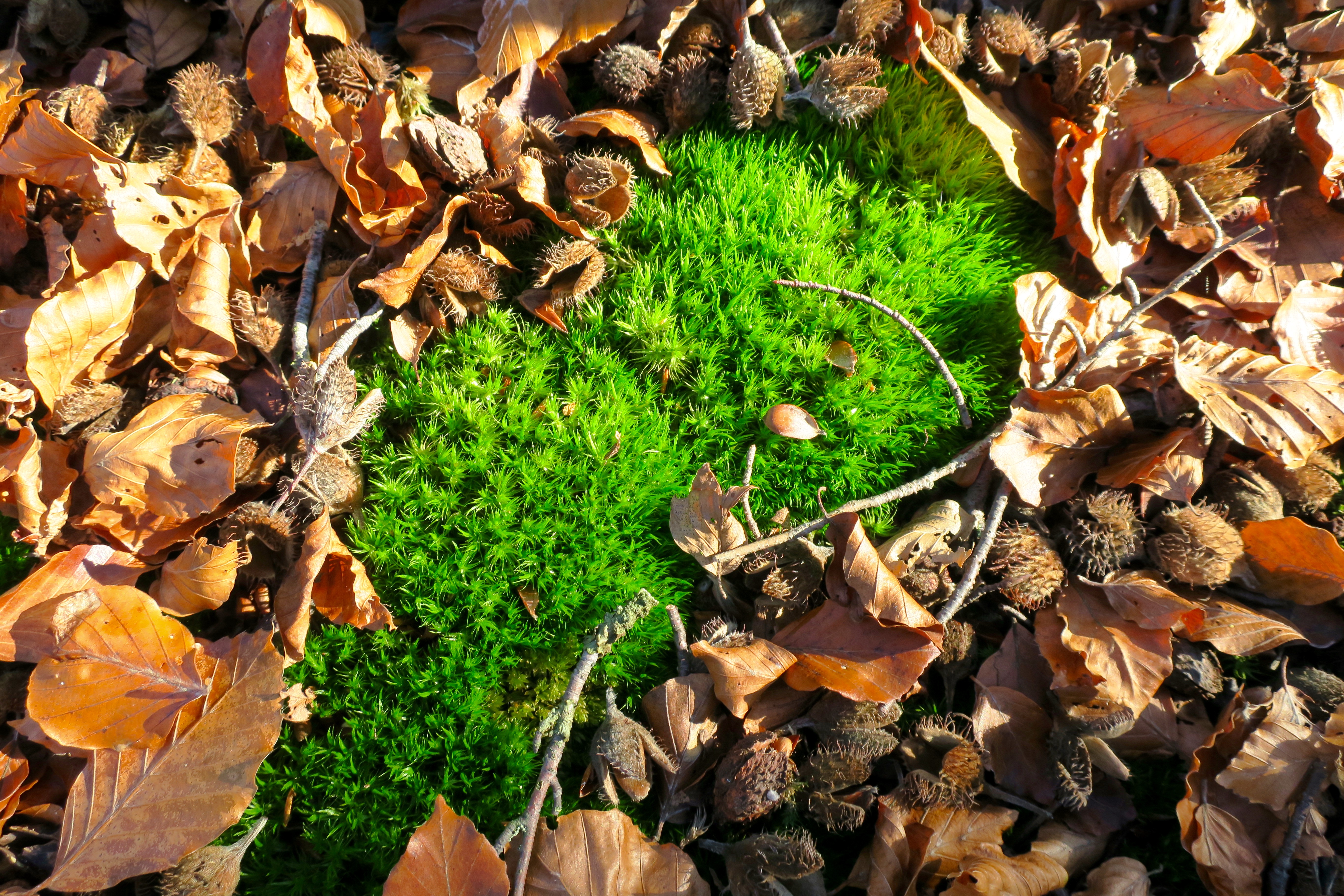
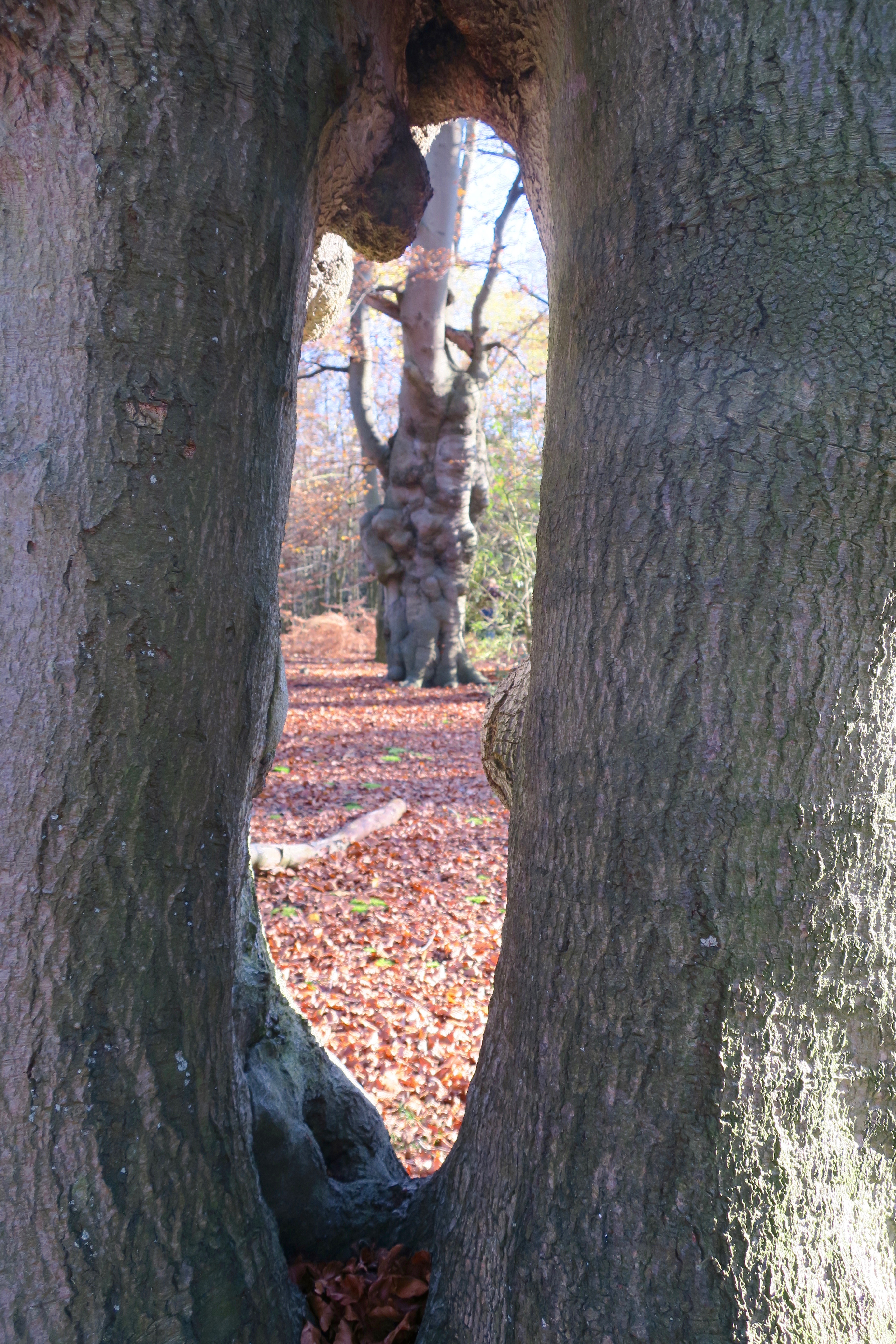
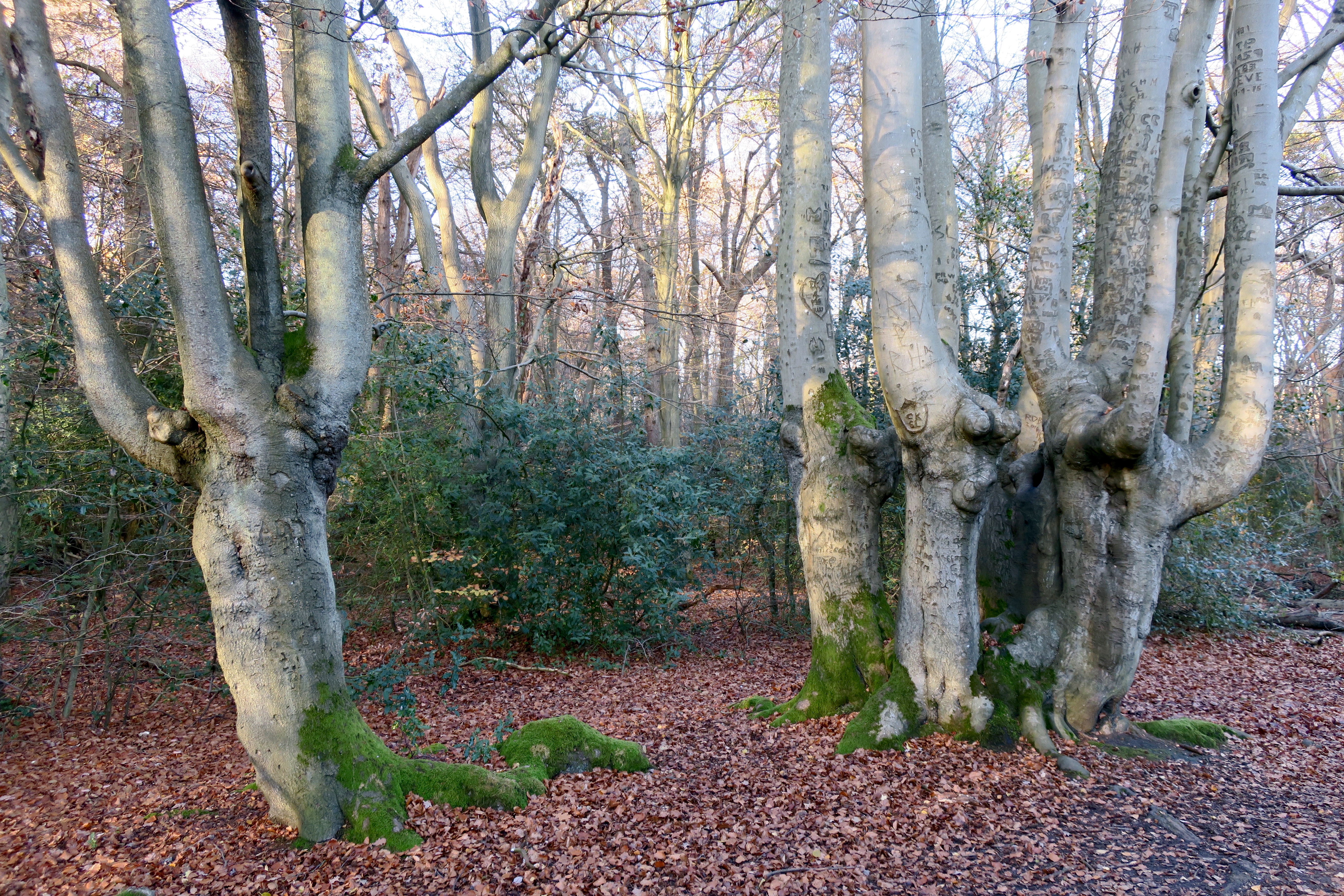
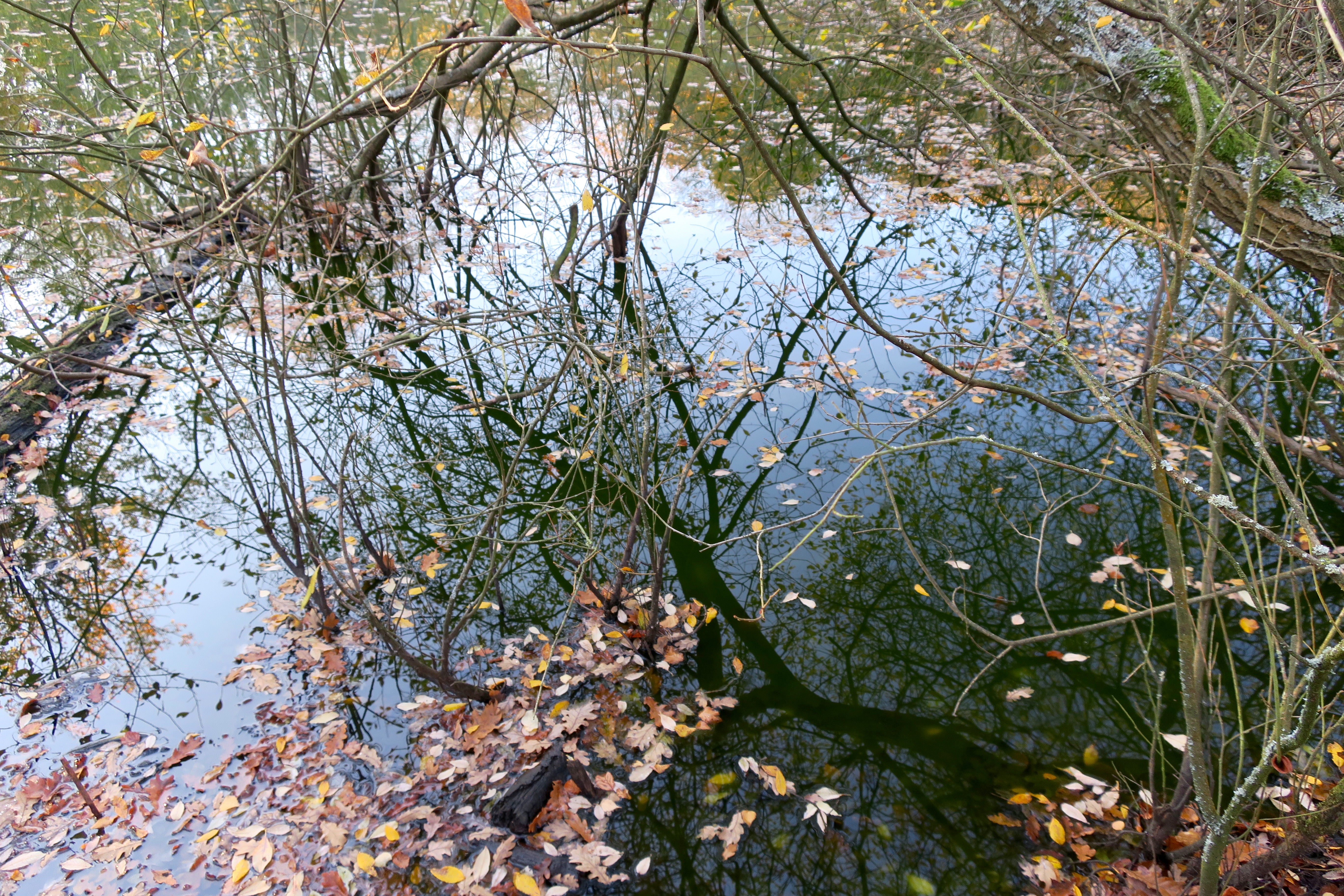
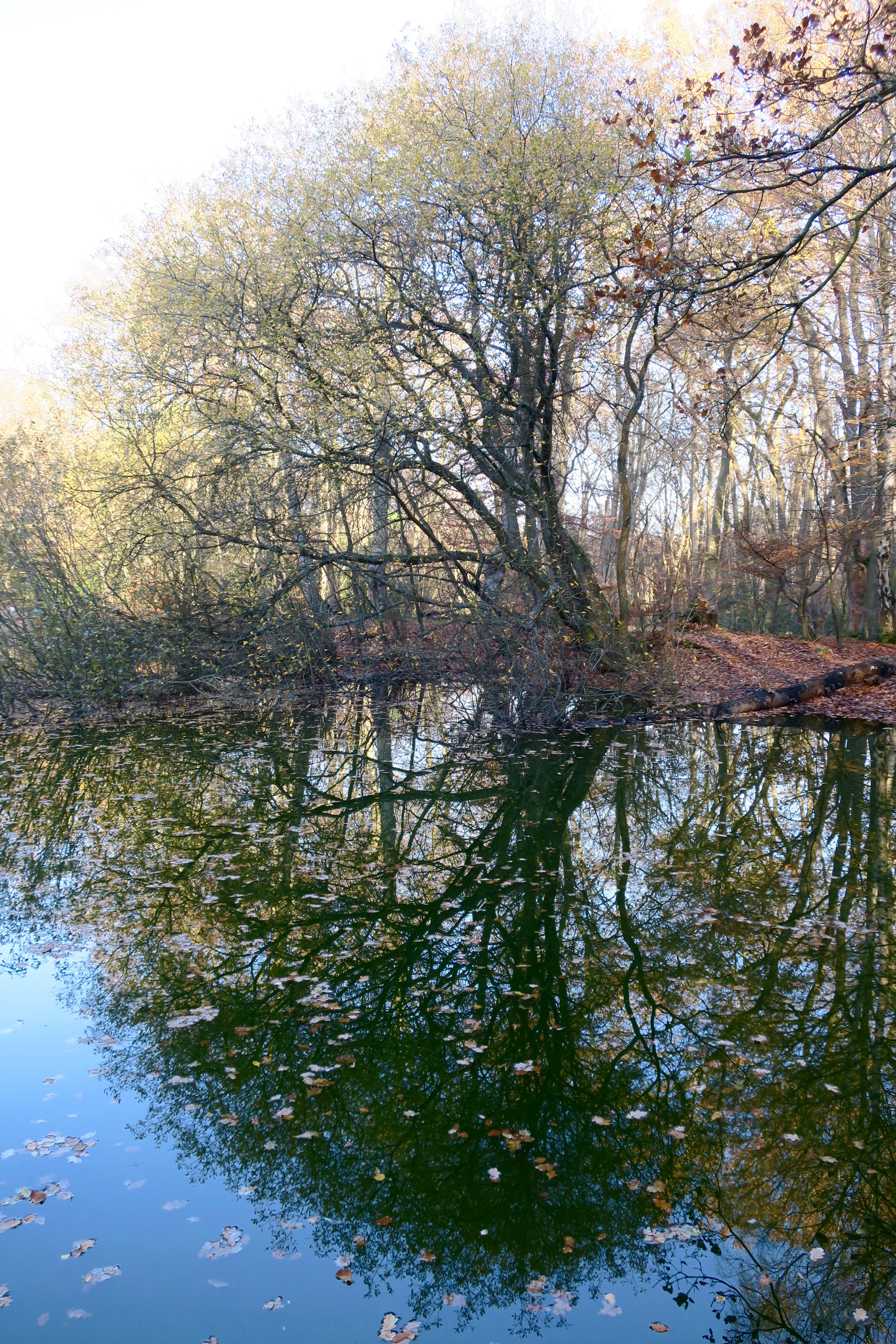

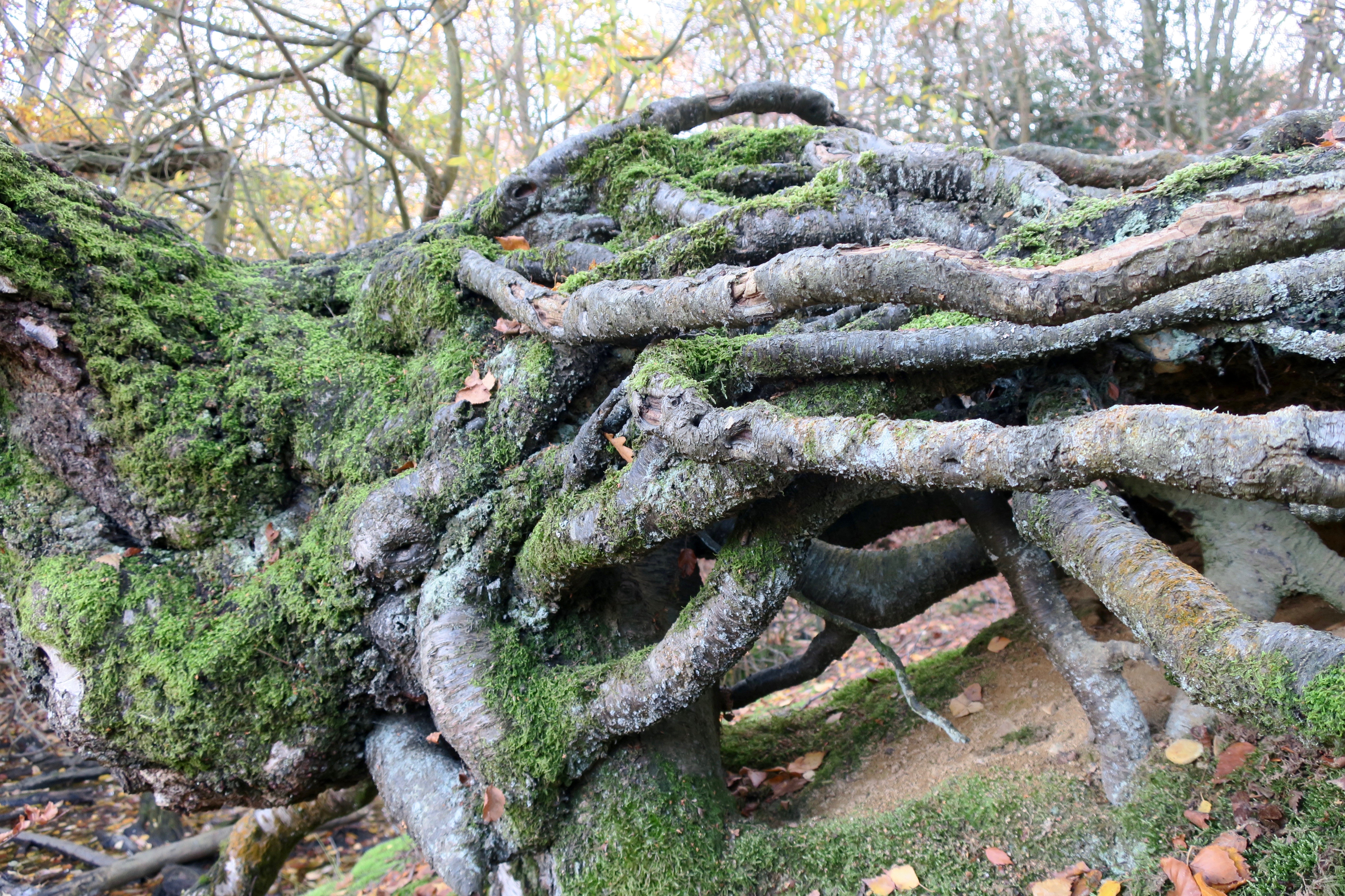
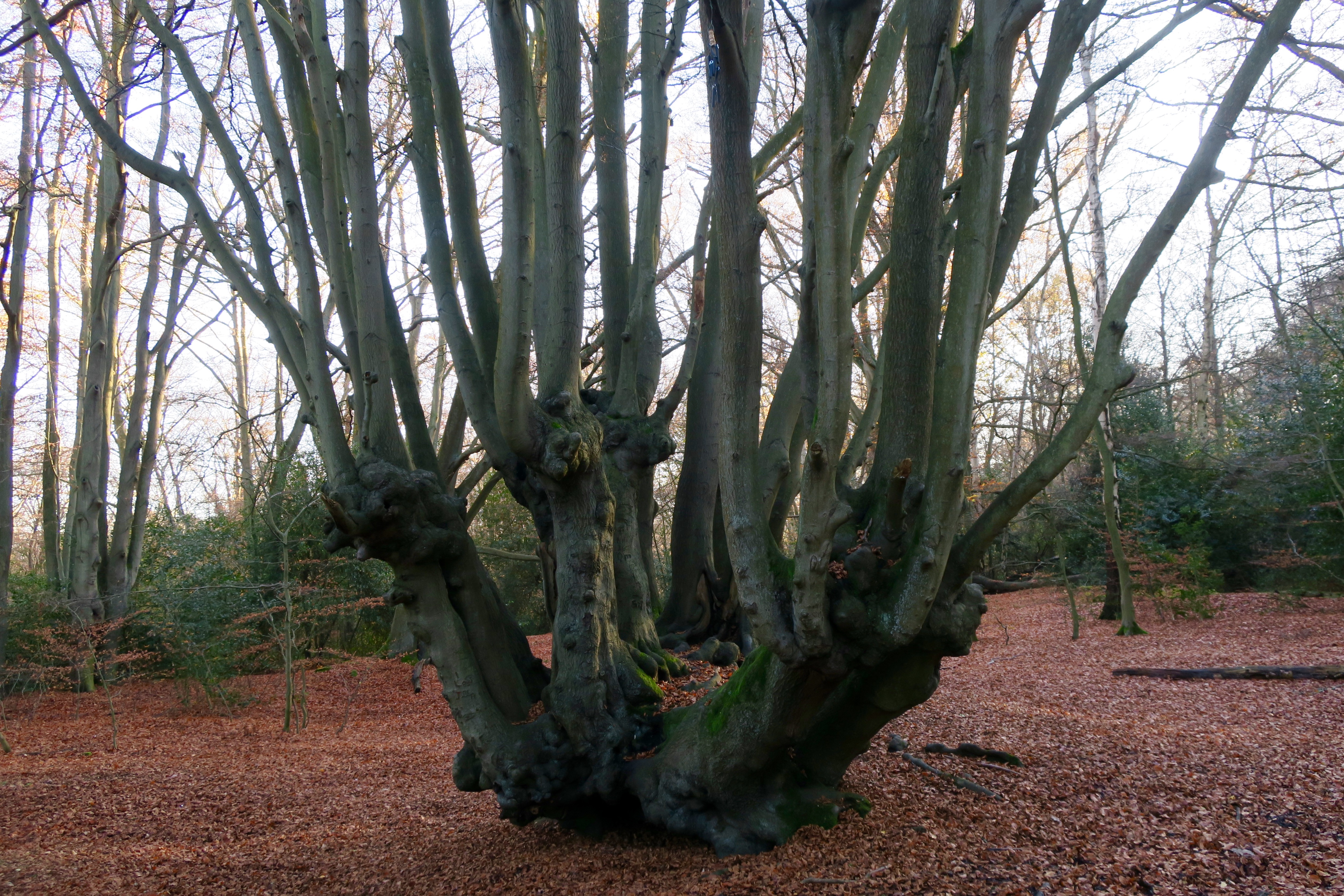
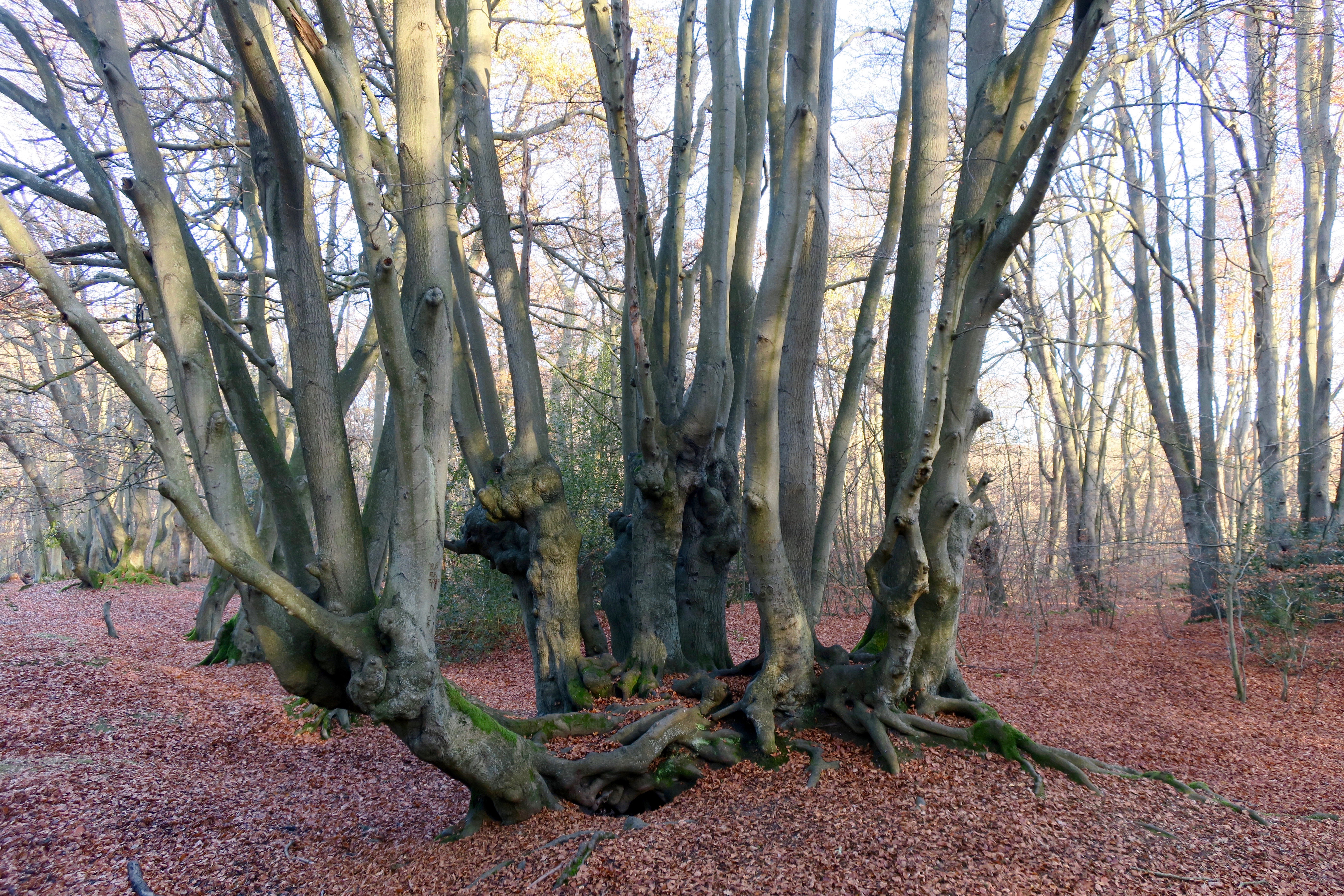

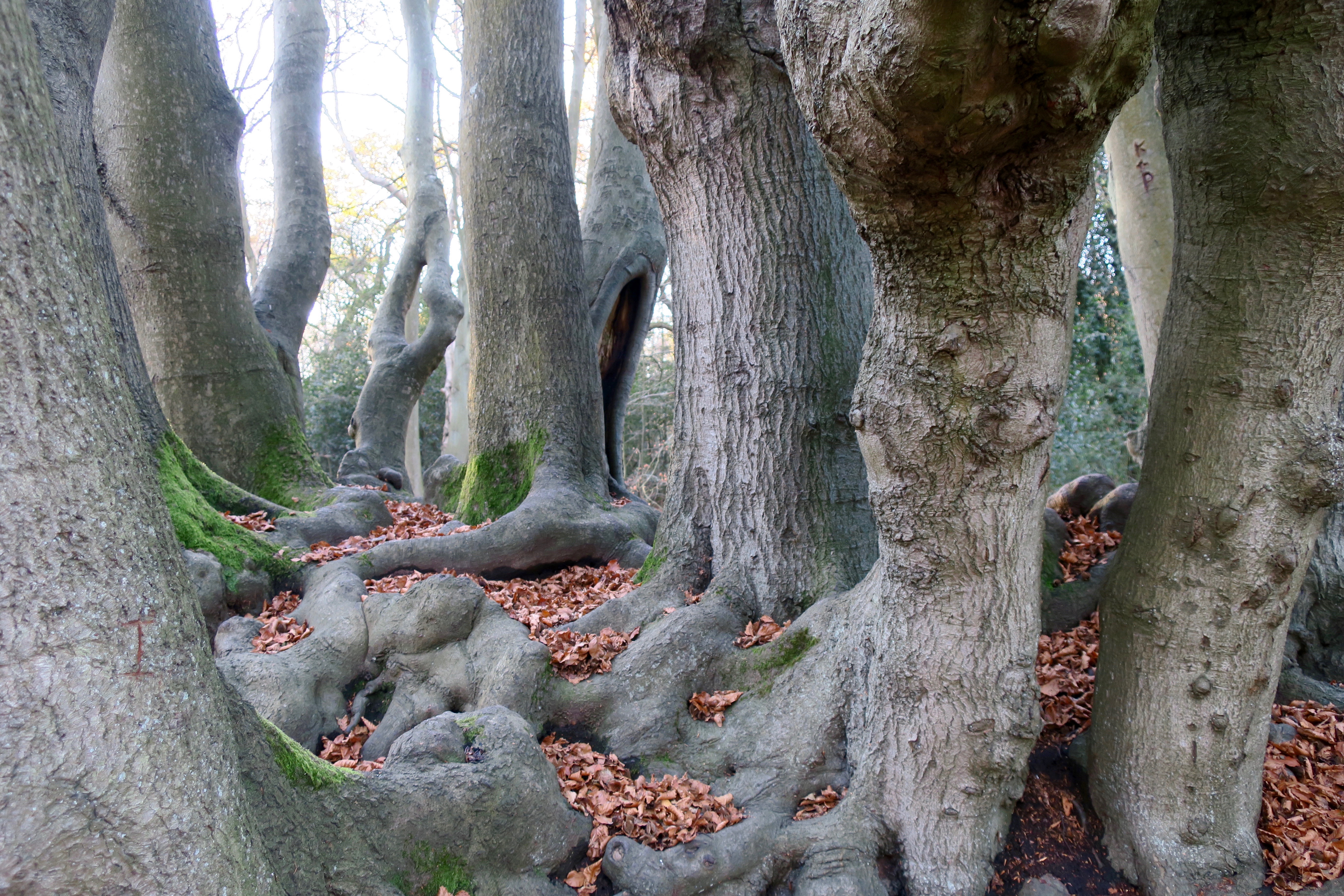
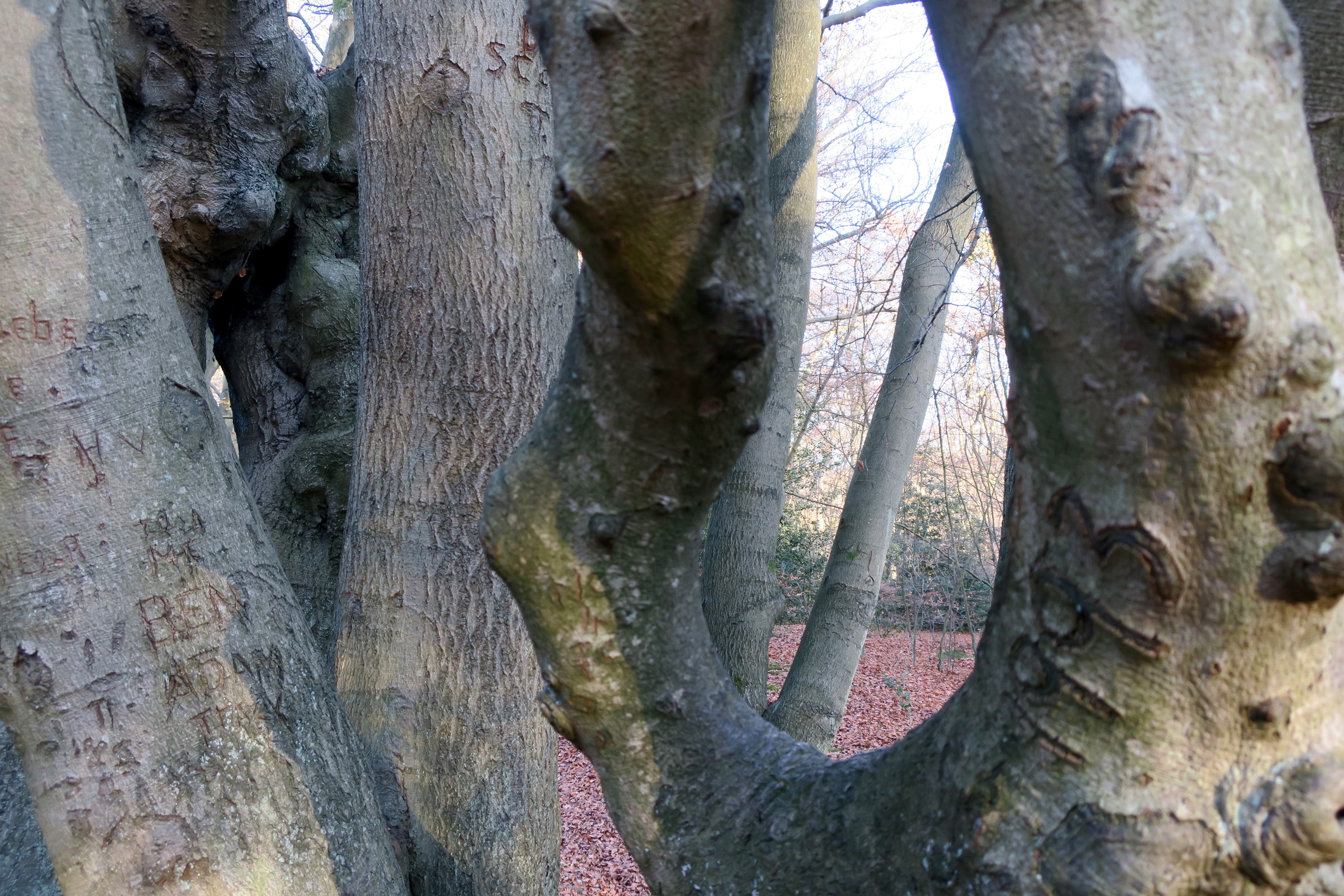


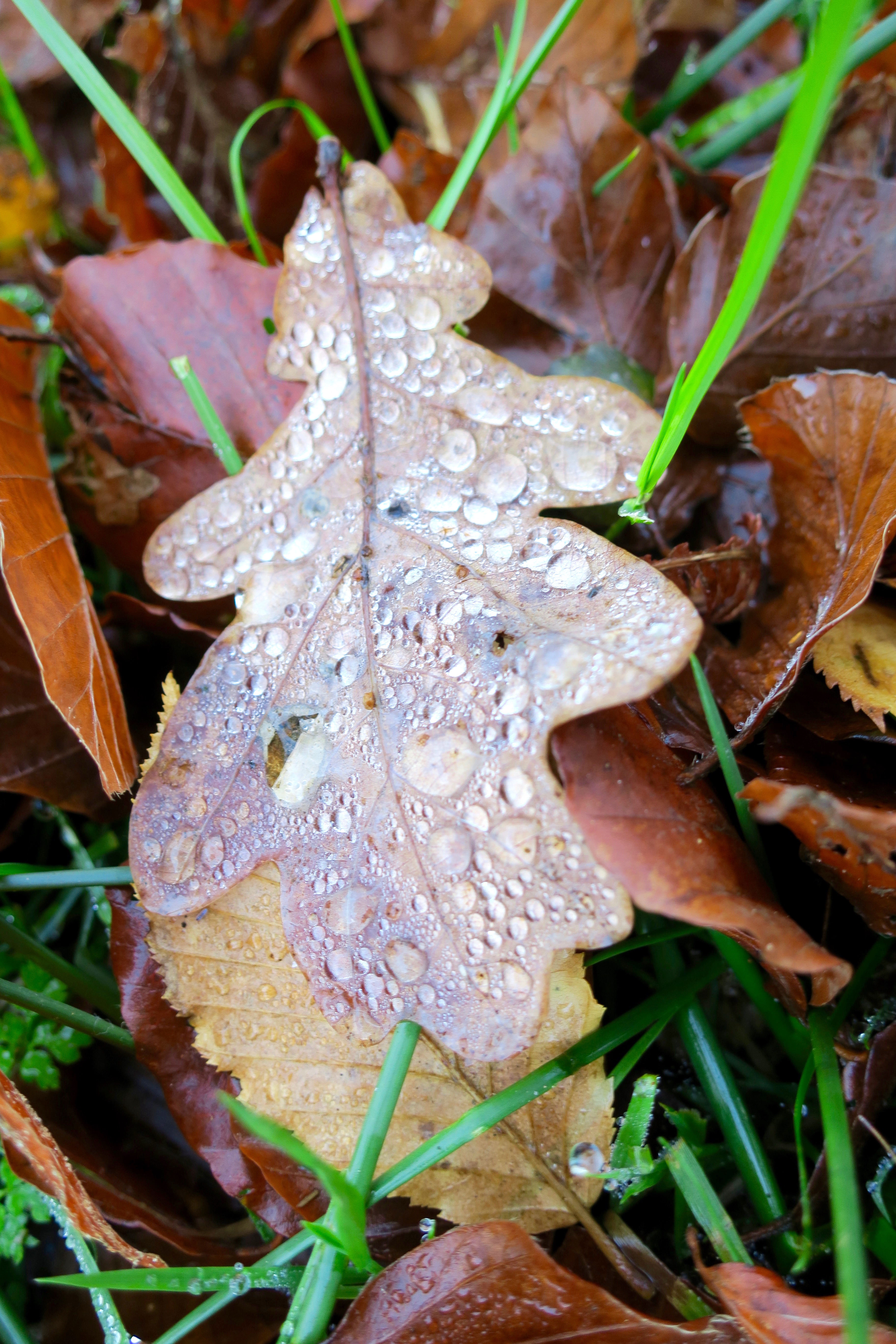
A beautiful leafy arboreal fungi essay Chris and Sue, and such wonderful light. What a memorable autumn!
Thanks Chris. Perhaps one day we should have a Rowley Gallery walk in the forest?
Glorious! Thank you both for being there. Do you know why trees were cut to the ground, then left to grow to head height? I’ve read beech mast was food for livestock, and wondered if it had to do with that. Always more questions than answers from one of your posts!
Dear Pat, thanks for looking. I think trees were coppiced to promote new growth, then harvested for poles and posts for fencing, building etc and firewood for charcoal. Later when cattle were introduced into the forest the trees would be pollarded above cattle browsing height. Then latterly they lapsed and were not cut again for a long while. The forest is full of fascinatingly shaped trees but it’s rare to find a tree that was coppiced then later pollarded. Usually it’s one or the other, or neither.